- 2024 TRAVEL UPDATE
- Work with us
- Beyond Bologna
- Regions of Italy
- Travel books
- Best group tours
- Itineraries
- Accommodation guide
- Italian phrases for travel
- Rocket Italian review: 2024 update
- Ultimate Italy Travel Planner
- City Planners
- Essential Guides
- Italy themed gift ideas
- Trip planning services

How to plan an Italy trip
Want to know how to plan an Italy trip? You’ve come to the right place. Italy trip planning is one of our favorite things to do. So much so that we set up this website.
We wrote this article to take you step by step through planning your trip. From deciding when to go and how much it will cost to what to take and how to use your mobile phone, it’s all here to remove the overwhelm and make your trip planning easier. Even if you choose to hire a travel agent to assist with your bookings, it is a good idea to walk through these steps as it will help the agent build the best trip for you.
You can see an overview of the steps you need to follow in the article contents below. Follow our guide and you’ll be on your way to planning your own trip or choosing the right tour for you and your travel companions.
Article contents
Step 1 – Decide when you want to go and your budget
When to go to italy.
There is no bad time to visit Italy but there may be one that suits you better. Depending on your interests and the places you want to see you need to be aware of seasonal differences that you need to know about:
- Summer – June to August: peak tourist season, weather is hot and prices higher. Many Italians are on vacation and the coastal areas are very busy especially in mid August
- Fall / Autumn – September to November: September remains hot and busy in most of the major tourist centers. By October the weather is cooling and ferry services on the coast and lakes stop running. At this time grape harvest is in full swing. November is generally quite wet but there is lots of sunshine between the showers.
- Winter – December to February: As the weather cools so do the crowds. Attractions are much less busy and the lead up to Christmas is magical with lights and decorations in shop windows. In January and February restaurants in many coastal areas are closed. February’s Carnevale in Venice is generally one of the most expensive times to visit the city
- Spring – March to May: In March and April wildflowers bloom and the countryside is awash with color. Easter is a popular holiday for Europeans to visit Italian cities especially Rome, Florence and Venice.
NOTE: peak season in the most visited destinations is May – October.
Our favorite time to visit Italy in the shoulder months. In April and May and October and November the weather is generally sunny and mild, the crowds are manageable and you can find great value deals on your flight and accommodation.
Although we are past the worst of the pandemic and travel restrictions, things can change quickly – you can check our article Can you travel to Italy plus current situation. We update this regularly with the latest travel news.
READ: Our full article on the best time to visit Italy
How much will it cost?
This will depend on your expectations, interests and travel style. You can travel very cheaply in Italy if you visit lesser-known regional areas and avoid the big cities. Even in the big cities it is possible to find free attractions and budget accommodation if you know where to look.
If you want to see the main sights and enjoy experiences such as cooking classes, private boat cruises and wine tours then the sky is really the limit when it comes to cost.
Most travelers fall somewhere in the middle however and a reasonable daily budget per person for food, transport and activities is around €100 on top of flights and accommodation.
READ: Our full article on Budgeting for your trip to Italy.
Expert Assistance
Need some help planning your trip?
Book in for a trip consultation with our expert Italy travel planners ready to help you build your dream vacation in Italy whether that be a classic first timer trip or an off the beaten path adventure
Step 2 – Do some preliminary research and preparation
Where to research your trip to italy.
From online news and magazines, blogs, Instagram, Facebook groups (check out Italy Travel Planning ) and even podcasts like ours – there are thousands of resources online. I am sure you’ve already seen quite a few of them already. Sometimes endless options can be overwhelming so we recommend collecting ideas in an online folder or scrapbook and organizing them into destinations that you really want to see.
You’ll probably want to “do it all” but really have a think about your interests and what will best suit you and your travel style. Once you have some ideas, it’s best to consult a structured resource to check your assumptions and thoughts.
Traditional guidebooks definitely have their place for planning a trip to Italy. Well researched and structured, they’ll give you in depth information on destinations and sights to see as well as practical tips to help you plan. Even after 30+ trips to Italy we still consult guidebooks for new destinations we want to visit. You can find our favorite Italy guidebooks here .
Italy travel planners
We noticed that even guidebooks can provide too much information in the planning process so we created one page travel planners for the top places to visit in Italy. Our planners tell you the top sights, best viewpoints, must have experiences and our favorite places to eat (including best gelato stops) in each place.
You can print them off or keep them on your phone and there’s a link to an online map so you can map out your days. We have guides for Rome, Florence, Venice, Milan, Cinque Terre, Amalfi Coast and Sorrento. Our goal is always to simplify the trip planning process and we know you will find them useful.
DISCOVER: Our Digital travel guides and planners .
Group tour itineraries
Tour companies – like ours ! – put a lot of effort into designing tours that cover the main sights and even lesser known regions. They know the times it takes to get around and how long you can stay in each place to get a taste or feel for the destination.
We often check itineraries of places we would like to visit as an input into our own planning. Here are some recommended tour companies and itineraries to investigate.
Private tours
If you want maximum flexibility and comfort, consider a private driving tour . From the moment you land, to when you depart, you’ll have a personal driver with local knowledge making sure your trip is exactly what you imagined.
Passports and visas
At this stage of your planning it is a good idea to check the validity of your passport and if you require a visa. Citizens of the United States, Australia, Canada, United Kingdom and New Zealand may enter Italy and stay up to 90 days without a visa within an 180 day period. You must have 6 months validity on your passport when you enter Italy. Go and check this now as it can take several months for new passports to be processed.
All other nationalities should check this Italian government site that will walk you through whether a visa is required for your visit.
Citizens of the European Union can travel with photo identification.
Please note – this information is subject to change and it is always best to check with your local foreign office for the latest advice on travel to Italy.
- United States – click here
- Australia – click here
- United Kingdom – click here
- Canada – click here
READ: Can you travel to Italy plus current situation .
Step 3 – Confirm your itinerary
Itinerary planning is where many people get stuck. We understand. There are so many amazing places to see in Italy that deciding where to go and how much time to spend there can be hard. As a general rule, we like to spend a minimum of three nights in each place to minimize time spent traveling and also enjoy each place as much as possible. So if you have a 10 day trip then 3 main stops would be a good baseline to start with.
Where to go
From your research, you probably have an idea of where you want to go. You may want to visit the popular cities and regions on your first trip however each city and region in Italy offers something special.
Most popular cities
Most popular regions.
On our site, you can also browse Italy’s lesser-known cities and regions on the destinations page or visit our article on hidden gems in Italy for inspiration.
Itinerary suggestions
As a general rule, for a 3-5 day trip we suggest choosing one destination – a city or region. If you have a week to 10 days then you can plan 1-3 places in either the north OR south of Italy. In a two week trip you could cover 3-4 places and see both north and south.
Try not to squeeze too much in. It’s easy to underestimate transit times and getting in and out of airports and train stations. Plus you want to have plenty of time to enjoy yourself and soak up every last moment.
Suggested itineraries
If it is your first trip to Italy, like many first-time visitors you may choose to start your journey in Rome and visit Florence and Venice. This 10 day Italy itinerary covers that route. It includes detailed instructions on how to make the most of your time in Italy.
Want our FREE Italy trip planning checklist? >> Click here .
Alternative 10 day itinerary suggestions
Most people travel to Italy for 10 to 14 days so we built some itinerary suggestions to cater for that time frame that cover both northern and southern Italy.
Group Tours
Packaged group tours of Italy are a popular way to travel and avoid the stress of planning your own trip. They are also a great option if you would like some company along the way. Here is a quick summary of popular tour companies:
- Untold Italy small group tours – we run exclusive small group tours for food and wine-loving travelers wanting to get off the beaten path to see hidden Italy beyond the major cities and tourist areas. We lead groups of 14 people on journeys of discovery to experience the regions of Sicily, Puglia, Piedmont, Tuscany, Umbria, Bologna and surrounds, Capri and the Cilento coasts > learn more
- Trafalgar – popular and well respected brand appealing to the 50+ age group. Travel is by coach and the focus is on culture and history. Expect group sizes of 40-45 passengers and 4 star hotels. Trafalgar also include interesting local experiences such as wine tastings and unique stays in their itineraries. Check out their popular Best of Italy tour
- Intrepid Travel – small group tours with an average of 10 travelers with plenty of free time built in for exploring. Their popular Italy Real Food Adventure is an 8 day itinerary that showcases their travel style well
- Peregrine – Intrepid’s premium brand offers some interesting hiking tours of the Italian Lakes and Amalfi Coast
- Tourradar – is a market place for group packaged tours where you can browse hundreds of package tours by different operators, and by date. You then filter by your interests and age group and read detailed reviews. You can browse fully organized tours to independent self-drive or train itineraries
READ: Our full article on the Best package tours for Italy .
When should you start booking your trip?
Italy is one of the most visited destinations in the world, so in our opinion, it is never too early to start the booking process. Book accommodation as soon as possible, and at least 6-12 months in advance especially for peak times in July and August. We prefer to pay the higher rate for flexible bookings on both Booking.com and Plum Guide .
Day tour and attractions also sell out months in advance at peak times. In 2020 our preferred booking site GetYourGuide refunded all tours canceled due to the pandemic and stand by their policy of allowing cancelations with a full refund up to 24 hours before your activity starts.
Flight bookings will depend on where you are flying from. For long haul flights the best deals are generally found 6-12 months in advance while deals pop up regularly for travel within Europe.
Rail bookings can be made up to 4 months in advance on high speed intercity and standard intercity trains.
Step 4 – Book your flights, inbound travel & insurance
Flights to italy.
It is easy to fly direct (or with a single stop) into Italy from most places in the world. Rome Fiumicino [Leonardo da Vinci](FCO) international airport is the main hub for air traffic but you can also easily fly into Milan Malpensa (MXP) or Venice Marco Polo (VCE) airports from major hubs around the world.
There are many other airports throughout the country that can be accessed within Italy and Europe. Pisa is useful for trips to Tuscany and the Cinque Terre and you will need to fly into both Sicily and Sardinia.
To source the best flight deals to Italy we use a combination of Skyscanner , CheapoAir and Google flights .
- Skyscanner – portal where you can view cheapest days and routes to fly and set alerts for price drops
- CheapoAir – uncovers the best deals on first and business class flights around the world
- Google flights – great for checking schedules and airline routes
Secure the best deals by setting up alerts on Skyscanner for the month you wish to travel and wait for price drops. It’s good to have a price that you wish to pay in mind but be prepared to be flexible on dates and stopovers. It is often cheaper to fly into Milan rather than Rome and that city is a useful entry point for northern Italy itineraries.
TIP: always use an incognito browser window to search for flight deals. Prices are amended up for users known to be searching for specific dates and times.
Inbound rail from within Europe
Major Italian cities – Milan, Rome, Florence and Venice – have fantastic fast speed train links from other capitals and major cities in Europe. The website Seat 61 is a great resource for planning train travel within Europe.
Bus travel to Italy
If you’re on a tight budget and traveling within Europe, then you might want to consider coming to Italy by bus. Low cost operator Flixbus covers 3,000 destinations in 39 countries.
You can compare schedules and prices using Omio – a useful site for booking a combination of train, bus and air travel within Europe.
Organize travel insurance
Once you have booked your flights or tour, we recommend organizing travel insurance straight away. The main reason you should purchase insurance is to cover health costs and emergency repatriation to your home country should you fall ill. Since 2020 you need to check whether there is cover provided for issues relating to covid19 however general health cover is recommended regardless.
Cover for cancelation, delays and loss of belongings is a bonus and again they may not apply under pandemic conditions. You need to read all the terms and conditions of your cover including any exclusions before you commit to buy.
Policy costs vary by your country of residence, what is covered, age, existing conditions and the insurer. You can visit Worldnomads for a quick quote. We use this company for our family travels and find the cost, coverage and claims process to be good to excellent.
Another option if you are in the United States is Safety Wing’s Nomad Insurance . Unfortunately neither option provides policies for those aged over 69. In this case you can try Travel Insurance Master – a service that allows you to compare quotes and insurance policies.
Step 5 – Book accommodation and transport
Accommodation.
Choosing where to stay at each stop is an important part of itinerary planning. Italy has many different options for tourists and you can expect the usual range of hotels and bed and breakfast accommodation as well as apartments and villas.
If you plan to spend any time in the country, consider staying at an agriturismo or farm stay. This is accommodation offered by Italian farmers who earn additional income by providing rooms and meals. Very popular in Italy and Europe, prices ranges from budget to luxurious. You can find agriturismi (plural) with swimming pools, hammams, restaurants and wine cellars. We always try to build them into our itinerary.
LISTEN: Find out about farm stays in Italy in this podcast episode .
How much will accommodation cost?
Here is a rough guide to average prices for a double room. This will vary with prices higher in popular areas at peak times
Upscale / Luxury – €210+ [USD $240+] per night Midrange / Boutique – €120-260 [USD $135-295] per night Budget / B&B – €70-130 [USD $80-150] per night Ultra budget / Hostel or shared room in AirBnB – €30-45 [USD $30-40] per night
Best accommodation sites
Our favorite sites for booking lodging are Booking.com and Plum Guide – between them, you’ll find a huge range of options from hotels and resorts to bed and breakfast, apartments and farm stay accommodation.
Plum Guide is particularly useful for longer stays in apartments and villas and if you’re traveling as a family and need some extra space. Use the code “Untold5” for a 5% discount here .
Other sites we use and recommend
- BookingsForYou – beautiful villas and apartments in Tuscany, Italian Lakes and Puglia – 5% for readers when you mention our site or code – UntoldItaly – when booking
- VRBO – has some great options for long stay villas and apartments, particularly on the Amalfi Coast
- Agriturismo.it – great for finding smaller farm stays but the booking engine is terrible. You can usually find the same properties on Booking.com
- Airbnb – we have used Airbnb on many occasions in Italy but are now finding better value and booking conditions on Booking.com and VRBO
LISTEN: To more accommodation options and what to look for in this podcast episode .
Further reading:
- Where to stay in Rome – a district by district guide to the best areas to stay
- Best places to stay in Florence – neighborhoods and areas best suited to your trip
- Where to stay in Venice – a neighborhood and area guide
- Where to stay in Milan – best areas, places and hotels
READ: Our Italy accommodation guide .
Transport while in Italy
As a general rule, if you are traveling between cities and major towns then the best way to travel around Italy is by train. If you want to explore the countryside and small villages you will need to rent a car.
When you are mapping out distances to travel between destinations use Google maps or Rome2Rio .
Train travel in Italy
Trains in Italy are modern and efficient. Fast speed services link the major cities and regional trains connect smaller towns and villages. Two major train networks operate throughout Italy – Italo and Trenitalia .
You should book in advance for high speed intercity services where seats are allocated. If you purchase non-flexible tickets you can make significant savings with advance bookings. They are not required on regional services.
READ: Our Complete guide to train travel in Italy .
Recommended train booking sites – Omio and The Trainline
You can book directly with the Italian operators or an easier way is with:
Omio – compare train times and prices across both Trenitalia and Italo schedules and keep your ticket details on their handy app. Click here to search for rail tickets on Omio
The Trainline is a similar service to Omio offering schedules, pricing and booking for train companies in Italy and Europe. They also have a useful app and great instructions in English. Click here to search for rail tickets on The Trainline
High speed train intercity travel times on popular routes
Rome to Florence – 1 hour 30 minutes Rome to Naples – 1 hour 15 minutes Rome to Milan – 3 hours Rome to Venice – 4 hours Florence to Venice – 2 hours Florence to Milan – 2 hours
Car rental in Italy
One of the best ways to see the smaller towns and countryside in Italy is to rent a car and take to the open road. Driving in Italy is quite straightforward. You just need to do some forward planning and use your common sense. Here are some tips to
- You are required to carry an International Drivers Permit – these can be arranged in your home country at minimal cost
- Standard transmission on cars is manual or stick shift. If you want to rent an automatic car expect to pay extra, if you can find one available
- Rent the smallest car you can to fit you and your luggage – roads are often narrow and you don’t want to get stuck!
- Heavy fines apply if you enter ZTL zones or historic districts where driving is not allowed
We use both Car Rental by booking.com and AutoEurope to find the best car rental deals in Italy including one way options. They both search international and local providers so you get a wide variety of choice and there is 24/7 support if you need it. AutoEurope is usually your best option if you want a one way rental.
Click here to search for car rentals in Italy with Car Rental by booking.com .
READ: Our guide to Renting a car in Italy .
Internal flights
If you want to visit the islands of Sicily or Sardinia, or travel very long distances, flying makes the most sense.
Check on Skyscanner or Google flights for routes and prices. Remember to set alerts for those routes you want to fly and book early for flights in the summer months.
READ: Our guide to all transportation in Italy .
Step 6 – Book Attractions, tours and activities
Major attractions.
The major cities of Italy – Rome, Florence, Venice and Milan – are some of the busiest cities for tourists in the world. And most visitors want to spend time at their famous attractions
We strongly advise you to prebook advance skip-the-line tickets for the following attractions – the Colosseum, Vatican Museums, Uffizi Gallery and Doge’s Palace. Otherwise, you could spend precious vacation hours standing in lines to enter these sites. Note – in winter months booking in advance is not as necessary.
We have given you the official booking sites and an alternative for approved ticket partners should you have trouble using the official site – unfortunately, that happens a lot! The direct sites are usually cheaper but the partner sites are generally more user friendly. Always check the terms and conditions of your purchase, particularly in relation to changes and refunds. GetYourGuide has a very easy cancelation policy which in many cases allows cancelation with refunds up to 24 hours prior to departure.
- Colosseum – official ticket site OR buy Colosseum tickets on Get Your Guide
- Vatican Museums – official ticket site OR buy Vatican Museum tickets on Get Your Guide
- Omnia pass – Colosseum + Vatican + one other museum + hop on, hop off bus – click here for details
- Uffizi Gallery – official ticket site OR buy Uffizi tickets on Get Your Guide
- ‘David’ statue [Accademia Gallery] – official ticket site OR buy Accademia tickets on Get Your Guide
- Duomo roof climb – official ticket site OR buy Dome climb tickets on Get Your Guide
- Doge’s Palace – official ticket site OR buy Doge’s palace tickets on Get Your Guide
- San Marco basilica – official skip the line tickets OR buy a tour of San Marco including tickets on Get Your Guide
- ‘Last Supper’ painting – official ticket site OR buy Last Supper tickets on Get Your Guide
- Duomo rooftop – official ticket site OR buy Duomo tickets on Get Your Guide
READ: Our full review of Get Your Guide .
If you want to learn about the sites you are visiting then we recommend a group day tour. We prefer small group or private tours where you learn about the culture and history of the places you are visiting. It’s so much more fun than reading plaques and you are also able to ask questions.
So make sure to build in a couple of tours when you are planning a trip to Italy.
Our favorite small group tour companies are Take Walks (formerly Walks of Italy) and Liv Tours and we prefer With Locals for private tours. Both offer very well designed and engaging tours of the major sights in Italy as well as interesting food and cultural tours.
- Take Walks have a longstanding reputation for excellent service, groups under 20 people and guaranteed departures. So if you are the only person booked on a tour it will still go ahead. We recently enjoyed our Colosseum at night tour and day trip to Tuscany with them
- Liv Tours – family run Italian company offering true small group tours of 6 people or less. All of their tours use expert guides who will help you fall in love with Italian history, culture, and food. Tours include a popular golf cart tour of Rome’s highlights and their fascinating Women’s history tours
- With Locals offer great value private tours. You choose from a series of set itineraries and guides in cities across Italy. There are tours focused on history, food, culture and other themes or they can be customized them for your group. We tried their 10 Tastes of Naples recently and it was lots of fun. They also have great options for families
- Eating Europe – food tour specialists who will ensure you discover the best local dishes
Save 5% on Liv Tours with code – ‘untold italy’ >> click here to browse tours
- Rome: A 3 Day Itinerary
- The best tours in Rome
- Unmissable day trips from Florence
- Day trip from Rome to Pompeii
- Best tours of the Vatican
- Tickets and tours for the Colosseum
- Rome’s best food tours
Activities and experiences
Seeing the sights of Italy is always a treat but you’ll also love immersing yourself in Italian culture. These days you can choose from a wide range of experiences and activities. From food and wine tours, to football matches, concerts and exploring the countryside by vintage car, there are memorable experiences to suit you.
Recommended experiences
- Cooking class with Nonna Nerina near Rome – Grandma Nerina teaches you how to make fresh pasta and welcomes you into her home. If you can’t wait until you get to Italy to do this she also does online classes
- Capri boat trip – small group on a private boat means a slower pace and more time to see the island. You can read what to expect on this day trip here
Our favorite companies for searching for interesting and unique things to do in Italy are:
- Cookly – cooking class and food and wine experiences like truffle hunting from small operators across Italy
- Get Your Guide – has the biggest listing of tours and experiences
Step 7 – Get ready for departure
Organize your money and credit card.
The local currency in Italy is the € Euro.
You do not need to carry too much cash when you are there. Credit and debit cards VISA and Mastercard are widely accepted while American Express and Diners Club are not as popular. You may want to consider a foreign currency card like the Wise Mastercard where you can convert Euros easily and cheaply from your US dollar, Australian dollar or Canadian dollar accounts (plus many other currencies)
Be aware of foreign currency charges and ATM withdrawal fees applied to your account when you are abroad. You may want to review the cards you are taking with you prior to your trip. We recommend that you take two – one as a back up for emergencies. And inform your bank before you go. Sometimes they can be overzealous and place a block on your card if they see unusual activity.
Book airport transfers
Planning your arrival in Italy is recommended. Most of the airports are a fair way out from the city center – and in the case of Venice, in the middle of a lagoon!
Compare different transfer services on Suntransfers – a company that specializes in transfer options from major airports. They have options to suit all budgets and prices for coach, mini bus, private car and limo services.
Rome – transfers from Fiumicino airport
Taxis are fine to take in Rome. There is a set rate into the center of €48 and the ride takes around 45 minutes. Or, if you would prefer to be met at the airport you can pre-book a transfer. A transfer is the best option if you are traveling with more than 2 people and have several items of luggage. We recommend:
- Welcome Pickups – available 24/7, a private car transfer means you are met at the arrivals hall and will take between 30 minutes and one hour door-to-door.
- Suntransfers – offers a wide range of vehicles for groups of all sizes. Transfers can be canceled up to 48 hours in advance with no penalty.
Another popular way to transfer into Rome is to take the Leonardo Express train . This non-stop service between Fiumicino and Rome Termini (the main station) takes 32 minutes. Trains depart every half hour from 6:08 to 23:23, and the cost is €14. You can purchase tickets at the station on the day. Unless you are staying close to Termini you will then need to get a taxi to your accommodation.
The cheapest transfer option – this bus goes direct from the airport to Termini – €6-7 one way.
READ: Our full article on Rome airport transfers .
Venice transfers
The water bus company Alilaguna runs shuttles every 15 -30 minutes in peak season to and from the airport and the islands on the lagoon. This bus stops at San Marco and Rialto as well as some other secondary stops. The fare is €8 one way €15 return and the journey takes 1½ hours – you can book online here
A private boat transfer or shared transfer in a water taxi is the fastest (and most glamorous) way to transfer to your accommodation in Venice. Journey times and prices depend on the number of people in your party and exclusivity. A direct private transfer to the airport takes around 45 minutes.
- Private transfer – around €200 for 6 people – book here
- Shared water taxi transfer – around €32 per person – book here
You can also take a taxi (cost €25) or express airport bus to Piazzale Roma (cost €8) and then take a vaporetto (water bus) or walk your hotel/accommodation. A one way trip on the ferry costs €7 per person and is valid for 60 minutes.
READ: Our full article on Venice airport transfers .
Florence transfers from Florence airport
Florence airport is very close to the city center and a 15 minute taxi ride away. There is also an airport bus that takes around 20 minutes. A 20 minute tram ride takes you to the main Santa Maria Novella train station and costs €1.50.
Florence transfers from Pisa airport
Many people fly to Pisa to reach Florence as it is a larger airport. If you arrive during the day take the PisaMover train to Pisa Centrale train station – journey time 5 minutes. Then take a train to Florence. Starts at 6.00 am and the last train departs at midnight and it costs €5.00.
On our last visit we arranged a transfer with Suntransfers as we arrived too late for the last train. There is also a coach transfer option.
Amalfi Coast or Sorrento transfers from Naples airport or train station
We recommend organizing a private transfer for this journey. The train, ferry and bus via Sorrento can take 4 hours while a car service is around 1.5 hours. You can compare different services on Suntransfers – a site specializing in ground transportation.
You may find sites or groups where specific drivers are recommended. We do not recommend booking a driver this way for safety reasons – how do you know that the person recommending the driver is reputable, let alone the driver? And also for practical reasons – small operators may not have capacity or availability.
Plan how to access the internet
Consider how you will access the internet on your trip. You may be happy to disconnect and use paper or offline maps however many of us need internet access.
Italy has high speed internet and there are many options to stay connected depending on your needs. If you use minimal data and are happy to use offline maps and guides then you should be able to get by using wifi at your hotel or accommodation. Do not expect wifi to be available in restaurants and cafes because in Italy restaurants are for eating.
If you plan to use wifi make sure to turn off international data roaming before your trip to avoid unpleasant bill surprises.
Paid internet options
- Use your provider’s roaming plan – usually very expensive and slow speeds if coming from outside Europe
- Local SIM – purchase a tourist SIM before your depart or when you arrive that has enough data for map navigation and research. Italian provider TIM comes highly recommended and there are outlets at the airports and train stations
- Portable wifi device – connect multiple devices to high speed internet for reasonable prices. We use and recommend Solis Wifi (Get 10% off with our code – UNTOLDM )
READ: Our full guide to Cellphones and getting online in Italy (SIMs, wifi and more) .
Packing for your Italy trip
The key to packing for Italy is to pack the minimum that you need. Many people like to take carry-on luggage only for their trips. This is a great way to travel as you will find it much easier managing trains, cobblestones and stairs that are a feature of travel in Italy.
But, most of us find that a challenge, so try to stick to a medium bag per person plus one carry on item. Large suitcases are not a good idea. You will also thank yourself if you consider your footwear carefully. Three comfortable pairs will see you through most trips.
Note – We have a complete packing guide coming soon.
LISTEN: to packing strategies in this podcast episode .
Must have items for your trip
- Luggage – get the size right with our guide to the best luggage for Italy
- Untold Italy travel planners – one page checklists of the must see sights, restaurants and gelato bars in Italy’s most popular places
- Collapsible water bottle – stay hydrated and fill up at free water fountains all over Italy
- Camera – for your vacation snaps. We recommend lightweight mirrorless models like these ones
- Packing cubes – these make packing, organizing your luggage and unpacking so easy. We love them!
- Power cube – don’t bring lots of bulky converters. This one has 3 USB ports
- Battery pack – keep all your devices charged
- Plug adapter – you will need one!
- Face masks – for your safety and you may be required to wear one indoors
- Hand sanitizer wipes – to keep germs at bay
READ: Our Complete packing guide for Italy .
Get started and plan your Italy trip now!
We hope you now have more confidence to start planning your trip to Italy. This will no doubt be a trip that you’ll remember and cherish for years to come. And, like many of us, you may find it sparks a passion to return to bella Italia again and again.
Latest Italy Travel Podcasts and Articles
Renting a car in italy – 12 top things to know, can you travel to italy – latest travel information [may 2024], italy in july – reasons to visit & what to expect, visiting italy in june – reasons to visit and what to expect, how to travel by train in italy, visiting italy in may – reasons to go and what to expect, episode #216: 10 reasons we love italy’s umbria region, visiting italy in april – reasons to go and what to expect, planning a trip to italy.
We love travel in Italy and sharing our knowledge. Read our Italy trip planning guide or join our FREE Italy travel planning community . Our 140,000+ members are happy to answer questions about your itinerary, how to get from place to place, the best places to stay and fun things to do.
Sign up for our news and podcast updates where we share mini guides, tips, exclusive deals and more and we'll send you our Italy Trip Planning Checklist to say grazie ! >> click here to subscribe
How to plan a trip to Italy
Book your individual trip , stress-free with local travel experts
- roughguides.com
- how-to-plan-a-trip-to-italy
Plan your tailor-made trip with a local expert
Book securely with money-back guarantee
Travel stress-free with local assistance and 24/7 support

written by Joanne Owen
updated 05.02.2024
Radiating vitality from its natty north to its stylish southern heel, there are plenty of reasons Italy attracts a remarkable range of traveller types. Given its fabulous food, sun-soaked coastline, picture-perfect panoramas, and all those extraordinary ancient sites, it’s no wonder Italy sparks a desire to return. But how do you plan a perfect trip to Italy? There’s simply too much to see — and fall in love with — during a single trip, and planning a stay in Italy can be overwhelming.
Step 1 – Best time to go and budget
Step 2 - decide where to go in italy, step 3 - pre-book accommodation and attractions, step 4 – get ready for departure, step 5 - plan your italy itinerary, step 6 - leave time to seize the day, take a trip designed by local travel experts.
The question "how to plan a trip to Italy" is often related to weather and budget, so let's dive into this first.
- Best time to visit Italy
When it comes to visiting Italy timing is everything. The best time to visit largely depends on your preferences and what you hope to experience. If you seek pleasant weather, manageable crowds, and cost-effective travel, spring ( April and May ) and fall ( September and October ) are the best times to visit Italy . Since these are known as the shoulder months, you're likely to enjoy a milder climate, fewer tourists, and more affordable accommodations. Conversely, peak season, from June to August , sees a spike in temperature, crowded tourist spots, and higher prices. However, there are a few key times to avoid, such as Easter Week and around Christmas when Italy becomes very busy and prices soar.
Remember though, the best time to visit Italy is when it suits your schedule and your interests
How much will it cost?
When it comes to costs, it varies greatly depending on where you go, when you go, how you travel, and your personal preferences. Here are some average costs to guide your budgeting process.
- Lodging : A budget hotel for two people ranges from $50 to $150. For a mid-range hotel, expect $150-$350. Luxury hotels can start at $350 and go up from there.
- Food : Estimate around $25-$50 per person for city tours and add in your meals, you're looking at approximately $75-$100 per person/per day.
- Travel : For intercity travel, train fares vary from $15 to $60 depending on distance.
- Attractions : Prices for tourist spots can vary, but averaged out, expect to spend around $15-$25/day on entrance fees to museums, historical sites, etc.
Remember, these are just averages. You could spend less if you're traveling off-peak, cooking your own meals, or staying in more budget accommodations . You could also spend more if you're splurging on gourmet meals, staying in luxury hotels, or traveling extensively between cities.
Remember, similar to the best time to visit, the cost also depends on your personal preferences and style of travel

Riomaggiore of Cinque Terre, Italy © Shutterstock
That’s why we’ve created this guide to planning a trip to Italy - to help you make the most of your time in this perennial stunner. These simple steps will help you decide where and when to go, and where to stay. Crucially, we’ll also show you how you’ll stay connected while you’re away.
Best cities to visit
When it comes to cities in Italy, the options are boundless, each offering its own unique charm, history, cultures, and cuisines. Here are a few you might want to consider:
- Rome : Known as the 'Eternal City'. Rome's attractions include the iconic Colosseum , Palatino, Roman Forum , and Pantheon. Don't forget to toss a coin into the Trevi Fountain to ensure your return to Rome. For a real taste of Rome, visit Trastevere neighbourhood, known for its bohemian flare and delectable food.
- Venice : One of the most picturesque cities in the world, Venice is renowned for its charming canals, historic monuments, and ornate architecture. A gondola ride through its narrow canals or a walk through its labyrinth of winding streets is a must.
- Florence : Birthplace of the Renaissance, Florence is an art lover's paradise. Be sure to visit the Uffizi Gallery and Florence's famous Duomo. The city is also known for its leather markets and rich cuisine.
- Naples : For the pizza lovers, Naples, the birthplace of pizza, is a must-visit. Excursions to the ancient cities of Pompeii and Herculaneum, and down the scenic Amalfi Coast , are also highlights of the region.
Remember, this is just a taste of all that Italy. The country is littered with charming towns and bustling cities each holding its own unique attractions.
Best areas to visit
While Italy's cities are charming and packed with history, the northern regions of the country also offer stunning landscapes, charming towns, and unique experiences.
- Tuscany : Known for its stunning landscapes, art, history, and viticulture. Visit medieval towns like Siena, Pisa, and San Gimignano, and be sure to tour the vineyards for some of the best wine tastings you'll ever experience!
- Amalfi Coast : One of Italy's most breathtaking coastal regions. It's famous for its colorful towns like Positano, Amalfi, and Ravello, which are precariously perched on cliffs overlooking the sea.
- Cinque Terre : A string of five centuries-old seaside villages on the rugged Italian Riviera coastline. Its hiking trails and stunning views are a real treat for the eyes.
- Lake Como : Luxury, beauty, and tranquility all come together in Lake Como. The lake is surrounded by mountains and dotted with beautiful villas and resort villages.
These regions offer a unique experience, you can enjoy an urban experience in the morning and immerse yourself in the beautiful countryside or relax by a lake in the afternoon. Each region has its own distinct flavor and culture worth experiencing.

View of Montalcino town, Tuscany, Italy © Shutterstock
Best wine yards to visit
Italy, renowned for its world-class vineyards, offers a plethora of options for wine connoisseurs and novices alike. Here are some of the best regions to explore:
- Tuscany : Tuscany is home to some of the world's most notable wine regions. Chianti, Brunello di Montalcino, and Vino Nobile di Montepulciano are primarily made with Sangiovese grape whereas the Vernaccia grape is the basis of the white Vernaccia di San Gimignano.
- Sicily : Sicily's Marsala wines are world-famous. The region's hot climate, fertile soil, and hilly terrain offer perfect conditions for producing a variety of wines.
- Veneto : Known for its Prosecco and Soave wines. The region offers splendid views over terraced vineyards, unique to the region.
- Barbagia, Sardinia : For a truly authentic experience, consider exploring the vineyards of Sardinia, the island's climate and rugged terrain make for some distinctive wines.
When at these wineries, don't forget to pair the wines with some local cheeses and indulge in wine tours . Each vineyard has its unique methods of cultivation, fermentation, and aging wines that provide you an insight into the intricate and fascinating process of winemaking.
Best lakes to visit
Italy is famous for its picturesque lakes with awe-inspiring landscapes. Here are the ones worth a visit, including the breathtaking Dolomites.
- Lake Como : Surrounded by mountains and studded with charming villages and villas, Lake Como is a must-visit for its beauty and tranquillity. Celebrity spotting (such as George Clooney!) is also a fun activity on Como.
- Lake Garda : Italy's largest lake, Lake Garda, is home to charming medieval towns, thermal bath towns, vineyards, and the family-friendly Gardaland amusement park. The lake has a more rustic feel compared to Como.
- Lake Maggiore : Visit the stunning Isole Borromee with their ornate palaces and lavish gardens. Also, it's less crowded than Como and Garda, making it a peaceful retreat.
While each lake has its own unique charm, they all offer activities such as swimming, boating, and hiking along with exceptional hospitality. Choose a lakeside villa or hotel for maximum views and comfort.

Varenna old town in Como lake © Boris Stroujko/Shutterstock
Major attractions
Italy bursts with world-renowned historical sites and cultural landmarks. While you might not cover it all, ensure your Italy itinerary includes these major ones:
- Colosseum (Rome) : The iconic symbol of Imperial Rome, it's one of the best-preserved monuments of the Ancient world and provides an unparalleled insight into the life and times of ancient Rome.
- Vatican Museums (Vatican City) : Housing an extensive collection of art, sculpture, and cultural artifacts, the Vatican Museums are a triumph of human imagination and creativity. Also, visit the Sistine Chapel to marvel at Michelangelo's masterpiece ceiling.
- Pompeii (Naples) : Visit the ancient city of Pompeii, frozen in time since the catastrophic Vesuvius eruption of AD 79.
- Leaning Tower of Pisa ( Pisa ) : The famous leaning bell tower is a marvel of medieval engineering popularly known for its unintended tilt.
- The Venice Canals (Venice) : A gondola ride through these famous canals is an essential experience when visiting Venice.
Your experience isn't confined to these major landmarks. Italy is rich with cultural and historical splendors and even a short stroll down any street might lead you to a smaller, yet remarkable gem. [Insert images of the listed attractions].
Remember to pre-book your entrance tickets where possible to bypass lengthy lines and ensure a smooth visit.
Accommodation
Accommodation forms a crucial part of your travel planning. Italy offers a wide range of options from high-rise luxury hotels to budget-friendly hostels, and authentic agriturismo farm-stays. The choice depends on your budget, preferred location, and the kind of experience you seek.
- City Hotels : Major cities such as Rome, Florence, and Venice offer a multitude of options in various budgets. Websites like Booking.com are excellent for comparing rates and amenities, as well as for finding deals on hotels, bed and breakfasts, and apartments [Add screenshot of Booking.com interface].
- Bed and Breakfasts/Hostels : A comfortable and cost-effective choice, especially for solo travelers or those on a tight budget. Be ready for a homely, quaint experience and a chance to mingle with other travelers.
- Agriturismo or Farm Stays : Offered by Italian farmers as a way to supplement their income, these are very popular in Italy and range from budget to luxury. Besides providing accommodations, some also offer meals made from fresh farm produce. A unique way to enjoy Italy’s countryside [Insert image of an agriturismo].
- Apartments/Vacation Rentals : Ideal for family trips or a larger group of travelers. Websites like Airbnb and Plum Guide offer an extensive list, often cheaper than hotels and give you the freedom to cook your own meals if you wish [Add screenshot of Airbnb interface].
Remember to always check reviews before booking and take advantage of the flexible cancellation policies offered by many services. At some popular tourist locations, bookings can fill up quickly, so it’s wise to reserve your accommodation well in advance.
Check the best hotels in Italy here .

Aerial view Italy's famous medieval San Gimignano hill town © Shutterstock
Related articles from the blog

Italy tours
Italy's rich history and diverse landscapes make it a dream destination for (day) tours. They provide an excellent way to learn about the culture and history of the places you are visiting. Here are our top picks:
- Food tours : Delve into Italy's culinary delights with a food tour. Savor traditional dishes and learn about regional cuisines. These tours often include visits to local markets, cooking demonstrations, and tastings at renowned eateries.
- Senior tours : Tailored for comfort and accessibility, senior tours in Italy offer a blend of leisure and cultural immersion. These tours prioritize ease of travel, with guided visits to historical sites and scenic landscapes, ensuring a fulfilling experience without physical strain.
- Train tours : Experience the scenic beauty of Italy from the comfort of a train. These tours combine the romance of rail travel with the convenience of guided visits to iconic cities and hidden gems, all while traversing Italy's picturesque countryside.
- Wine tours : Explore Italy's renowned vineyards on a wine tour. Learn about wine-making traditions, visit esteemed wineries, and taste world-class wines. These tours often include guided tastings and insights into local viticulture, perfect for enthusiasts and novices alike.
Consider building a couple of these tours when planning your trip to Italy . Remember, tours using guidebooks fill up quickly during peak tourist seasons, so it's wise to book in advance. Of course, self-guided tours using our guide books or apps are another good option for those who prefer a self-paced experience.
Activities and experiences
Immersing yourself in Italian culture is part of the attraction. Here are some recommended experiences that vary from culinary tours to exploring the countryside:
- Road tripping: Explore Italy's diverse regions with a road trip adventure. Journey along the Amalfi Coast for stunning coastal views or through Tuscany’s vineyard-covered hills. Road trips offer the freedom to discover Italy’s hidden gems and picturesque landscapes at your own pace.
- Art and architecture exploration: Immerse yourself in Italy’s rich artistic heritage. Wander through world-famous museums, gaze at Renaissance masterpieces, and delve into ancient Roman ruins. This activity offers a deep dive into Italy's profound cultural and historical impact.
- Cycling adventures: Cycle through Italy’s scenic countryside, quaint villages, and along beautiful coastlines. Suitable for all skill levels, cycling adventures are an active way to engage with Italy’s landscapes and local culture.
- Boat excursions: Experience Italy from its captivating waterways. Glide in a Venetian gondola or cruise around the islands of Capri and Sicily. Boat excursions provide a unique perspective of Italy’s coastal beauty and maritime charm.
- Hiking: Traverse Italy's varied terrains on foot. Hike through the majestic Dolomites, the scenic trails of Cinque Terre, or historic pilgrimage routes. Hiking offers a perfect combination of natural splendor and cultural discovery.
Remember that while it's essential to have a well-planned travel itinerary, also leave room for spontaneity. This could be as simple as enjoying a cup of espresso in a quiet corner café or an unexpected detour into a local market. These unplanned moments often turn out to be the highlights of your trip.

View over the famous Village of Limone sul Garda, Italy © Shutterstock

Cathedral of Saint Mary of the Flower in Florence © Shutterstock
Get a credit card and budgetize
Getting a credit card that offers travel rewards can be highly beneficial for your trip to Italy. Look for cards with no foreign transaction fees, and good cash back or points systems. Visa and Mastercard are widely accepted in Italy, while American Express and Diners Club may not be as popular.
In terms of budgeting, set up a daily budget covering all essential aspects like food, accommodation, travel, and activities. Decide what you want to splurge on and where to save. If you're on a tight budget, cooking your own meals and choosing more budget-friendly accommodation can help significantly reduce expenses.
Also, be aware of foreign currency charges and ATM withdrawal fees in Italy. Consider getting a foreign currency card like the Wise Mastercard where you can convert Euros easily and cheaply from your US, Australian or Canadian dollar accounts.
Lastly, ensure you keep some funds aside for unexpected expenses. Planning a budget beforehand ensures your trip runs smoothly, and you can enjoy your dream Italian vacation without the stress of unexpected costs.
Look for airport transfers
Arranging airport transfers in advance can save you time and stress upon arrival in Italy. Most Italian airports are located quite a distance from the city center, and public transportation might not always be convenient, especially if you're carrying heavy luggage or traveling in a group.
Consider car rental deals or comparing different transfer services like Suntransfers or Welcome Pickups . They offer several options from budget to luxury that suit different needs, including coach, mini bus, private cars, and limo services. The service ensures that someone will be waiting for you at arrivals, and will take you directly to your accommodation in the quickest and easiest way.
For example, to transfer from Rome’s Fiumicino airport into the city center, taxis offer a set rate of €$50 and the ride takes around 45 minutes. Or, if you're a group traveling with multiple items of luggage, a pre-booked transfer can be a better option
Stay connected
Once you've figured out your transportation and lodging for your trip to Italy, don't overlook another essential aspect: staying connected while abroad — conveniently and without spending a fortune.
Even if you've decided to avoid work emails during your vacation (which is great), having access to affordable data will definitely enhance your experience.
For starters, it'll make navigation a breeze and keep you connected with people back home. You'll likely also want to share live updates and photos of your journey. To do this, you need immediate data access.
You're probably already aware of these advantages, but may be concerned about the cost — nobody wants to spend excessively to stay connected while traveling. Fortunately, with an international SIM card or eSIM from SIMCorner , a trusted partner of Rough Guides, you don’t have to worry about high costs.
Thanks to partnerships with top telecom providers worldwide, SIMCorner offers products for every type of traveler, especially those heading to Italy.
For those tired of hidden fees and reluctant to commit long-term, SIMCorner's data plans and services are contract-free. This means you can use your SIM card or eSIM as needed, and put it on hold when not in use. It's that simple.

If you plan a trip to Italy, make sure to check the Old Town of San Leo © Shutterstock
How many days do you need in Italy?
The ideal length of a trip to Italy greatly depends on your travel desires and time constraints. For a decent first visit, aim for at least 7 to 10 days, which will let you cover the country's major cities such as Rome , Florence, and Venice with a day or two for exploring smaller towns.
If you're happy to move fast though, Italy's highlights could be covered on a 10-day whirlwind tour. This would give you a couple of days in Venice and Florence, a day each in Bologna, Pisa and Naples, and around three days in Rome.
If your time is limited to only 3-5 days, it's advised to choose one region or city to explore deeply, rather than rush through several destinations.
On the other hand, with a longer stay of around two weeks, you have the opportunity to see both the north and the south, and perhaps even squeeze in a visit to Sicily or Sardinia.
Keep in mind, these durations are just general guidelines. Elongating the stay will allow a deeper connection with the country, its culture, and its people. Your travel duration should cater to your interests, be it history, cuisine, art, or simply relaxation. Remember, Italy is a country filled with endless wonders and even a lifetime might not be enough to explore them all.
How to spend 5 days in Italy
If you only have five days in Italy , you may want to focus your trip on one or two destinations. For example, you could split your trip between Rome and Florence, spending three days in Rome and two in Florence. Here's how:
Day 1-3: Rome Immerse yourself in the history of the Eternal City. Visit the Colosseum, Roman Forum, and Palatine Hill. Also, take a walk through St. Peter's Square, or take a tour of the Vatican Museums. Roam around Trastevere for an authentic Italian dinner.
Day 4-5: Florence Hop on a high-speed train to Florence. Enjoy Renaissance art at Uffizi Gallery, marvel at the view from Piazzale Michelangelo, and visit the Florence Cathedral. Dedicate half a day for a trip to Pisa or a Tuscan wine tour.
Remember, this plan for Italy travel planning offers a taste of Italy's rich culture and history within a short timeframe. Modify it as per your preferences. If you're more interested in slow-paced vacations, consider focusing just on Rome, exploring the city thoroughly, and embracing the local lifestyle.

Titus Arch and the Roman Colosseum in Rome, Italy as seen from the Palatine Hill © Shutterstock
How to spend 7 days in Italy
7 days in Italy is a wonderful amount of time to get a taste of Italy's treasures. For first-time visitors, a common itinerary is the classic trio of Rome, Florence, and Venice.
Day 1-3: Rome Spend the first few days exploring Rome's iconic landmarks like the Colosseum, Roman Forum, and the Pantheon. Visit the Vatican City, marvelling at Michelangelo's Sistine Chapel.
Day 4-5: Florence Take a train to Florence. Spend a day exploring the city’s art history in Uffizi Gallery, climb the Duomo, and take a sunset stroll across the Ponte Vecchio.
Day 6-7: Venice Board a train to Venice. Visit St. Mark’s Square to see the Doge’s Palace, tour the Bell Tower, or visit the Rialto Market. Don’t forget to take a traditional gondola ride through the canals, for an authentic Venetian affair.
Remember, while it’s a whirlwind tour, this example itinerary offers an introduction to three utterly different and equally enchanting Italian cities. Be flexible with the plan and adjust it according to your interests and energy levels. Travelling should also include enjoying a gelato on a city square, sipping a cup of rich Italian espresso at a streetside café, and taking leisurely strolls soaking in the city’s atmosphere.
How to spend 10 days in Italy
With 10 days in Italy you have more time to delve deeper into Italy's rich offerings. In addition to the must-see cities of Rome, Venice, and Florence, 10 days provide a sufficient window to explore additional cities, like:
- Rome (3 days) : Start by immersing yourself in the Eternal City's historical grandeur - from the Colosseum and the Roman Forum, to St. Peter's Square and the Vatican.
- Florence (2 days) : Head to the birthplace of the Renaissance, visit the Uffizi Gallery, Florence's iconic Duomo and savor Tuscan delights.
- Pisa (1 day) : Visit the remarkable Leaning Tower of Pisa and explore the surrounding area's historical sights.
- Venice (2 days) : Discover the unique city on water with its famous canals and gondolas. Visit St. Mark's Basilica and Doge’s Palace.
- Milan (2 days) : Conclude in Milan, Italy's fashion capital. Don't miss the Last Supper by Leonardo da Vinci and visit the majestic Duomo.
These select destinations give you a comprehensive flavor of Italy’s diverse culture, history, and landscapes. And you'll still have some downtime for savoring the food, wine, and the Italian way of life. [Add corresponding pictures of the city's main attractions here]
Remember, regardless of how detailed your pre-planned itinerary is, leave room for the unexpected to fully experience La Dolce Vita (The Sweet Life)!
How to spend 14 days in Italy
With 14 days in Italy at your disposal, you can cover more ground and enjoy a more relaxed pace. This could allow you to explore beyond the traditional Rome-Florence-Venice triangle, and immerse yourself in Italy's enchanting landscapes, rich history, and vibrant local cultures. Here's a suggested itinerary with train itineraries:
- Rome (4 days) : Spend 4 days soaking in Rome's ancient sites and vibrant café culture.
- Florence (3 days) : Discover this cradle of the Renaissance, its art treasures, and its delightful food scene.
- Cinque Terre (2 days) : Experience the quaint colorful seaside villages perched along the rugged Italian Riviera coast.
- Pisa (1 day) : Visit the iconic Leaning Tower and nearby attractions.
- Venice (2 days) : Explore Venice's romantic canals, historic landmarks, and charming cafes.
- Milan (2 days) : End in Milan to witness its modern side – towering skyscrapers, international fashion scene, and iconic Milan Cathedral.
In this itinerary, along with Italy's cosmopolitan cities you also experience its hidden gems and its rustic, authentic charm. Whether you're strolling Rome's ancient streets or tasting fresh seafood in Cinque Terre, these two weeks will provide a taste of Italy's diversity, history, and irresistible allure.
Remember, a slower schedule can often result in a richer experience. Balance your itinerary with rest and relaxation, and allow time to savour Italy's culinary delights, and just people-watch in beautiful piazzas. Leave room for some spontaneity, and you'll find your travel memories are all the richer!

You can't plan a trip to Italy, without adding Venice © Shutterstock
Don't overplan
One of the top mistakes people make while planning a trip to Italy is trying to fit in too much. While it's important to have an itinerary , don't fill every minute of your day with activities. Italy is best enjoyed at a slower pace, taking time to stroll through its cobblestone streets, sip an espresso at a sidewalk cafe, or linger over a delicious meal at a local trattoria.
It's also essential to be flexible. Perhaps you discover a picturesque spot perfect for a picnic that wasn't in your original plan, or you come across a charming street market that you would love to explore. Having some wiggle room in your itinerary allows you to seize these unexpected opportunities.
Finally, keep in mind that winding lanes and Google Maps often don’t mix. Allow extra time for getting lost - it’s part of the charm of traveling in Italy! You are on vacation after all, take time to enjoy, relax and let Italy slowly reveal itself to you.
Remember, the goal of the trip is to enjoy and experience Italy, not tick off a list of sites.
Plan some free days
In addition to structured activities and tours, you should always account for a few free days in your itineraries. These can be used for a wide variety of unscripted adventures such as:
- Exploring neighborhoods : Navigate through the winding streets of intriguing districts like Trastevere in Rome or Navigli in Milan.
- Enjoying local cuisine : Delve deeper into Italy's culinary scene. Maybe attend a cooking class or explore local markets to sample regional specialties.
- People watching : There's nothing quite like spending an afternoon relaxing in a beautiful piazza, eating gelato, and watching the world go by. This can easily turn into a highlight of your trip!
These free days give you the chance to dive deep into Italian life and culture, catch your breath, and savor the moments of your journey. They also give you the buffer needed if an attraction was unexpectedly closed or weather was harsh on a day with outdoor activities planned.
Remember, sometimes the most memorable moments emerge when there is no agenda at all!

Vernazza in Cinque Terre ©Shutterstock
Planning your Italy trip? Let our local experts help
Take a trip designed by local travel experts speaks to the heart of an authentic Italian adventure. Here's why choosing a trip curated by local experts elevates your Italian experience:
- Personalized itineraries: Our local travel experts craft itineraries that align with your interests and preferences. Whether you're an art aficionado, a food lover, or an outdoor enthusiast, your trip will be tailored to your passions, ensuring a deeply personal and fulfilling experience.
- Insider knowledge: Local experts possess invaluable insider knowledge. They guide you to hidden gems and authentic experiences that typical tourists might miss. This means dining at off-the-beaten-path trattorias, exploring lesser-known historical sites, and engaging in local traditions.
- Efficient planning: Navigating a foreign country can be daunting. Local experts streamline your trip, handling logistics like transportation, accommodations, and bookings. This efficient planning removes stress, allowing you to focus on enjoying your journey.
- Cultural immersion: A trip designed by locals immerses you in Italian culture. You gain insights into the local way of life, participate in traditional activities, and engage with the community. This cultural immersion fosters a deeper understanding and appreciation of Italy.
- Support and safety:** Traveling with the backing of local experts ensures you have support throughout your trip. They provide valuable advice, assist in case of emergencies, and ensure your safety, offering peace of mind as you explore.
In essence, a trip designed by local travel experts transforms your Italian vacation into an unforgettable, authentic, and hassle-free experience, enriching your journey beyond the ordinary.
Travel advice for Italy
To make the most of your Italy trip, here are a few tried-and-tested tips:
- Avoid peak season : Beginner travelers might want to avoid July and August, when Italy tends to get hot, crowded, and expensive.
- Public transportation : Train travel is highly efficient and cost-effective in Italy. Enjoy the scenery and save on car rental and parking fees.
- Water : It's safe to drink tap water in Italy, saving you money on bottled water.
- Tipping : Service charge is generally included in your restaurant bill, so tipping isn’t necessary but appreciated. A tip of one to three Euros or rounding off the bill is common.
- Dress code for churches : When visiting the numerous beautiful churches in Italy, it's appreciated to cover your shoulders and knees.
- Eat like a Local : Trying local food is half the fun of travel. Enjoy hearty Italian meals and make sure to try regional dishes.
- Safety : Italy is generally safe, but pickpocketing remains an issue. As always, it’s important to remain vigilant and take the necessary precautions, particularly in crowded areas.
Remember, travel destinations are about breaking away from the hustle of everyday life, discovering new cultures, cuisines, and people, and creating lasting memories. [Images depicting local food, people at a public transport station, and some safety signs should be spread throughout this section].
Enjoy your trip and say "Ciao" to Italy on our behalf. Buon Viaggio (Safe Travels)!
Joanne is a Pembrokeshire-born writer with a passion for the nature, cultures and histories of the Caribbean region, especially Dominica. Also passionate about inspiring a love of adventure in young people, she’s the author of several books for children and young adults, hosts international writing workshops, and has written articles on the Caribbean and inspirational community initiatives for Rough Guides. Follow her @JoanneOwen on Twitter and @joanneowenwrites on Instagram.
- Sponsored content
- Inspiration
- Local Guides
- Travel Advice
- Travel Tips
Planning your own trip? Prepare for your trip
Use Rough Guides' trusted partners for great rates
From travel safety to visa requirements, discover the best tips for traveling to Italy
- Eating and drinking in Italy
- How to get to Italy
- Getting around Italy: Transportation Tips
- Shopping tips for Italy
- Sports and Outdoor activities in Italy
- Travel Tips Italy for planning and on the go
- How to spend 7 days In Italy - 8 unique itineraries
- The Best 10-Day Italy Travel Itinerary
- How To Spend 14 Days In Italy - 5 Unique Itineraries
- How to get from Rome to Florence
Find even more inspiration for 35 here
Ready to travel and discover italy, get support from our local experts for stress-free planning & worry-free travels.
- Where to stay
- Itineraries
- Travel advice
Fearlessly Italy
Planning a Trip to Italy – Our Easy Step-by-Step Guide
Are you planning a trip to Italy and don’t know where to start? We’ve made a list of the most essential tips on how to plan a trip to Italy with both a foreign (my husband) and a local’s (myself) insight.
We touched on the most important details you shouldn’t neglect in your Italy trip planner and gave you the necessary tools to plan your holiday on your own.
Even though Italy is a very popular travel destination, proper trip planning is necessary to avoid unwanted surprises. Do you need a visa to travel to Italy? Do you have a favorite type of accommodation? When is the best time to visit Italy and where would you like to go?
We are going to give you handy tips on how to say basic sentences in Italian, we will give you some itinerary-planning suggestions, and even list some of the most popular food stores in Italy where to buy your groceries if you are renting an apartment.
From getting around to deciding where to stay and what to pack, here is all you need to plan a perfect trip to Italy. For more detailed information about the cost breakdown, how to get to Italy, how to get around with local public transport, and important numbers to know in case of emergency , check out our complete Italy travel guide .
Table of Contents
How many days in Italy is enough?
The ideal amount of time to set when you planning a trip to Italy is 2 weeks . If you are visiting for the first time, two weeks is a perfect time to explore the most famous cities and also include some day trips.
If you have already seen the biggest tourist draws and want to go offbeat, 2 weeks still is an ideal time to set for Italy. Alternatively, you can also opt for 10 days in Italy and stick to the most famous destinations and mainly big cities to reach by train.
What is the best way to plan a trip to Italy?
The best way to plan a trip to Italy is to make a list with all the necessary steps ahead of time. While things like packing can be done right before leaving, other things need to be planned in advance. This is what you need to plan and book ahead when organizing your Italy vacation.
- International flights. This is especially necessary if you have fixed holidays and can’t play too much with the dates.
- Travel documents. You need to make sure your passport has 6 months of validity and you need to check your visa requirements in advance.
- Hotels. Especially in the high seasons and in smaller towns with limited options.
- Tours and tickets. Even if you don’t want to book a private tour, purchasing a skip-the-line ticket to crowded attractions will save you plenty of time.
- Restaurants. It’s better to book your table ahead on important days like Christmas for lunch and dinner, New Year’s Eve “cenone” dinner, or lunch on Easter Sunday because many Italians go to eat out and restaurants are very crowded.
- Domestic travel. Whether you are taking a domestic flight, a train, or an extra-urban bus, I highly recommend booking your tickets early to avoid finding all sold out.
- Itinerary planning. This is pretty much one of the very first things to plan so that you know which flights or trains to book, where you will need a hotel, and what landmarks you will want to visit.
How to plan a trip to Italy – All you need to know step-by-step
Research the best time to travel to italy.
When planning a trip to Italy, the first thing you should consider is when it’s the best time to travel also depending on when your holidays are. Every season is a good time to visit Italy .
Do you want to enjoy the beach? How about Sardinia, Sicily, or Puglia in the summer?
July and August are hot and very crowded, but if you can make it in June before the mass tourism starts or September after the crowds are gone, you will love it. If you are planning your trip in the summer, keep in mind that you will find quite a few mosquitoes in many regions of Italy .
If you are a practicing Catholic or love ancient history, then Rome is your ideal destination. If you are a Renaissance art lover, you can’t miss Florence , while if you are hiking and skiing passionate, you will certainly enjoy Trentino Alto Adige’s Dolomites in both summer and winter.
Even though winter is cold (and in northern Italy very cold), this is a great season if you are a ski lover, or even to visit more southern regions where the weather is definitely milder. If you want to celebrate and experience the Christmas vibe, December in Italy is a magical time. To attend some Carnival parties, you should travel to Italy in February .
Weather-wise, spring and fall are probably the best seasons to plan a trip to Italy. In spring, flowers are blossoming, the colors are bright and the scents are intoxicating. Plus, the weather is lovely and even if sometimes it does rain, it makes for a very pleasant walk. Both March and April are great months to visit Italy. April is usually when we celebrate Easter in Italy and big cities can get very crowded.
Autumn is a good season because it’s not too hot anymore and not cold yet, so easy to walk around. During fall, too, it can rain, but the colors of the falling leaves and day and evening lights are very romantic.
Check if you need a visa
When planning a trip to Italy, check out the visa requirements. Several nationalities can get an Italian visa on arrival, while others need to apply in their home country for an Italy/Schengen visa. If you were granted a Schengen visa and you enter the area from another EU country, you can then travel to Italy, too.
The conditions to be granted a visa to Italy go from the type of visa you are applying for, the duration of your stay and your nationality. Nationalities like the US, Brazil, Argentina, Israel, UAE, Australia, New Zealand, Singapore, and Japan don’t need to apply for a visa for up to 90 days’ stay. They only need to show their passport with at least 3 months’ validity to the border police at the airport.
To make sure if you need to apply for a visa and what documents are required, answer a couple of questions on the Foreign Ministry’s official website and you will get all the information you need.
Find the best flights to Italy
There are several websites where you can check for the best flight deals to Italy. The portal I normally use is Skyscanner because it compares different airlines and other comparison websites, so you will have a broader view.
You can also check the prices and promotions in different Italian cities, so depending on where it’s more convenient, you can start planning your Italy itinerary. On top of that, Skyscanner allows you to receive price alerts for the flights you are looking for directly in your email.
Alternatively, you can check the single airline websites such as ITA, Delta, American Airlines, British Airways, Lufthansa, Iberia, Tap, and many others that land in Italy. Some of the low-cost you can take from other European countries are EasyJet, Ryanair, and WizzAir.
I found that they are actually low-cost when you travel only with small hand luggage. But if you start adding checked-in luggage and services, their fares are not much different from the ordinary airlines. Whichever airline you are booking your ticket with, make sure you check the TSA liquid rules .
How to get around Italy – Using extra-urban public transport
Italy has a great and very widespread railway system , so if you are traveling independently, you can totally rely on Trenitalia or Italo Treno. After each major city, I mentioned the transport you can book to get to your next stop but the Italy railway is great for reaching also smaller towns and even tiny villages. The perfect way of traveling around Italy for two weeks.
So if you are in Rome and want to visit nearby towns like Bracciano or Viterbo, you can easily take the train, or reach the towns of Terni, Perugia, Orvieto. Or even if you are in Sardinia, the railway really reaches improbable tiny villages.
For train routes, prices and connections, you can check the websites of Trenitalia , Italo Treno , and Omio (formerly GoEuro).
If you are visiting cities and towns within the railway network, you are covered. But if you are planning on getting off the train route, relying solely on the buses might not be as straightforward. In this case, I suggest renting a car, a great option for an Italy road trip.
Decide when to rent a car in Italy
If you want to visit also other places without sticking only to the major cities, the easiest and best way to travel in Italy is by renting a car. For example, if it’s not your first trip to Italy and you want to go off the beaten path to explore some gorgeous and famous countryside, your own car becomes essential.
For example, in Sardinia, you totally need to rent a car . The trains get you only this far, stopping mainly in Cagliari , Orist ano, Sassari and Olbia, several smaller villages but most of the archaeological sites , as well as the beaches, are impossible to reach with public transport. There are some buses but very few.
The same goes for regions like Umbria and Tuscany. They boast fantastic countryside, but you will need a car to get there. In general, southern and central Italy requires a car, while in the north you will have a more widespread public service. Even though in mountain areas solely relying on the buses will prevent you from seeing many places and you won’t be free to manage your time.
Please note that in order to drive in Italy, you need an international license that you can get in your home country.
Click here to see prices, cars, and deals.
Decide what to pack, essential when planning a trip to Italy
You can decide what to pack for Italy when you know in which season you are taking your trip. For example, since Spring is a very popular season, what to wear in Italy in May? While the weather is lovely this time of the year, it can sometimes be tricky as temperatures change all of a sudden.
My advice would be to wear different layers so that you can cover quickly if you stay out all day until evening when it’s usually colder. So if you are planning a 2-week trip to Italy in Spring, make sure you pack some pretty flexible clothes and are ready for the warm and crisp weather.
On the other hand, what to wear in Italy in September ? The beginning of the Fall in Italy is pretty nice as the summer heat is mostly gone and the winter cold has not arrived yet. Mostly, you can wear summer clothes with a jacket, a light jumper, and a light scarf for the evening. You might find some showers, too, so make sure you pack an umbrella. Better if small so you can carry it around easily.
If you are wondering what to pack for Italy for the winter, it’s pretty straightforward: definitely warm clothes, a jacket, a coat, warm trousers, socks, and everything you are comfortable with. Quite straightforward is also packing for a summer Italy trip: shorts, T-shirts, sandals or summer runners, and obviously a bikini if you are going to the beach!
Avoid annoying online surcharges and nasty surprises by weighing your suitcase with one of the best digital luggage scales .
Sadly, on public transport in Rome, you need to be careful about the pickpockets as it’s still a problem both on the buses and on the metro. This is why, for your peace of mind, you can buy anti-theft clothes. Clever Travel Companion has a great choice of models, colors, and clothes such as scarves, boxers, leggings, tops, t-shirts, women’s underpants and more. Click here to check models and prices.
Tailor your own Italy itinerary
A major point of your Italy trip planner will be designing the perfect itinerary. This depends on many factors, if it’s your first time in Italy and you want to visit the most popular landmarks, whether you prefer the beach or the mountain, or maybe relaxing on a quiet hill surrounded by nature and silence. And obviously how much time you have, if you are staying two, three weeks, or ten days in Italy.
Here are some examples of itineraries:
- Two-week classic itinerary. Perfect for those who are planning their first trip to Italy and want to see classics like Rome, Florence, and Venice. Check out our classic Italy itinerary suggestions where we include also Cinque Terre and Naples plus some other detours if you have more than 2 weeks.
Check out our tailored Rome itineraries and travel services!
- Italian islands. This is great if you have been to Italy already and want to go a bit off the beaten path. You can visit Sardinia and Sicily, and enjoy fantastic food and beautiful landscapes. Sardinia is wilder and home to countless archaeological sites. In Sicily, you can explore its Greek past in places like Valle dei Templi near Agrigento, beautiful Baroque and Norman cities like Catania, or the wonderful capital, Palermo, known as Italy’s most “Arab”. If it’s summertime, both islands will spoil you wonderfully with their beaches. Check out our guide to the most beautiful beaches in Sardinia .
Do you need help to plan your trip to Sardinia? Check out our customized itineraries and travel services!
- Northern Italy itinerary. Are you a sport, mountain, and adrenaline junkie? Then northern Italy is for you. Go hiking, trekking, climbing, and skiing in the Italian Alps and the Dolomites and be surrounded by breathtaking landscapes, wild nature, and wonderful snow-capped peaks. Do you prefer to explore the northern historical cities? Head to the beautiful Turin , Milan , Trento , Venice, Verona , Bolzano , or smaller towns like Merano and Bressanone.
- Southern Italy itinerary. The south of Italy will make for a different type of adventure but by no means less exciting. Regions like Puglia, Calabria, Basilicata and Campania are rich in culture, traditions, and great food. Some of the places not to miss in the south are Naples and Caserta in Campania, Bari, Lecce, Alberobello and Ostuni in Puglia, Matera, Maratea and Craco in Basilicata, Reggio Calabria, Tropea and Scilla in Calabria. If you are left with some days, the step from Calabria to Sicily is pretty short!
- Central Italy countryside. This trip is all about relaxing and enjoying the nature of the Apennine soft rolling hills. Regions like Abruzzo , Umbria, Tuscany, Lazio, and Marche are fantastic either if it’s not your first time in Italy and you want to discover some more offbeat places or if you are taking a holiday to just unplug from everything. If that’s the case, there is no better accommodation solution than an agriturismo . These are usually farms where the owners turn part of it into bungalows or rooms and the food is mainly produced in-house. You can find luxury agriturismi (plural) or more simple ones, so you can choose depending on your budget. For this type of experience, you will definitely need to rent a car.
Set your budget: average cost of a trip to Italy
As far as your trip to Italy costs go, much depends on where you are going. Rome will be more expensive than smaller villages in Sardinia for example, Tuscany is more expensive than Umbria, with Venice probably being the most expensive destination in your Italy trip planner.
Some of the costs you will have to face in Italy are:
- Accommodation. In cities like Rome and Florence, you will likely spend more on your accommodation, especially if you want to stay close to the city center, where a budget hotel can be some 80/100 euros per night. An agriturismo can charge you from 140 to 200 for two nights, while a hotel in a smaller town can cost as low as 40 euros per night.
- Food. Eating out in Italy is not that expensive. Even in places like Rome, Florence and Turin, you can find great restaurants with pretty affordable fares. Food-wise too, among the cities, Venice is likely to be the most expensive. In some restaurants, you will spend some 15/20 euros, wine included. Smaller towns and villages will be even cheaper and some lunches can cost you as little as 10 euros per person or even less if you are eating street food or in local markets.
- Transport. The public transport in Italy is not too expensive and in big cities, you can either purchase a tourist pass that includes transport or a daily/weekly ticket, depending on how long you are staying in a destination, which will save you a lot instead of using a single ticket every time. For extra-urban trips, traveling by train in Italy is your best bet. If you book in advance, you can find some pretty cheap fares, like 26 euros Milan-Rome. If you book the day before the high-speed trains Freccia Rossa or Frecciargento, expect to pay more, even 80/90 euros. The regional trains are usually slower as they stop at every station and are cheaper. Taxis are pretty expensive, including the taxis in Rome , so wherever you can, do use public transport. You can even check the fees of Uber in Italy if it’s more convenient.
- Landmarks. These vary a lot depending on the place and attraction. Usually, when there are city cards or passes, it’s convenient to buy them. First of all, you will have free access to some attractions and discounts on others. Secondly, often also public transport is included, so you’ll be saving money and time as you won’t have to look for a seller or newsagent every time you run out of tickets.
- Groceries. If you are renting an apartment and want to have some meals in the house, you will likely go grocery shopping. I suggest farmers’ markets for fresh fruits and veggies if you have any nearby, or stores like Conad/Leclerc, Carrefour, Esselunga and Pam. Some of the discount/cheap food chains are Lidl, Aldi (not very common yet), In’s, Todis, Tuodì, Eurospin, MD. One of my favorite store chains is NaturaSì as all their products are organic, even though it’s pretty expensive.
Find the right accommodation in Italy
One of the first things to consider when planning a trip to Italy is to book your ideal accommodation. If you are in a place for the first time, you might want to stay downtown close to the main attractions. If you’ve been already and are more confident in the area, you can look for more affordable accommodation, not in the city center.
When you are in a major city, you have a wider choice of hotels and also public transport to stay connected with the different areas. In smaller towns, usually, prices are lower, so staying in the city center can be easier.
There are several websites where you can compare hotel prices, check out guests’ reviews and search for several options before booking. To read users’ reviews and feedback, I use TripAdvisor .
However, when I want to book, I always use Booking and so far they never let me down. I find them reliable and accommodation options safe. Obviously, before booking, also here I check former guests’ reviews and never book those without reviews.
READ MORE: Check out our extensive guide to the best neighborhoods to stay in Rome .
Book your tours and tickets ahead
Booking your guided tours and entrance tickets ahead is necessary if you are visiting crowded attractions such as the Colosseum and the Vatican Museums in Rome, or Santa Maria del Fiore complex and the Uffizi in Florence, all among the most famous Italian museums .
This is especially true in the highest seasons, so from April through the summer and then again around Christmas.
Websites like Get Your Guide and Civitatis allow you to book both tours and skip-the-line tickets, while companies like Walks , Devour Tours , and Eating Europe offer guided tours, which usually come with fast-track entrances to the main attractions so you skip the queue anyway.
If you are looking for semi-private or private experiences, LivTours runs very exclusive tours across Italy.
Find where to eat
As Italian food is famous the world over and one of the reasons many tourists travel to Italy , I suggest you try traditional dishes and authentic restaurants instead of tourist traps and foreign fast-foods like McDonald’s, Burger King or KFC.
Every region in Italy has its own specialties and dishes, so I totally recommend you try some authentic recipes and local produce. For example, if you are in Rome, some of the famous dishes are bucatini amatriciana , spaghetti carbonara, tonnarelli cacio e pepe if you are vegetarian, or coda alla vaccinara oxtail.
In Sardinia, Sicily and Puglia, you might want to try some seafood dishes, while in the Liguria region they make delicious pesto pasta. If you are in Naples, I suggest you don’t miss their pizza, and in Turin , you might want to try their garlic-rich Bagna Cauda and Vitel Tonné veal dish.
As a general rule, I suggest you don’t stick to the restaurants right in front of the tourist landmark as they often offer “tourist meals”. Go a bit further and ask the locals, even your hotel reception, for a better address.
Check out the dos and don’ts of eating in Italy
Where to find WiFi and Sim Card in Italy
One of the things that can make your Italy trip cost soar is the phone and internet. While in Italy, I suggest you use a local Sim Card. You can buy a pre-paid Sim from any of the providers and top it up on the go.
Vodafone is the company with wider coverage, maybe a tad more expensive than others, but not too much. And certainly not enough to prefer others with little coverage, especially if you are going to the countryside or more offbeat areas.
Tim is the main network provider, so it does have decent coverage but is a little expensive. Wind and Tre are probably the cheapest options but their coverage is good mainly in the big cities and decreases sensibly in other areas. At least this has been my experience some time ago because since I switched to Vodafone years ago, I never looked back.
You can just pop in any of their stores and they will give you all the plan and price info.
Learn some Italian phrases
In the major cities and close to tourist landmarks, you will find most people able to speak English. But if you stray off the city center or you head to offbeat destinations, you might want to learn some Italian phrases to get by at least in the most basic situations like ordering food in the restaurant or asking for directions.
Some of the Italian words and expressions you might want to learn are:
- Buongiorno – Good morning
- Buonasera – Good evening
- Buonanotte – Goodnight
- Arrivederci – Goodbye
- Grazie – Thank you
- Sì/No – Yes/No
- Quanto costa? – How much is it?
- Come stai? (informal)/ Come sta? (formal) – How are you?
- Scusa/scusi/mi dispiace – I’m sorry
- Non lo so – I don’t know
- Permesso – Excuse me
- Colazione – Breakfast
- Pranzo – Lunch
- Cena – Dinner
- Sono vegetariano/vegano – I’m vegetarian/vegan
- Sono intollerante al glutine – I’m gluten-intolerant
- Sono allergico a X – I’m allergic to [whatever ingredient/food]
- Posso avere il menu per favore? – Can I have the menu, please?
- Posso avere il conto per favore? – Can I have the bill, please?
- Posso avere un bicchiere d’acqua per favore? – Can I have a glass of water, please?
- Dov’è il bagno? – Where is the toilet?
- Che strada devo prendere per raggiungere X? – How do I get to X?
- Dritto – Straight
- Destra – Right
- Sinistra – Left
- Dov’è il rifornitore di benzina più vicino? – Where is the closest petrol station?
- Dov’è la stazione ferroviaria/dei treni? – Where is the train station?
- Dov’è la stazione degli autobus? – Where is the bus station?
- Questo treno/autobus ferma a X? – Does this train/bus stop at [your destination]?
- Biglietto – Ticket
- Bancomat – ATM
- Polizia/Carabinieri – Police
- Parla inglese? – Can you speak English?
- Mi può aiutare per favore? – Can you help me, please?
Even though smartphones have made things easier, it would be useful to carry with you a small dictionary or glossary in case of need. Some examples are the Lonely Planet Italian Phrasebook and Dictionary or DK Eyewitness Travel Phrase Book .
Do you need more tips to learn Italian? Check out our guides:
- The days of the week in Italian
- Gelato flavors in Italian
- The colors in Italian
- Pizza toppings in Italian
- Hello in Italian
- Goodbye in Italian
- Shoes in Italian
- How to order food in Italian restaurants
- Foods and drinks in Italian
- House wine in Italian
Look for the best guidebooks for planning a trip to Italy
Here, too, while you can find a lot of information online, including this blog with many articles about Italy, travel tips, and travel guides, you can also carry a hard copy guidebook.
Some of the most popular guidebooks are Lonely Planet , Fodor’s , Frommer’s , DK and Rick Steves .
If you are traveling to Rome and spending some time there, you might want to check out our website entirely focused on the Italian capital, Rome Actually , and our Tasting Rome By Neighborhood food book where we suggest where to eat and what to see in five of Rome’s most exciting neighborhoods.
Peruse the best Italy tour packages
If you don’t feel like planning a trip to Italy and want to enjoy your holiday as relaxed as possible delegating all the logistics to an expert tour guide, a full Italy tour package is your best bet.
Whether you are looking for a one-week Italy itinerary, a 10-day Italy vacation package for two, or for the whole family, many companies offer them.
G Adventures’ Ultimate Italy Tour takes you to the most popular destinations going beyond the Rome Florence Venice itinerary and visiting also the Cinque Terre, Lake Como and Montepulciano in the Tuscany countryside. Click here for more details and rates
Their Highlights of Italy Tour is shorter and in a week you will see the most important places and their main landmarks such as The Last Supper in Milan, the Pantheon in Rome, and the Leaning Tower in Pisa, among others. Click here for more details and rates
If one of the main reasons that brought you to Italy is food, then you might enjoy one of the day tours organized by Eating Italy Food Tours that alongside introducing you to the diversity of Italian cuisine, is a great opportunity to tuck into local delicacies in the best eateries, from exclusive deli stores to popular restaurants. Click here for more details and rates
SAVE IT FOR LATER? PIN IT TO YOUR BOARD!
Leave a Comment Cancel reply
Save my name, email, and website in this browser for the next time I comment.
Best Time to Visit
Weather & Climate
Best Destinations
Top Cities to Visit
Must-Try Foods
Two-Week Itinerary
Things to Do
Best Beaches
Best Museums
Dolomites Guide
Where to Go Hiking
Where to Go Skiing
Italy Guide: Planning Your Trip
:max_bytes(150000):strip_icc():format(webp)/ElizabethHeath-Headshot-horiz-e7525e97616245958bf3d94e8db7f119.png)
Italy is one of the most fabulous destinations in the world and ranks high on most travelers' must-see lists. As the seat of the once-mighty Roman Empire, home of the Catholic Church, and the birthplace of the Renaissance, its historical, artistic, and cultural treasures are almost too numerous to count (in fact, it boasts 55 UNESCO World Heritage Sites ). Italy is also a spectacularly beautiful country, with dazzling monument-filled cities, charming small towns, plus gorgeous beaches and mountain ranges. And the food? Don't even get us started. Let's just say there's a reason Italian cuisine is celebrated the world over.
This Italy trip-planning guide is a starting point for organizing your trip of a lifetime, deciding where to go and what to see, how long to stay and most importantly—what to eat!
Planning Your Trip
- Best Time to Visit : The best months to visit Italy depend on your preferences as a traveler. Springtime and early summer—April, May, and June—sees gorgeous weather, mostly mild temperatures and crowds that range from moderate to dense. Summer is the most crowded season, and it can be stiflingly hot in most parts of the country. September and October are still packed, but the weather is more pleasant. Except for December, wintertime is less crowded. If you can put up with cold, rainy weather—maybe with a few sunny days thrown in—January, February, and March are the least crowded months to visit.
- Language: Italian is the first language in Italy , and in major cities, shop owners, hotel and restaurant workers generally speak at least a little bit of English, and often French and German as well. In more rural areas, away from tourist centers, you may find that very few people speak English—an Italian-English pocket dictionary or a translation app on your smartphone will come in handy. It's always helpful—and polite—to be able to say a few words and phrases in Italian .
- Currency: All of Italy uses the euro , and other currencies are not accepted. Credit cards such as Visa and Mastercard are accepted everywhere, except for most street food stalls and smaller, independent merchants. It's always a good idea to have cash on hand, especially when stopping off for a caffe (coffee), buying bus, tram or Metro tickets, and at smaller stores or market stands. Note that American Express and Diners Club are less widely accepted in Italy. Be sure to confirm in advance with your hotel or restaurant if you intend to pay with these cards.
- Getting Around: Italy's cities and towns are connected by a comprehensive rail network of high-speed trains servicing major cities and slower, regional trains serving smaller destinations. Trenitalia is the national carrier and covers the entire country, while private rail company Italo serves major cities. If your trip to Italy involves mostly cities and towns on rail lines, you can quickly get around without a rental car. If you wish to spend a lot of time in the countryside, say, visiting wineries in Tuscany or hiking through the Dolomites, then a car will likely be necessary. In nearly all of Italy's major cities, tourist attractions are clustered in the centro storico , or historic center, and are within walking distance of one another. Otherwise, cities have a system of buses, subways, and often trams, all of which are inexpensive and relatively easy ways to navigate. Most smaller towns are entirely walkable.
- Travel Tip: Buy or reserve tickets in advance for those hotspot attractions you want to see. The Colosseum, the Uffizi Gallery, and Leonardo's "The Last Supper" are just a few of the sights in Italy where reservations are either required or strongly recommended. And, don't over schedule. While it's tempting to try to pack in every museum and attraction, remember that a big part of the appeal of Italy is its more relaxed, dolce vita lifestyle. Don't be so rushed that you miss out.
Patience is a virtue, especially in Italy. You may find slower restaurant service, trains that run late, and a general lack of urgency when it comes to customer service. Take a deep breath and adjust to life, Italian-style.
Things to Do in Italy
What you see and do in Italy depends mostly on how much time you have and what your interests are. When planning a trip to Italy, looking at a map of Italy's best attractions and cities is a great way to gain perspective on your travel itinerary. That way, you can make informed decisions about where you want to visit, how long you will need to explore each location, what time of year you want to travel, how you can get around from place to place most effectively, and most importantly, what you want out of your trip.
Everyone knows the three most significant destinations in Italy—Rome, Venice, and Florence—but one of the biggest mistakes travelers make is to try to see this triumvirate in 10 days. While you can certainly travel to each of them within 10 days, you won't get to experience any of the depth of these diverse and interesting places. If you have just a short time in each city, a half-day walking tour is a great way to cover a lot of ground.
To help you start forming your itinerary, here's a brief list of some of the top destinations and activities in Italy:
- Rome : The capital of Italy is the home of the Colosseum, the Pantheon, the Trevi Fountain, Vatican City, including St. Peter's Basilica and the Vatican Museums, and so, so much more.
- Florence : Michelangelo's David, the treasures of the Uffizi Gallery, Ponte Vecchio bridge, shopping for leather goods at San Lorenzo Market.
- Venice : A gondola ride on the Grand Canal, the glory of St. Mark's Square and Basilica, getting lost, and seeing the smaller Venetian islands.
- Naples : Art, archaeology, history, and Baroque churches, plus fantastic street food and proximity to Pompeii, Capri, and the Amalfi Coast.
- Tuscany : Italy's most famous region, known for red wine, rolling hills, and picturesque cities and towns; home to Siena, Lucca, Pisa, and Florence.
- Umbria : The hill towns of Orvieto, Perugia, and Spoleto, plus regional wines and hand-painted ceramics.
- The Lakes Region : Italy's northern playground, with lakes Garda, Maggiore, Como and more.
- Pompeii and the Amalfi Coast : The ruins of a city buried by Mt. Vesuvius, plus the incredible scenery and ambiance of the Amalfi Coast towns.
- Milan and Torino : Italy's fashion capital is also packed with important museums and is home to "The Last Supper," while busy Torino is an underrated European city, with museums, performing arts, and cafe culture.
- Cinque Terre and the Italian Riviera: Hiking from one lovely seaside town to the next, discovering Genoa, enjoying the beaches near San Remo, Savona, and those south of Genoa.
- Puglia : Curious Trulli dwellings, 1,000-year-old olive trees, beautiful beaches, and the "heel" of Italy.
- Emilia-Romagna : Come for the cuisine, then enjoy the great art and culture cities of Bologna, Ravenna, Modena, and Parma.
- Sicily : For Europe's most active volcano, magnificent Greek ruins and regional cuisines like caponata and cannoli .
What to Eat and Drink
Italy is, of course, famous for pasta and pizza, both of which can be found in virtually every corner of the country. These dishes, especially the kinds of pasta, will vary widely depending on the region, with each dish utilizing readily available local products. In Milan and other northern cities, you may find more polenta and risotto on the menu than pasta. At seaside areas and on Italy's islands, fresh seafood will dominate. Desserts are also regional, but tiramisu and panna cotta, a dish similar to flan, are found just about everywhere. Be sure to try some of the local cuisines wherever you are, rather than limiting yourself to familiar dishes.
Outside of your hotel's buffet, breakfast in Italy is light, consisting of an espresso ( caffe ) or cappuccino with a cornetto (breakfast pastry like a croissant), usually eaten standing up at the bar . Lunch is often the biggest meal of the day and is eaten from 1 p.m. to about 2:30 p.m. Restaurants probably won't open before 12:30 p.m. Similarly, dinner is eaten late by U.S. standards. If you show up at a restaurant at 7:30 p.m., you'll likely be the only customers, but by 8:30 or 9 p.m., the place will have filled up.
Wine in Italy is also regional, with every part of the country producing its own. House wines are usually from the region, very cheap and perfectly drinkable. In all but the priciest restaurants, you can find bottles on the wine list priced from around 15 euros. Craft beer is increasingly popular in Italy, and pairs well with pizza. Aperitivo , the before-dinner drink, is an institution in Italy, and usually consists of a glass of sparkling prosecco or an Aperol Spritz, plus light snacks. Bottled water is served in restaurants, either as normale (still), frizzante (with gas), or leggermente frizzante (lightly gassed).
For a more thorough look at the art of eating in Italy, check our guide to dining out in Italy .
Where to Stay
Accommodations in Italy run the gamut from simple to luxury city hotels, rustic farm stays at agriturismi , cozy B&Bs, and private homes and apartments available through sites like Airbnb and Vrbo. If you're visiting a city like Rome, Florence or Orvieto, especially for the first time, we recommend a hotel or lodging as close to the city center as possible. Even if it costs a little more, the convenience is worth it. Renting a private apartment can be a cost-saving measure, especially for families, but you miss out on the services of a hotel. In most hotels large and small, breakfast is usually included in the price and is quite often an extensive buffet.
Agriturismo are country houses set a few miles away from major towns. They offer a bucolic countryside atmosphere and locally sourced food, often grown on-site, and many have outdoor pools. They are ideal for large groups of family and friends, though many rent individual apartments or rooms.
Getting There
Most U.S. travelers to Italy arrive at Rome's Fiumicino airport on the outskirts of the city. International flights also arrive at Milan Malpensa airport , Naples, and Venice , though with far less frequency than Rome. All airports have rental car centers, as well as train stations for connecting into their nearest city. For example in Rome, trains depart every 30 minutes for Termini Station, one of the country's major transport hubs. From there, travelers can take taxis, trams, buses or Metro to their Rome hotel, or catch one of the hundreds of daily trains connecting to all parts of Italy.
Culture and Customs
Generally speaking, travelers from the U.S. won't find Italians too different from themselves. But there is a friendliness mixed with formality here, which visitors should try to adapt to:
- Greet people with a cheerful " Buongiorno !" during the day and " Buona sera " from late afternoon onwards. Say " arrivederci " when leaving a store or restaurant.
- When dining out, remember that sharing plates is frowned upon, but you can ask for a half-portion of pasta.
- In all but the most touristy restaurants, you'll have to ask for your check, il conto —it's considered rude for the waitstaff to present the check before you ask.
- Be respectful when visiting churches, by speaking in hushed tones and observing posted dress codes.
- While shorts, t-shirts, flip-flops, and baseball caps are standard attire for visiting Americans, Italians tend to dress a bit more elegantly. Especially for evening meals, wear something a little less casual.
- Italy is a safe country with a low crime rate. But in busy areas like train stations and public squares, and even in crowded museums, keep a firm grip on your valuables.
- Don't buy contraband purses or souvenirs from unlicensed street vendors, who are selling illegally.
- Uber is illegal in most of Italy or is allowed only in a limited capacity. Taxis are inexpensive when compared to most U.S. cities.
Money Saving Tips
- Save on evening meals by heading to a pizzeria . Even in most cities, diners can enjoy a pizza and house wine or soft drinks for 15 euros per person or less.
- During the day, look for a tavola calda , a cafeteria-type eatery where you can choose from a range of already prepared items.
- If you have an apartment or at least a mini-fridge in your hotel, you can buy lunch supplies at a local grocery store.
- In most cities, museums are free on the first Sunday of the month.
- Instead of buying costly and wasteful bottled water, refill a reusable bottle at any city water fountain, where water is always safe to drink and often, refreshingly cold.
- Look for city passes, like the Roma Pass, which offers savings on museum and attraction admission, as well as transportation passes.
Want more tips? Check out our guide on how to save money on your Italian vacation .
Italian National Tourist Board . "UNESCO World Heritage Sites."
Italian National Tourist Board . "More Information."
The Top 23 Things to Do in Italy
The 15 Best Destinations in Italy
Your Trip to Florence: The Complete Guide
48 Hours in Florence: The Ultimate Itinerary
Your Trip to the Amalfi Coast: The Complete Guide
Siena Guide: Planning Your Trip
Top 6 Tourist Attractions in Italy
Tuscany Guide: Planning Your Trip
The 14 Best Day Trips from Rome
The 25 Top Attractions in Rome, Italy
Your Trip to Rome: The Complete Guide
The Most Romantic Places in Italy
Capri Italy Guide: Planning Your Visit
How to Travel From Rome to the Amalfi Coast by Train, Bus, and Car
Your Trip to Milan: The Complete Guide
Where to Go on Italy's Mediterranean Coast

Plan Your Trip to Italy: 10 Top Itineraries
Written by Barbara Radcliffe Rogers Updated Jan 31, 2022
Italy may not be a very big country, but it packs plenty of attractions into a small space. Even the most energetic tourist can't expect to see it all at once. You can see the very top highlights in one trip, or you can choose one region to explore in more depth.
When planning your Italy itinerary, remember that time you spend traveling from place to place is time you won't have to explore the fascinating corners of the places you stop. That's where Italy's fast and efficient (and on time) train network will help you.
But trains are not the best way to see and experience one of Italy's greatest charms–its small towns and villages, often perched on hilltops amid rolling landscapes of green fields and poppy-painted meadows. These breathe history, and in their atmospheric streets, you'll have a better chance to meet and interact with the country's greatest treasure–its people.
But there are plenty of options. In these itineraries, you'll find the most famous sights: the Tower of Pisa, the Grand Canal , the Colosseum , and others, but you'll also find suggestions for trips that take you into the very heart of Italy , and to places your friends have never seen. Plan your trip to Italy and discover the best places to visit with these top itineraries.
1. Venice, Florence & Rome by Train
2. the hill towns of tuscany by car, 3. milan to venice by train, 4. florence, prato, pistoia, lucca & pisa by train or bus, 5. driving tour of sicily, 6. the italian riviera by train and boat, 7. lake garda & the dolomite road driving tour, 8. driving tour through emilia-romagna from bologna to florence, 9. driving tour of sardinia, 10. driving tour of the aosta valley.
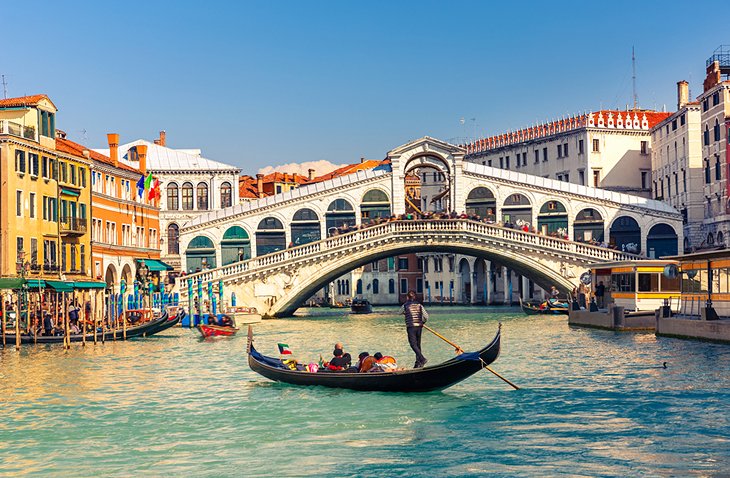
You could easily find enough attractions to spend a week in each of these cities, but you can see the highlights of all three in a well-planned week. The total travel time between Venice and Rome is only three and a half hours, so you can make the maximum use of your time. Of course, you'll want to see the main sights, but do allow some time to stroll through a neighborhood or two and sit in a café to soak up the atmosphere.
For example, after you've ridden the length of the Grand Canal and toured St. Mark's Square and the Doge's Palace , cross Rialto Bridge into the rabbit warren of narrow lanes in San Polo . Here, you'll find mask makers, tiny shops, and artisan studios, as well as churches filled with art and squares where neighborhood children play soccer.
In Rome, after the Colosseum and St. Peter's , explore the streets of the former ghetto of Trastevere , south of the Vatican . In Florence , follow your tours of the Pitti Palace art museums and gardens with a stroll through the Oltrarno neighborhood.
Longer is better, of course, and with a day or two to spare, you can either see more of each of the "Big Three," or you could make a stopover to see Bologna or hilltop Siena . The main train lines between the major cities go right through both. You don't need to stay overnight in either of these, as you can check your luggage at the train station while you tour. To make the most of your time, reserve tickets in advance to big attractions and museums, such as the Uffizi . This itinerary can be followed in either direction.
- Read More: Top-Rated Tourist Attractions in Venice
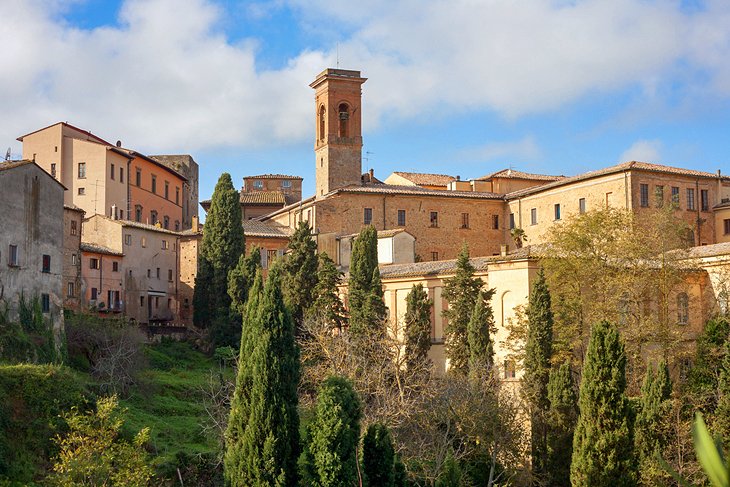
The hilltop towns in Tuscany are legendary for their beauty, their history, and the sheer romance of their settings. Many still retain the walls and castles that were their defense in the Middle Ages and Renaissance, and the art in their churches reflects Tuscany's wealth and power.
A car is the best and sometimes the only way to see many of these towns and the remote abbeys that are also part of Tuscany's heritage. You could easily spend a week exploring the Tuscan countryside and lingering to savor its village life, but you can see a good deal in four or five days.
Begin southwest of Florence in Volterra , whose historic center retains tower houses from the 12th and 13th centuries and which is still famous for its alabaster carving. San Gimignano is a short distance to the north, and one of the best-known of the Tuscan hill towns, mainly for its tall towers and the views across the surrounding countryside.
Colle di Val d'Elsa's old upper town still has some of its 13th-century walls, and the Palazzo Pretorio houses artifacts from a nearby Etruscan cemetery in its Museo Archeológico. Heading south, the little town of Monteriggioni sits inside a complete set of perfectly preserved 13th-century walls with 14 square towers; it's a favorite day trip from Siena .
Siena is worth a day or two stop, filled with medieval and Renaissance buildings and one of Tuscany's finest cathedrals. You'll find more Etruscan artifacts in the Museo Archeologico of Asciano , a fortified hill town south of Siena. The large Olivetan monastery of Monte Oliveto Maggiore was founded in 1313 and remains an active monastic community.
Montalcino is not very big, but it seems to have stepped out of the Middle Ages intact, inside walls built by the Sienese in 1361. Walk the well-preserved walls, visit rooms inside the fortress, and savor views of the Tuscan countryside from the castle.
Just to the south is the Benedictine Abbey of Sant'Ántimo , dating from at least 813, with a Romanesque church. Walled Montepulciano , one of the best known hill towns, shows Renaissance "modernization" to medieval architecture, reflecting the continuing power of its leading families even after other small towns here had declined.
- Read More: Top-Rated Tourist Attractions in Volterra
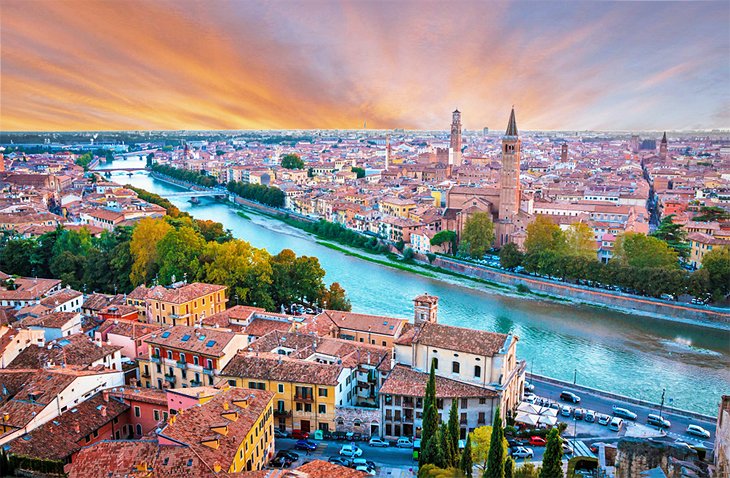
Although you can travel from Milan to Venice by train in two and a half hours, the same train route provides a made-to-order tour of some of northern Italy's most important art and historic attractions. The train line connects major Roman strongholds, centers of medieval and Renaissance culture, religious landmarks, and great centers of learning.
To spend a full day exploring each of these, with time to see the highlights of both Venice and Milan, you should plan at least 10 days, but you can pick from among the stops for a shorter trip. It's easy to see any of these cities without spending the night–you can check baggage at any train station.
Brescia , your first stop, preserves much of its Roman past, with parts of a temple, theater, and its forum still standing, and an exceptionally fine civic museum that includes a Roman villa with mosaic floors . If time allows, a stopover in Desenzano di Garda is a good chance to tour Lake Garda on the boats that leave regularly from the center of town. Highlights on the lake are nearby Sirmione , with a charming little castle and a Roman spa, and Malcesine, with a stone castle and beautiful views of the steep northern shores.
Verona's highlights include one of Italy's finest Roman arenas and a riverside castle–and of course Juliet's house (although the story is pure fiction). Vicenza's claim to fame–and a UNESCO designation–is the architecture of Andrea Palladio . Along with his masterpiece, Basilica Palladiana, are the Teatro Olimpico and the villa La Rotonda.
In Padua (Padova on the station signs), the attractions you shouldn't miss are the Shrine of St. Anthony and Giotto's incomparable frescoes in the Cappella degli Scrovegni (reserve ahead to be sure of admission). If you have time here or in Venice, make a side trip along the Brenta Canal to see the elegant villas and gardens. Leave extra time for Venice if you can, to savor La Dolce Vita at its best.
- Read More: Top-Rated Tourist Attractions in Milan
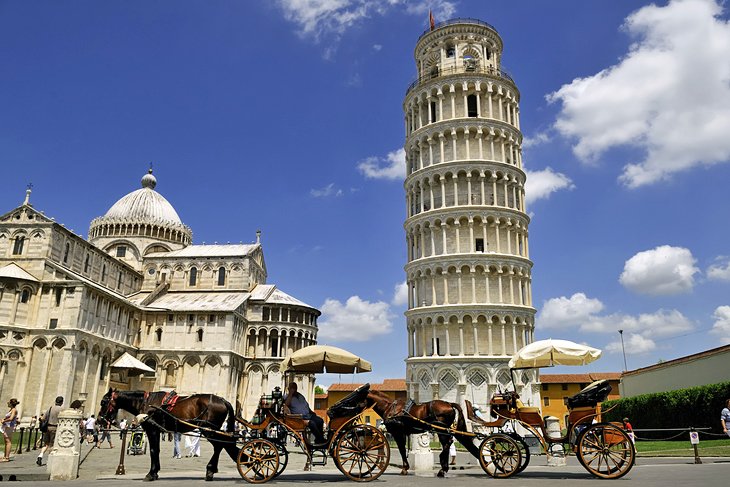
While you could spend a week just seeing all the Renaissance wonders of Florence , you can easily add Pisa and two or three other Tuscan towns in a week's vacation. Handily, they are strung like beads along a route you can follow by train or bus. Because the regional trains don't require seat reservations, you can buy your ticket at the station in Florence and travel any time you wish (be sure to stamp it in the machine on the platform before you board). These towns are only 15 to 45 minutes apart.
After at least two days in Florence, you can see the highlights of Prato and Pistoia easily in the same day. Prato's cathedral is illuminated by two 15th-century fresco cycles that show Filippo Lippi at the height of his artistry.
When you see Pistoia's medieval churches, you may wonder why it's not better known to tourists, but it remains blissfully serene, and you can tour its magnificent 13th-century Cattedrale di San Zeno almost in solitude. Don't miss the silver altar in the adjoining Cappella di San Iácopo or Andrea della Robbia's glazed terra-cotta relief above the central doorway. Across the piazza is a 14th-century baptistery faced with white and green marble.
Lucca , where you will want to stop over for at least a night, will charm you with its medieval towers, beautiful 12th-century church facades, Puccini music (he was born here), and the encircling walls. The tops of these walls are now a city park where locals stroll or ride their bicycles. Climb to the top of the Guinigi Tower for views down into an oval piazza that was once the interior of a Roman amphitheater.
You don't need anyone to tell you what is the main attraction in Pisa, but after you've climbed the Leaning Tower (reserve a timed entrance in advance), be sure to tour the magnificent cathedral and the baptistery, all located in the Campo dei Miracoli (Field of Miracles). The complex is a UNESCO World Heritage site.
- Read More: Top-Rated Tourist Attractions in Florence
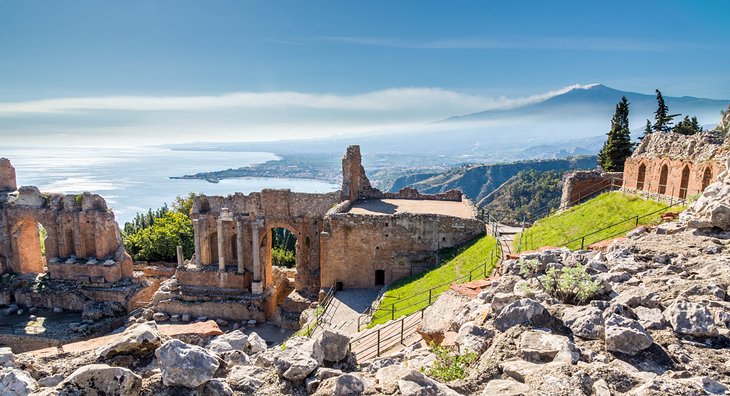
You can see some of the main cities of Sicily –Messina, Taormina, Catania, Syracuse, Trapani, and Palermo–by train, and several others by local bus. But you are tied to schedules more in tune to commuting locals than to tourists, and you'll have trouble getting to the historic sites in the countryside.
A driving tour around the perimeter of the island with stops to tour the major attractions could fill two weeks; you can compress it into a shorter time by skipping some places and seeing just the main features at each.
You'll want a day or two for Palermo and Monreale , where you won't need a car (or want to drive), before heading west to ancient Greek Segesta, with its theater and unfinished temple. Just beyond is the historic port of Trapani on its promontory, and hilltop Erice.
Continuing south along the coast, Marsala and Mazara del Vallo are worth seeing on the way to Selinunte , where you'll find one of the largest of all remaining Greek temples . One of the three most perfect temples in the ancient Greek world is farther along the south coast, at the Valley of the Temples in Agrigento .
From Agrigento, you can either continue along the coast or travel a loop of mountain roads inland to visit the UNESCO World Heritage Site of Villa Romana del Casale in Enna , whose more than 3,500 square meters of mosaics place it high among the best-preserved villas anywhere in the Roman Empire.
Head back south and jump forward more than a millennium to Baroque Ragusa and Modica, before reaching Syracuse . In the archaeological area are one of the world's largest and best preserved Greek theaters, one of Italy's largest Roman amphitheaters , extensive catacombs, and an ancient quarry.
Stop in Catania to see its magnificent Baroque architecture. From pretty Taormina , you can drive up continental Europe's largest active volcano, Mt. Etna . Messina , the closest point to the Italian mainland, is usually overlooked, but it's worth seeing before heading back to Palermo along the scenic north coast, by way of Cefalu .
- Read More: Top-Rated Tourist Attractions in Sicily
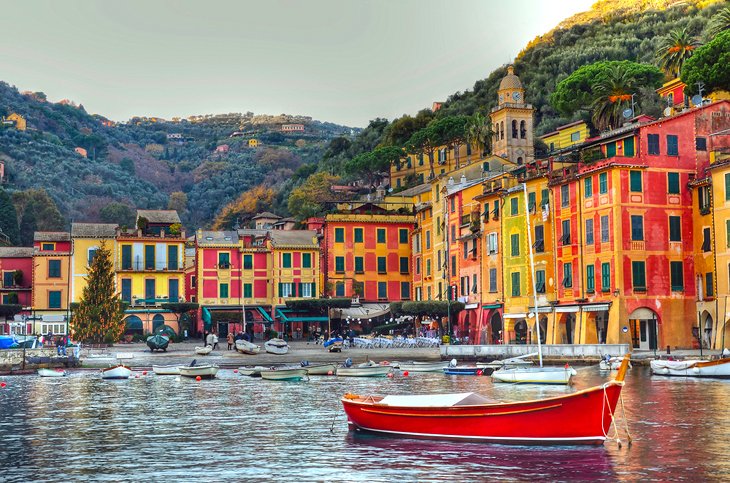
The Mediterranean coast from Sanremo to Portovenere is not just beautiful. It is studded with charming seaside resorts, fishing villages, historic attractions, and artistic treasures, all of them easy to reach by train or boat. If you are traveling with more than a backpack, you may need to choose several bases and backtrack a bit to explore, but that's no problem if you are on a rail pass.
The whole area around Portofino , for example, is easy to reach by boat from a base in Santa Margherita , and the Cinque Terre is easily explored from Portovenere or Sestri Levante. There are no left luggage facilities at any station between Genoa and La Spezia.
Begin near the French border in Sanremo, known as the flower center of the Riviera, where roses, jasmine, carnations, mimosa, and other fragrant flowers bloom on terraces. Rent a bicycle to reach some of the Riviera's best and least crowded beaches between Sanremo and San Lorenzo; most are free.
Genoa is perhaps Italy's most overlooked city, its streets lined with glorious palaces, and its churches and museums filled with priceless art treasures. You can take a ferry from here to the postcard harbor of Portofino and then a local boat to Santa Margherita to stroll its beachside promenade and bask in its gracious old-world atmosphere.
Sestri Levante makes a good base for exploring the Cinque Terre , or choose one of the five towns and hop between them by boat or train. The towns, along with Portovenere, are a UNESCO World Heritage Site . You can move on to Portovenere by train, but by far the most scenic way to arrive is by boat from one of the Cinque Terre towns, traveling beneath the magnificent cliffs and into one of Italy's prettiest harbors. Linger here to climb the narrow lanes, past 12th-century houses, to the citadel high above the town.
- Read More: Visiting the 5 Towns of the Cinque Terre: The Essential Guide
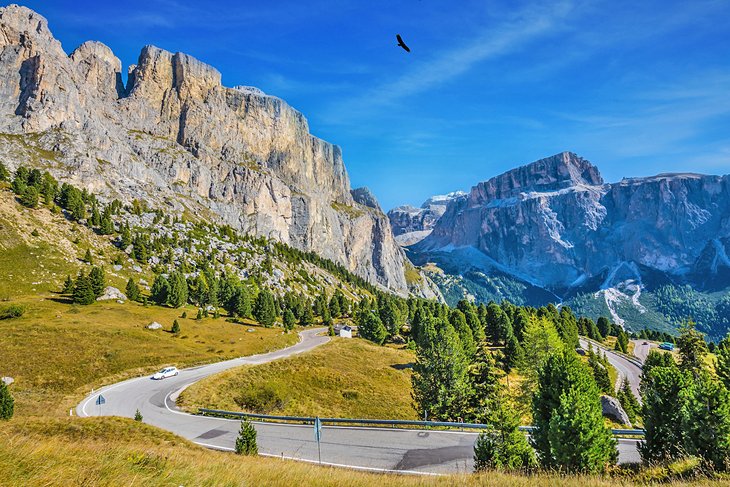
An itinerary for drivers who don't mind winding, steep mountain roads, this is a trip that largely avoids Autostrada traffic, traveling instead through small mountain villages in breathtaking settings. The route combines lovely lake scenery and Garda's holiday atmosphere with the breathtaking mountain views along the UNESCO World Heritage Strada Dolomiti, the Dolomite Road.
Begin in Verona , driving northwest to Peschiera, on the southern shore of Lake Garda , and make a side trip to chic little Sirmione , on a narrow peninsula jutting into the lake. A small but terribly picturesque castle guards its entrance, and at the end of its single street, you can take a tiny train to the ruins of a magnificent Roman villa overlooking the lake.
Return to Peschiera and drive up the east side of Lake Garda, stopping in lively little towns on the way, to Malcecsine . Pause here to climb its medieval streets to the castle and admire the soaring cliffs across the lake. Continue to Riva , worth an overnight stop to savor the lake's holiday vibe. Leave the lake, heading north to Arco, with its hilltop gardens, and continue along the verdant valley to Trento .
Pick up the Autostrada as far as Bolzano , a good stopping point to see the famed Ice Man and tour Castle Roncollo to see some of the finest surviving medieval court frescoes. You'll begin to notice the Germanic influences here, and as you climb through the Alpine villages of the Strada Dolomiti to Cortina d'Ampezzo .
More Alpine villages await on the trip south through the Cadore Valley to Vittorio Veneto , where you'll begin to notice the influence of this region's history as part of the Venetian Republic. Windows and doors around its pretty market square take on the graceful curves seen in the palazzi of Venice.
Conigliano is a charming town with a hilltop castle and excellent restaurants. From Conigliano, continue south past Treviso , where you can either go south to Venice or west through the walled towns of Castelfranco and Citadella to Vicenza . Stop here to tour at least one of Andrea Palladio's magnificent villas before returning to Verona.
- Read More: Top-Rated Tourist Attractions around Lake Garda
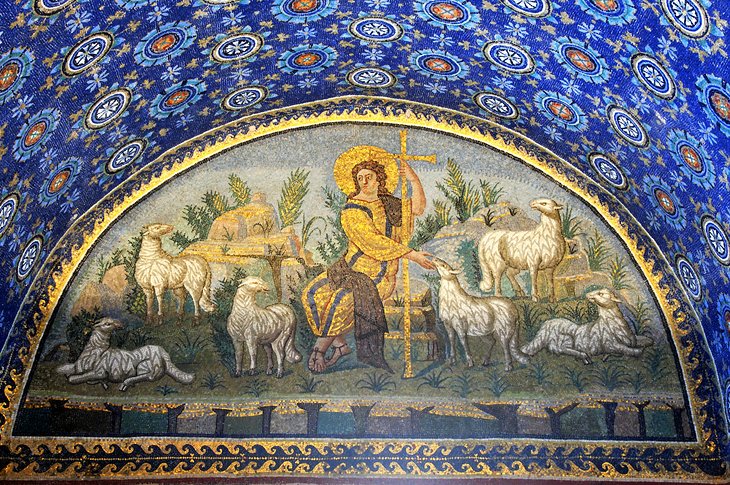
Few driving tours in Italy promise as much variety in a week as the scenic route from Bologna to Florence , along the Adriatic coast and over the Apennine mountains . A week allows a day or two for the medieval towers and beautiful churches of Bologna and time at the end for the Renaissance wonders of Florence. In between these are Roman sites, Europe's finest assemblage of Byzantine mosaics, miles of Adriatic beaches, a fishing village, castles, and the tiny independent republic of San Marino.
Head east from Bologna and stop in Faenza , known for its ceramics. Learn about this craft and see examples by Picasso and Matisse at the Museo delle Ceramiche before moving on to Ravenna . The UNESCO World Heritage Site includes eight churches, each lined with dazzling Byzantine mosaics , so a stopover in Ravenna means you won't have the sensory overload of trying to see them all in the same day.
Farther south along the coast is Cesenatico , whose old fishing harbor, surrounded by seafood restaurants, holds a floating museum of historic boats. Rimini's Roman past is well explained in historic signage as you walk its main street past excavations; the forum; the grand Porta Augusto; and the five-arched bridge, Ponte Tiberini. If the season is right, pause at one of Rimini's famed Adriatic beaches.
Head inland to nearby San Marino , leaving the car to ride the convenient shuttle to its historic center to see the frequent changing of the guard and its three mountaintop castles. Follow the old road, parallel to the Autostrada, through Cesena to Forli , a walled town where the Abbazia di San Mercuriale ( Abbey of San Mercuriale) in the main piazza is worth seeing for its stone carving. From here, follow SS67 over the Apennines to Florence.
- Read More: Top-Rated Tourist Attractions in Bologna
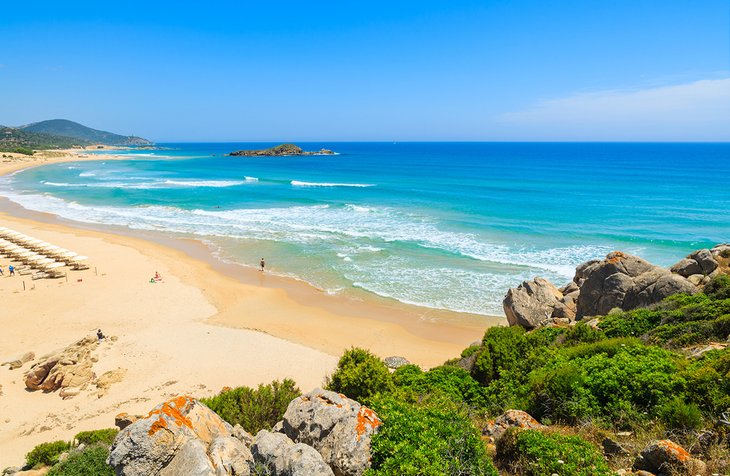
Sardinia may be a part of Italy, but you'll soon feel as though you were in an entirely different country; it even has its own distinct cuisine. Spend at least a day in the capital city of Cagliari for a tour of the main sights, so you'll have some background in Sardinia's unique history and prehistory. To understand the strange nuraghe – the enigmatic stone towers that pepper the entire island–visit the museum in the citadel.
Drive north from Cagliari to see the best of these, Nuraghe su Nuraxi , then head west to Oristano to see the Phoenician/Carthaginian/Roman ruins of Tharros . Continue north to the beautiful town of Bosa , under its castle, and follow the scenic coastal drive to Alghero to walk its walls and stroll its atmospheric stone streets. Take a boat to the impressive sea caves of Grotta di Nettuno before traveling on through Sassari to castle-topped Castelsardo .
Follow the north coast to the fantastic rock formations of Santa Teresa di Gallura and take the ferry to the pink beaches of the Arcipelago di la Maddalena before reaching the Costa Smeralda . Arzachena is a good base here, perhaps at a country inn in the rock-studded mountains above town, as you explore the trendy resort villages and the outstanding prehistoric sites.
A drive south along the east coast brings you to Sardinia's wild and sparsely settled mountains, where a motorway will bring you to Nuoro . This is a good center for a day exploring the precipitous mountain roads to remote towns of the Barbagia . On the way back to Cagliari stop at Nuraghe Losa and the mysterious well of Santa Cristina .
You can do this route in eight days if you leave out some of the prehistoric sites, but 10 gives you more leisure to enjoy Sardinia's unique culture, along with giving you more time to spend in Cagliari with a side trip to the Phoenician city of Nora .
- Read More: Top-Rated Tourist Attractions in Sardinia
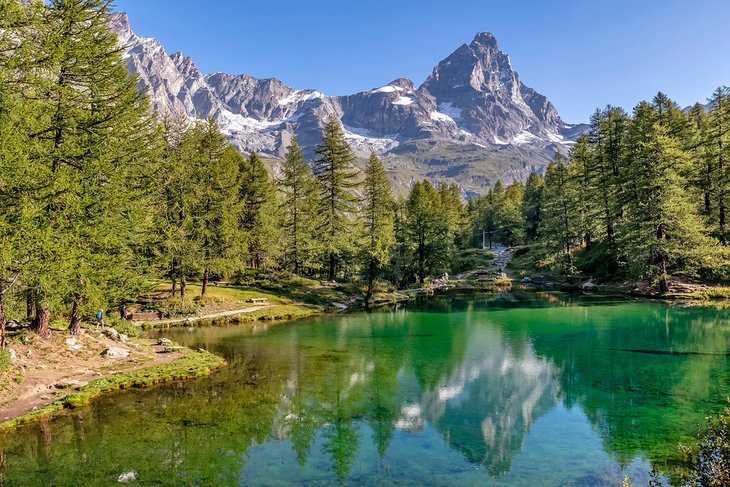
From the royal splendor of Turin , the former Savoy capital, to the natural splendor of Europe's highest peaks, this route follows a valley that has been a major trade route since Roman times. You'll see a Roman theater in Aosta, a string of medieval castles, and the two most famous mountains in the Alps.
Although you could drive from Turin to Mont Blanc (Monte Blanco) in six hours, you should allow three days in addition to your time in Turin. While here, tour the Savoys' Royal Palace , and ride the elevator to the top of the Mole, where you can visit the outstanding cinema museum.
Head north from Turin on the E612 and E25 as far as Chatillion, then drive north to Breuil-Cervinia , at the foot of the Matterhorn . On the way, stop at Lago Blu for one of the best views of the mountain's dramatic south face. A cable car takes you from the village to higher viewpoints.
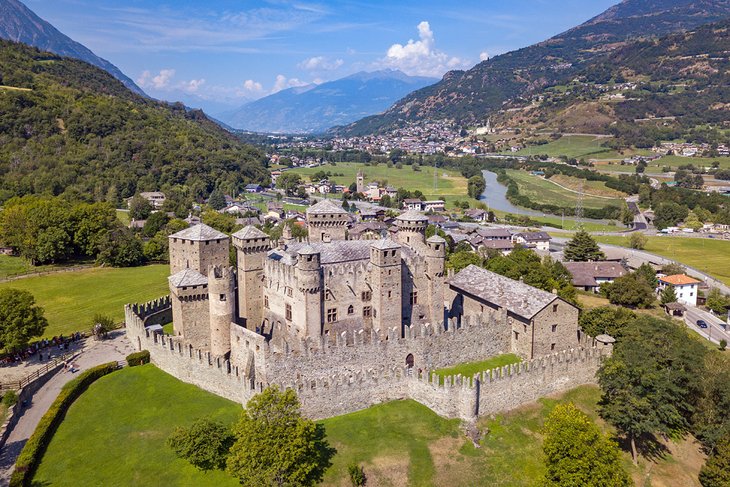
Back in Chatillion, SS 26 follows the river past a succession of villages. Each seems to have its own castle; the first you'll see is the impressive Castello Fénis , a pentagonal fortified manor with towers and battlements, surrounded by crenelated walls. Medieval frescoes decorate the balconies around the courtyard and chapel.
The valley's largest town is Aosta , an ancient Roman post that shows off its past in the well-preserved 1 st -century Arch of Augustus , Roman Theater , towers , and catacombs . The monastic complex of Sant'Orso and the cathedral's mosaics are also worth seeing. From Aosta, you can take a cable car to the 1800-meter summit of Pila for views of the valley and the Alps.
For a glimpse of later history, stop at Sarre Royal Castle , built in the early 18th century and later the hunting lodge of King of Italy Vittorio Emanuele II. A side trip into the Gran Paradiso National Park follows a scenic road from Aymavilles through meadows of wildflowers to the village of Cogne. Here, you'll find a botanical garden of Alpine flora, and hiking trails into the park.
Courmayeur is one of Europe's top ski resorts , a chic ensemble of chalets, boutiques, and cafés, with an interesting Alpine Museum and a 14 th -century church. Outside of ski season, the main attraction is the Skyway Monte Bianco , a set of 360-degree rotating cableways linking three stations ascending Mont Blanc, the highest at 3,466 meters.
More Related Articles on PlanetWare.com
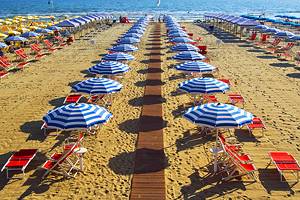
More to See in Italy: While you're touring, you can follow your own special interests with our pages on the Most Beautiful Gardens in Italy and Top-Rated Beach Destinations in Italy . If you are traveling to Italy in winter, see our list of the Top Ski Resorts in Italy .

More on Italy


© Andrea Comi/Getty Images
Home to many of the world's greatest works of art, architecture and gastronomy, Italy elates, inspires and moves like no other.
Best Time to Visit
Best places to visit, leave the planning to a local expert.
Experience the real Italy. Let a local expert handle the planning for you.
Attractions
Must-see attractions.
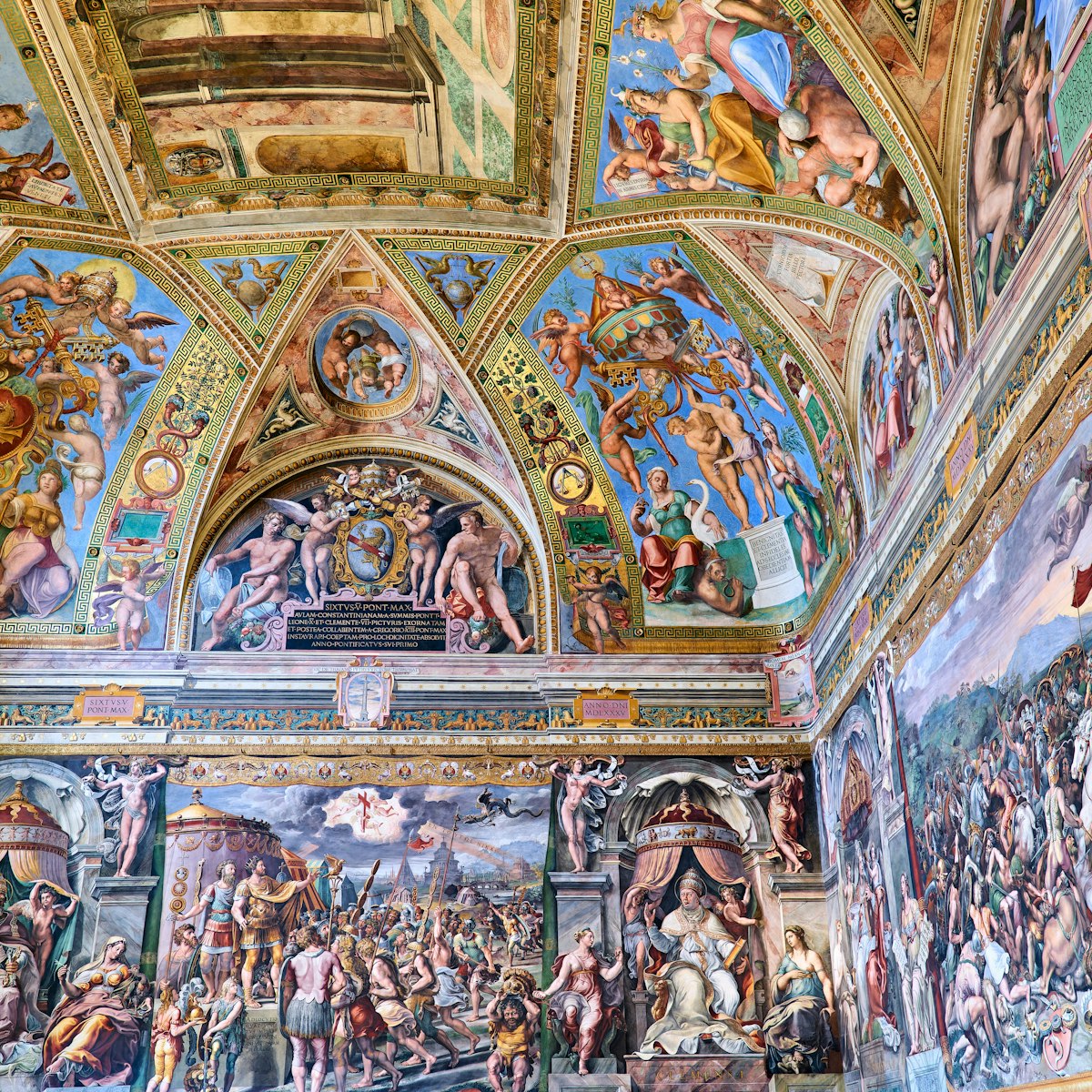
Vatican Museums
Vatican City, Borgo & Prati
Founded by Pope Julius II in the early 16th century and enlarged by successive pontiffs, the Vatican Museums boast one of the world's greatest art…
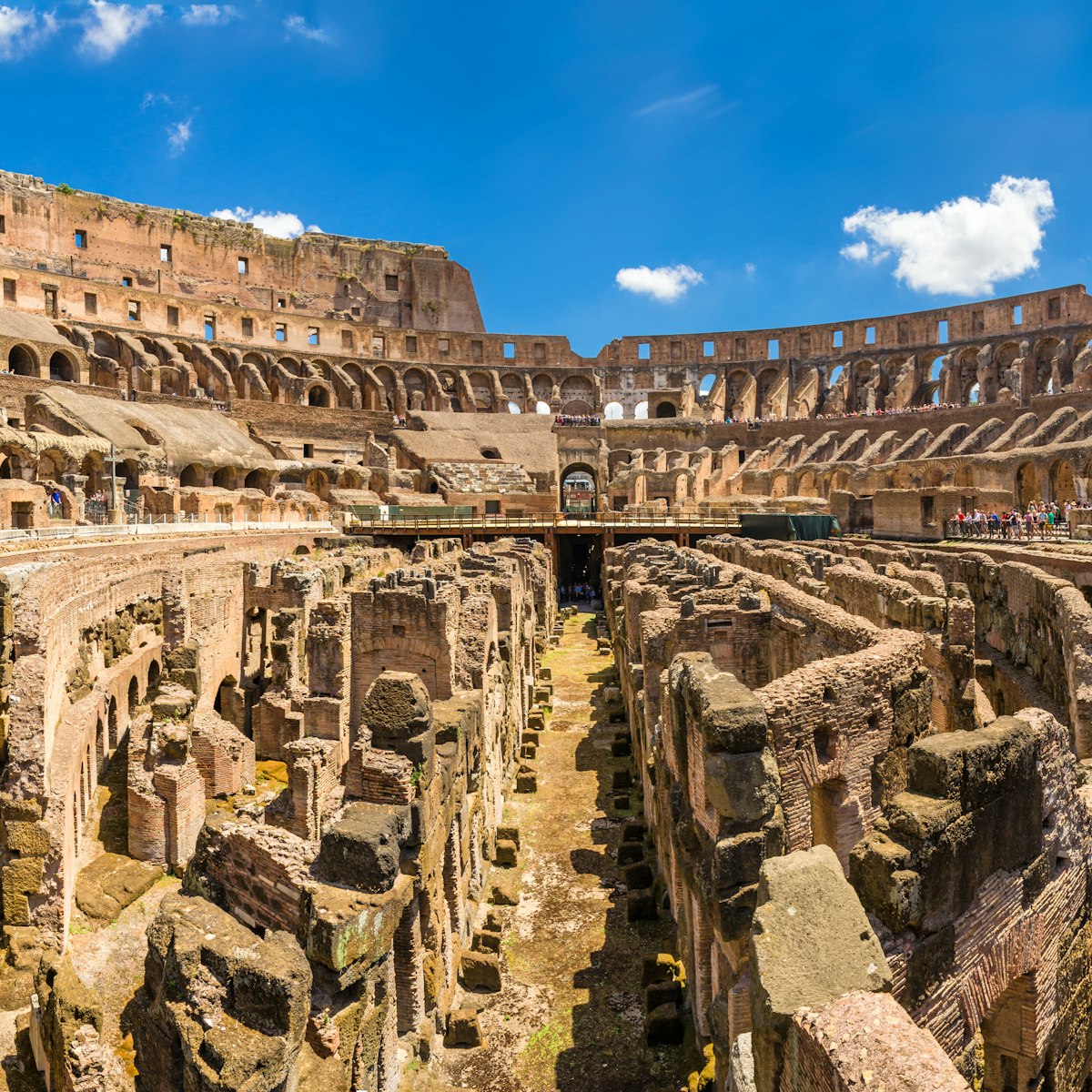
Ancient Rome
Everyone wants to see the Colosseum, and it doesn’t disappoint, especially if accompanied by tales of armored gladiators and hungry lions. More than any…
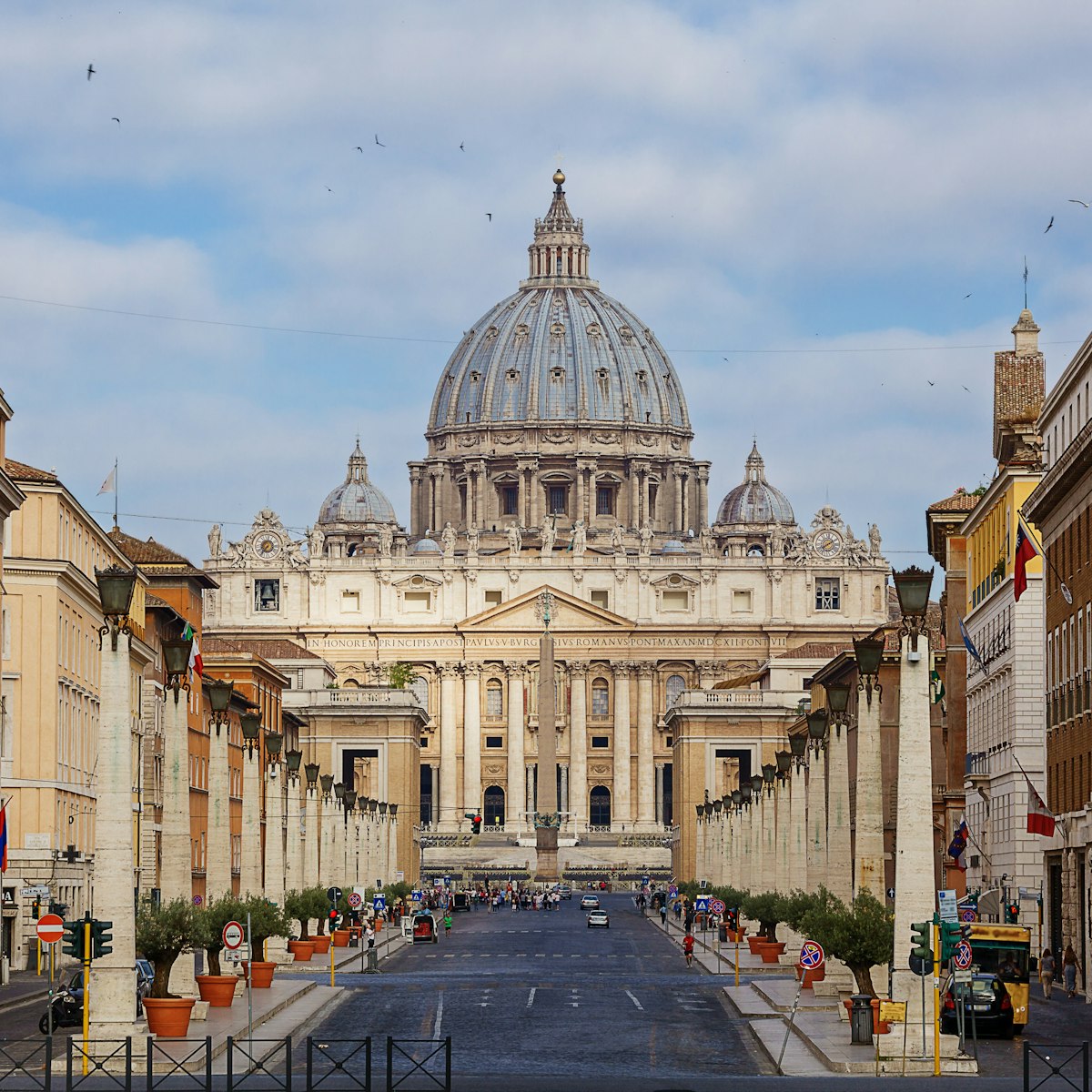
St Peter's Basilica
In the city of outstanding churches, none can hold a candle to St Peter's, Italy’s largest, richest and most spectacular basilica. Built atop a 4th…
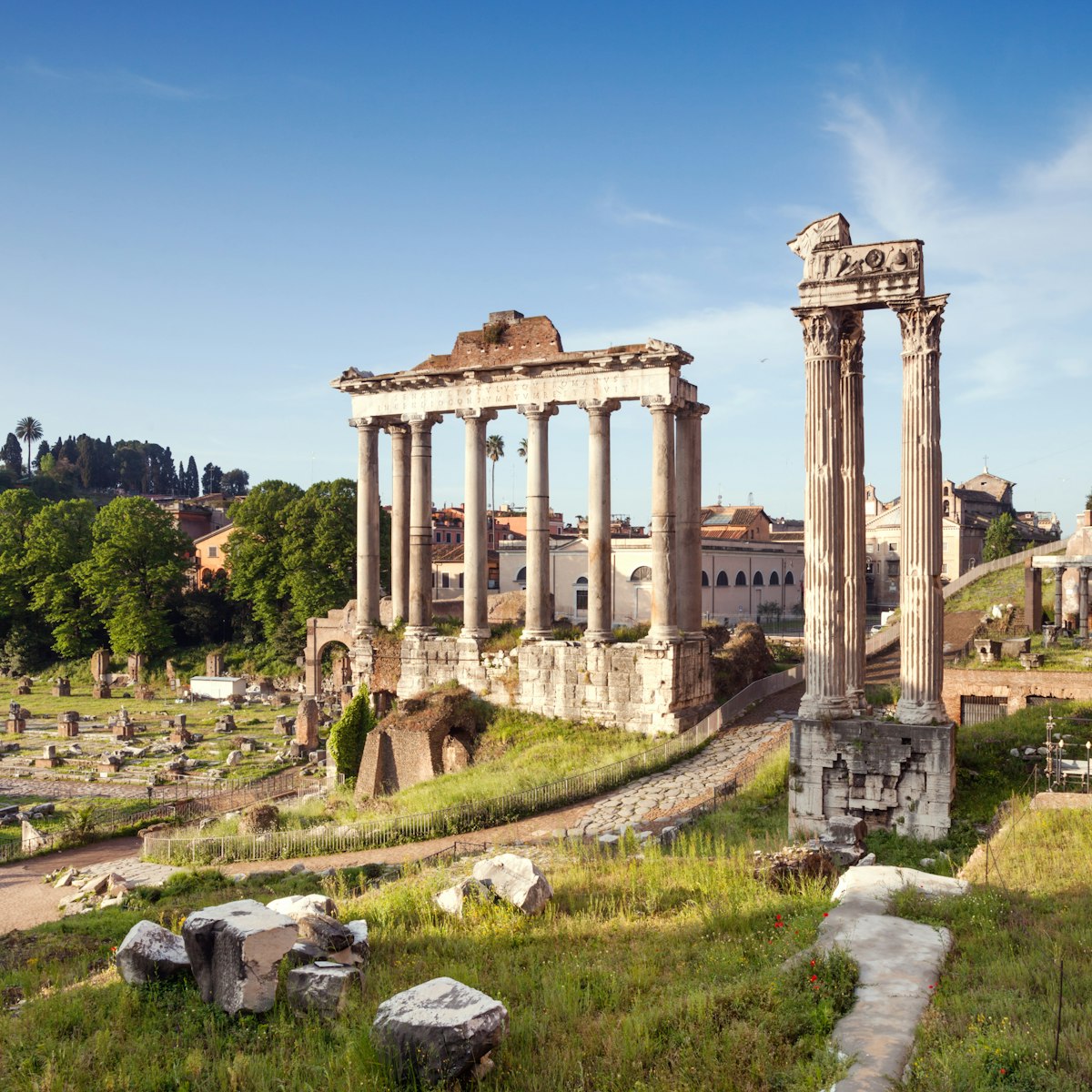
Roman Forum
An impressive – if rather confusing – sprawl of ruins, the Roman Forum was ancient Rome's showpiece center, a grandiose district of temples...

Sandwiched between the Roman Forum and the Circo Massimo, the Palatino (Palatine Hill) is one of Rome's most spectacular sights. It's a beautiful,…
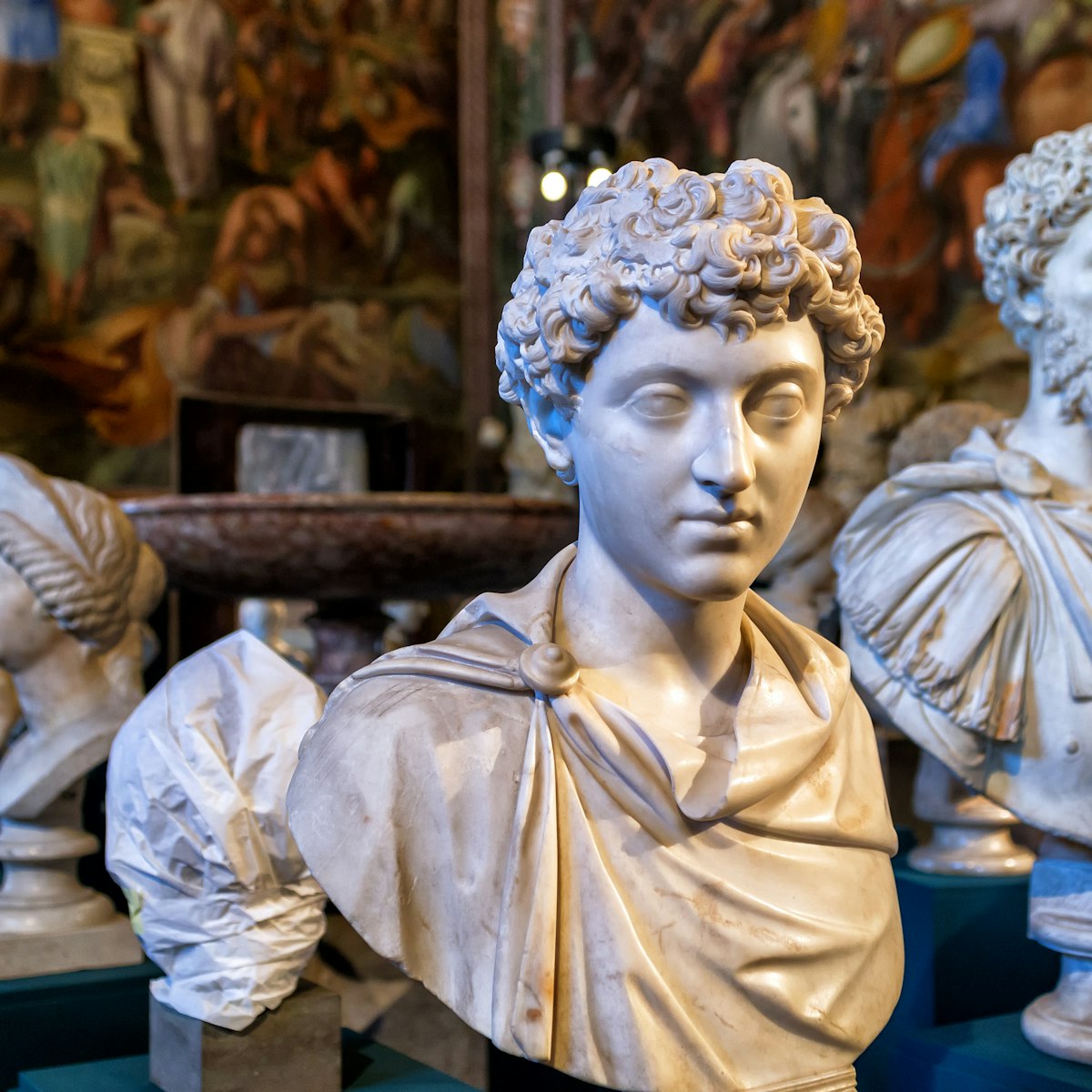
Capitoline Museums
Dating from 1471, the Capitoline Museums are the world's oldest public museums, with a fine collection of classical sculpture.
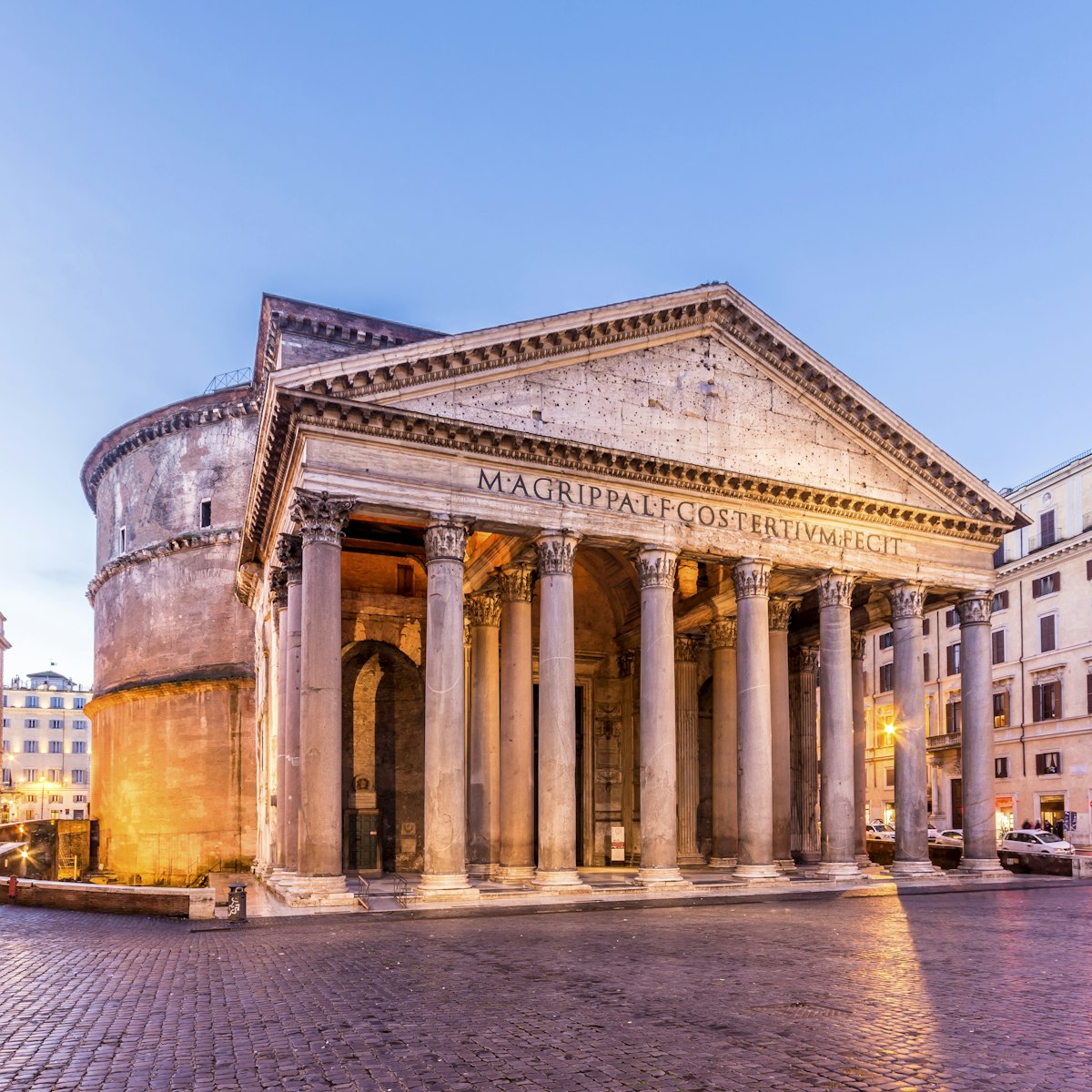
Centro Storico
With its revolutionary design, this awe-inspiring temple has served as an architectural blueprint for millennia.
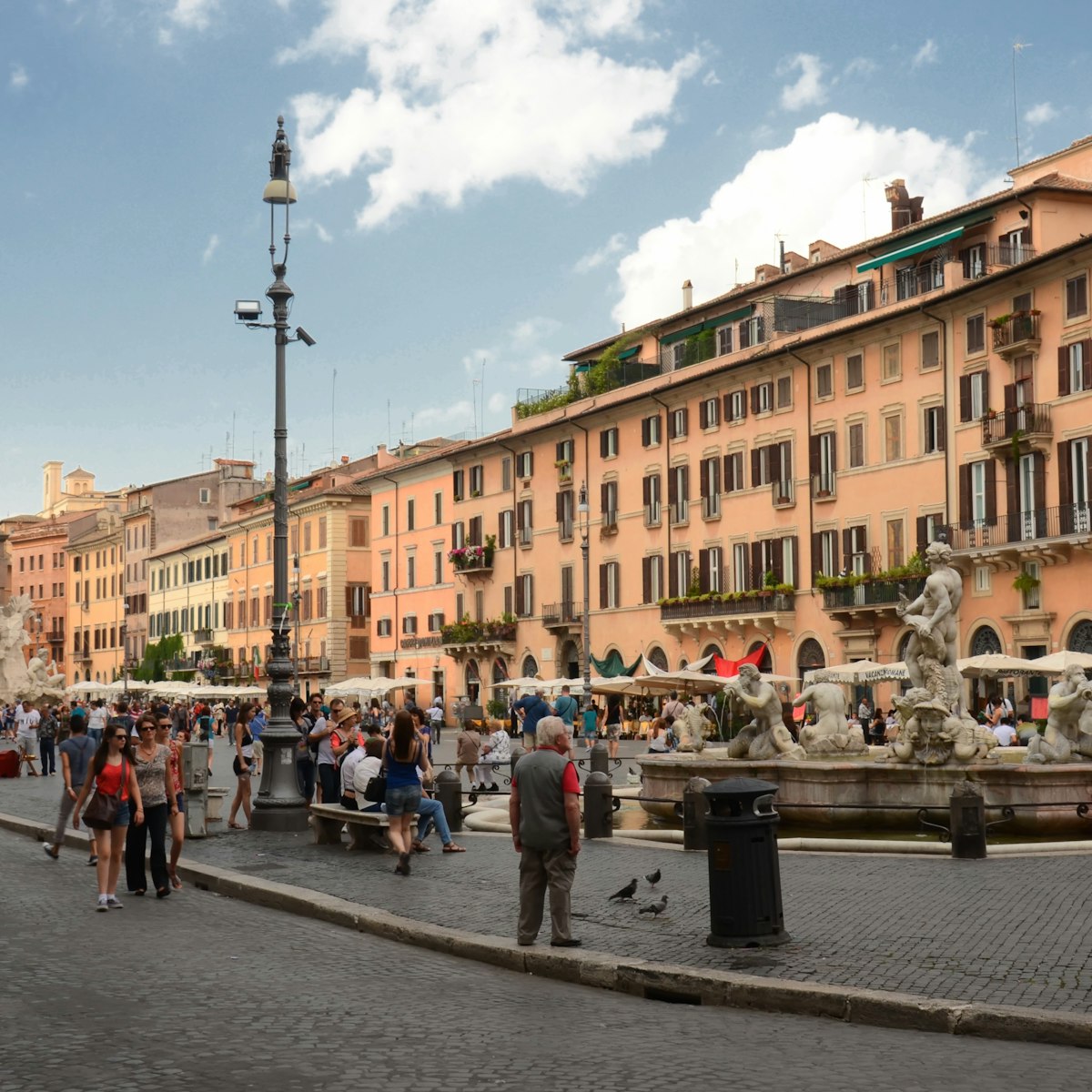
Piazza Navona
With its showy fountains, baroque palazzi and colorful cast of street artists, hawkers and tourists, Piazza Navona is central Rome’s elegant showcase…
Top picks from our travel experts
12 amazing ways to experience italy.
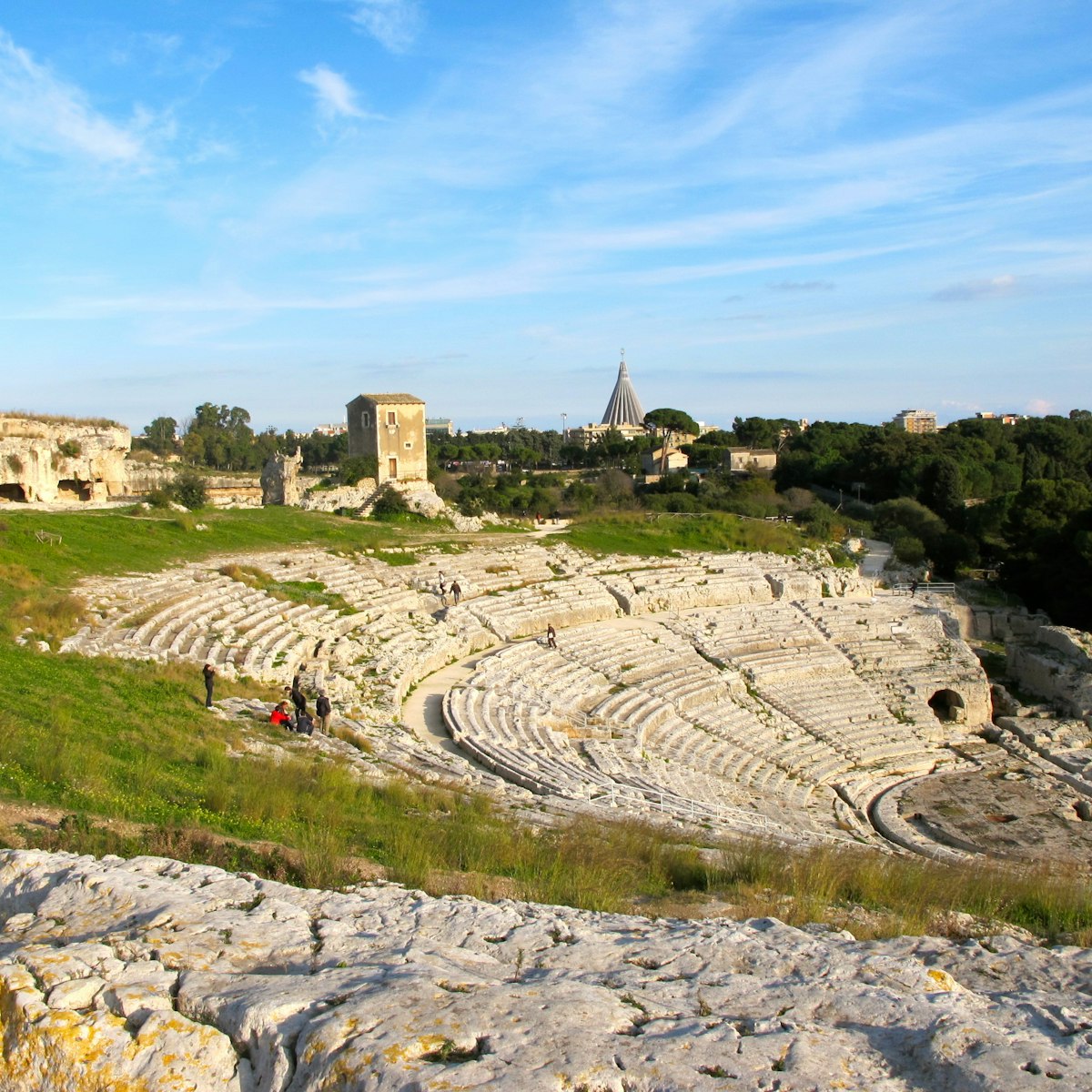
Teatro Greco
The highlight of the Neapolis archaeological area is the Teatro Greco, a masterpiece of classical architecture that could accommodate up to 16,000 people…

This enchanting albergo diffuso, with 28 distinctive rooms and suites scattered throughout the village, was what helped rescue Santo Stefano from oblivion…

Ponte dei Sospiri
One of Venice's most photographed sights, the Bridge of Sighs connects Palazzo Ducale to the 16th-century Priggione Nove (New Prisons). Its improbable…
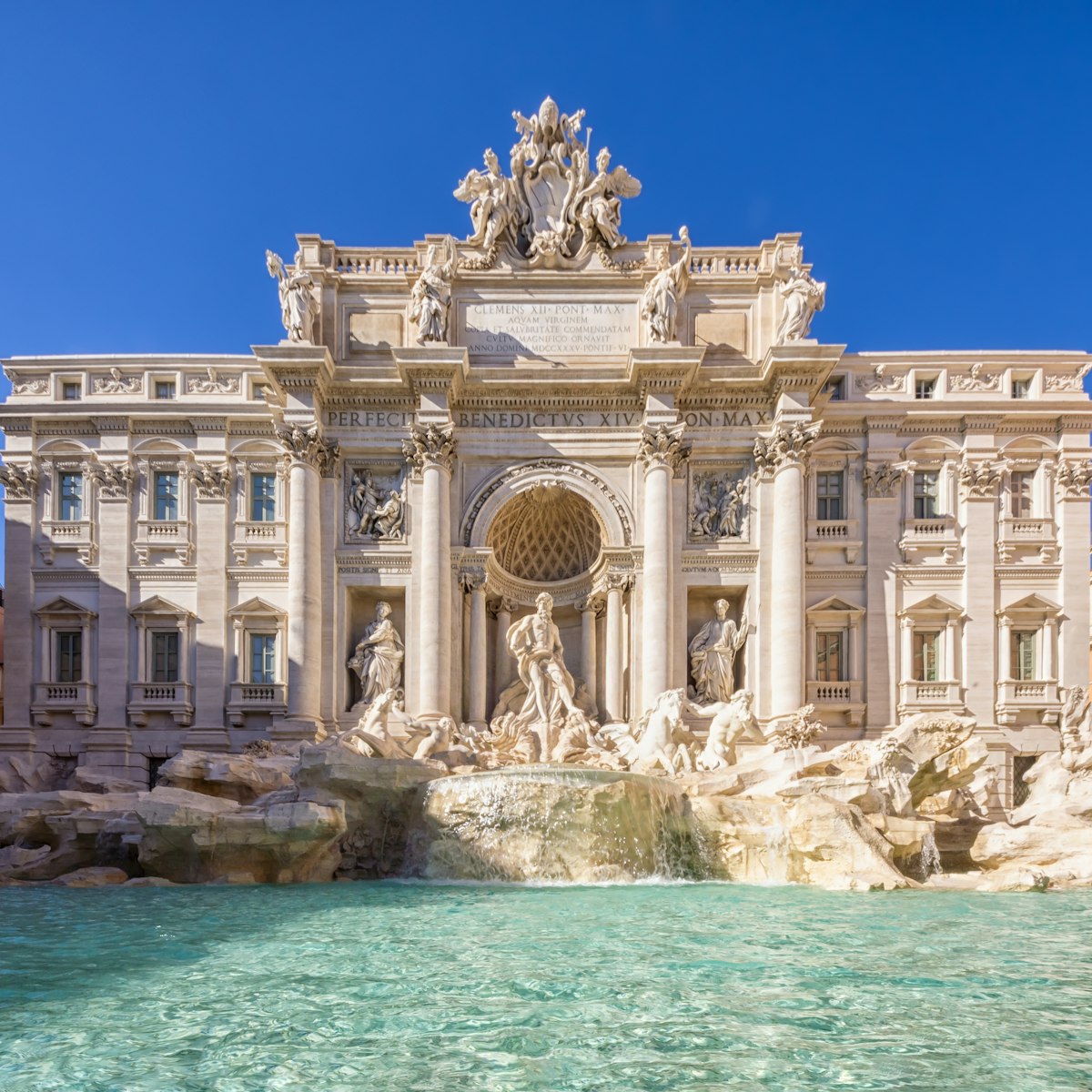
Trevi Fountain
Tridente, Trevi & the Quirinale
Don't miss a visit to Rome's iconic Fontana di Trevi, or Trevi Fountain.

Galleria degli Uffizi
Duomo & Piazza della Signoria
Home to the world's greatest collection of Italian Renaissance art, Florence's premier gallery occupies the vast U-shaped Palazzo degli Uffizi (1560–80),…
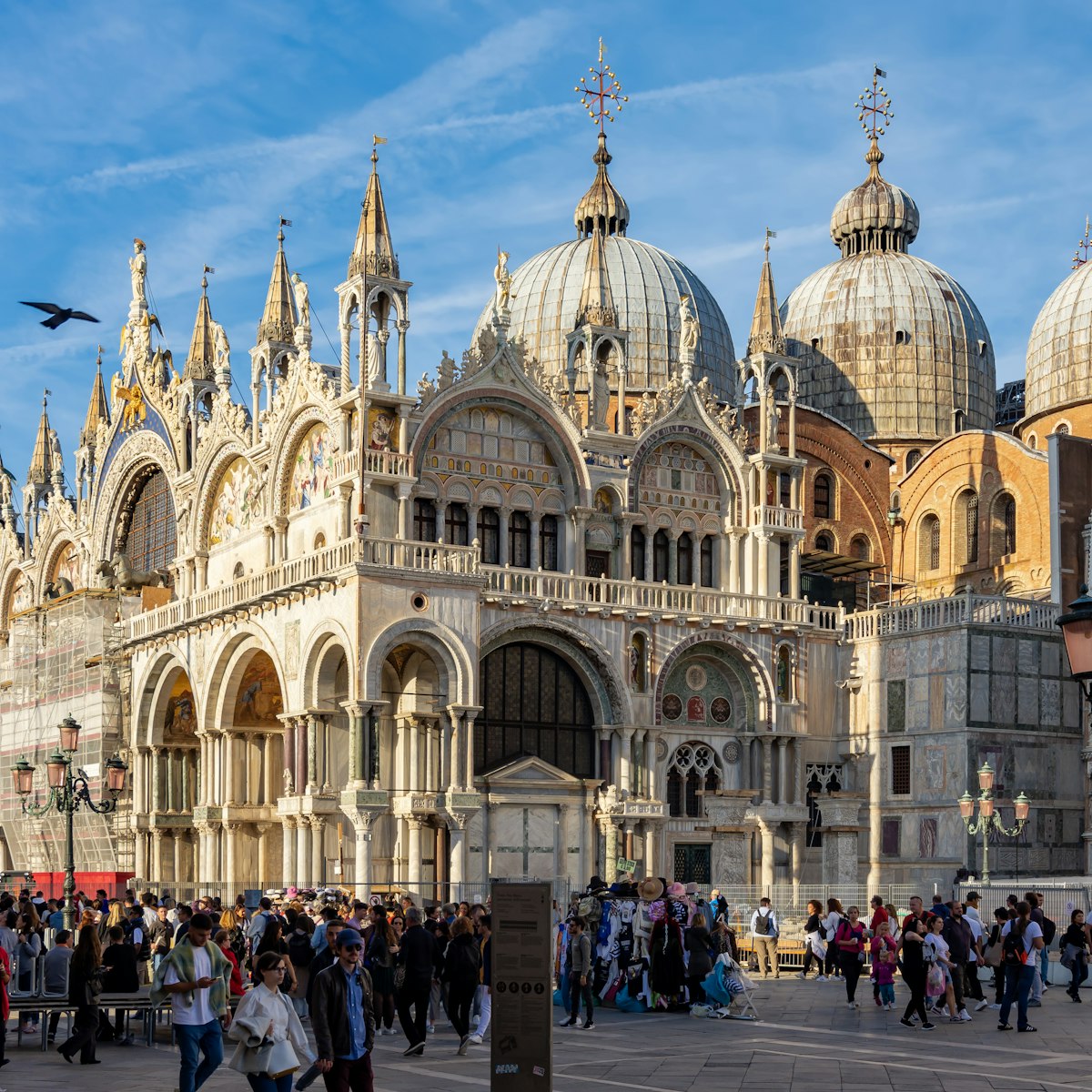
Basilica di San Marco
With a profusion of domes and more than 8000 sq metres of luminous mosaics, Venice's cathedral is unforgettable. It was founded in the 9th century to…
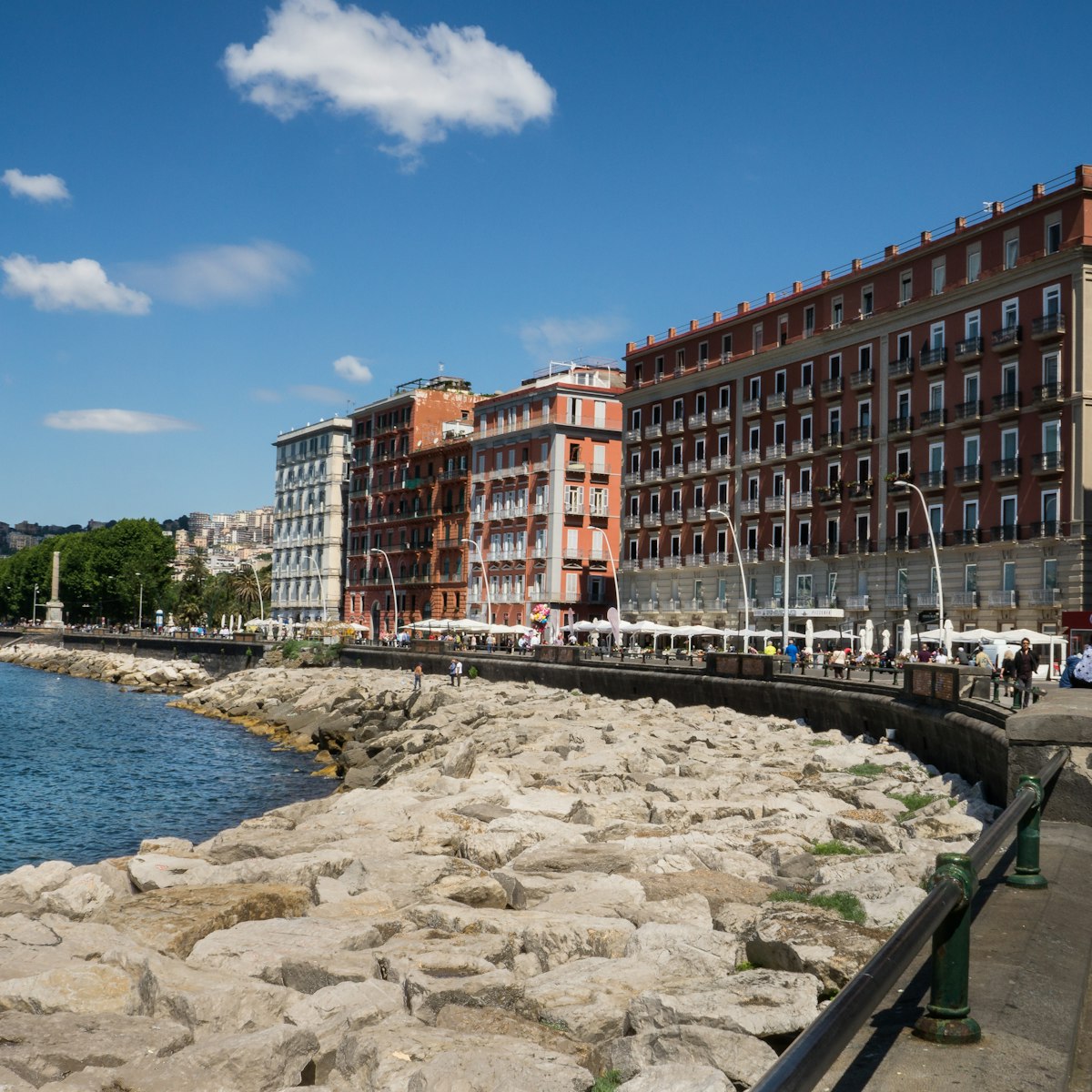
When you need a break from Naples' hyperactive tendencies, take a deep breath on its pedestrianised seafront strip. Stretching 2.5km along Via Partenope…
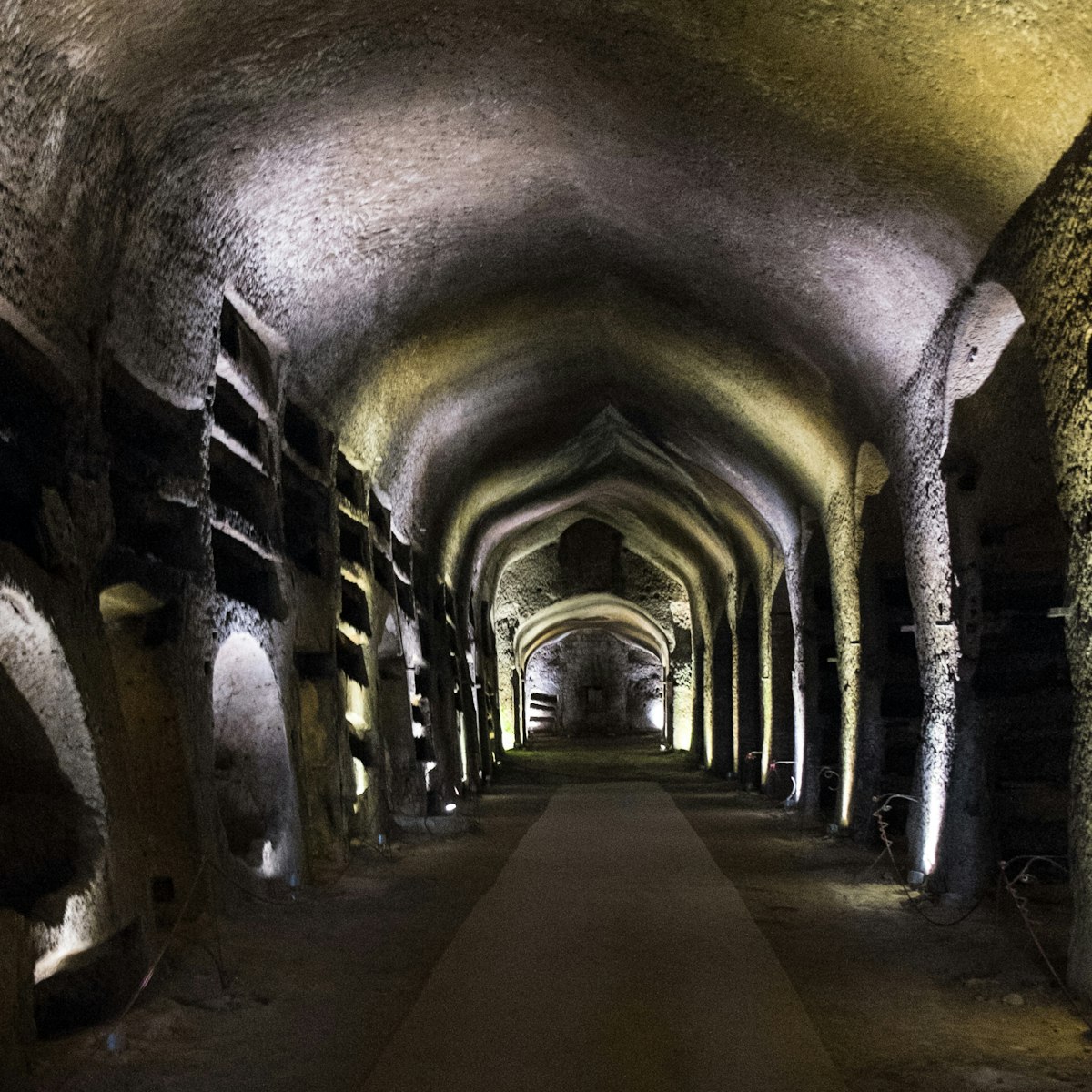
Catacombe di San Gennaro
Naples' oldest and most sacred catacombs became a Christian pilgrimage site when San Gennaro's body was interred here in the 5th century. The carefully…
Planning Tools
Expert guidance to help you plan your trip.
Best Things to Do
Italy has so many delights for visitors, it’s hard to know where to start. Lucky for you, we’ve made this list of the best experiences all over the country.
Things to Know
With so many attractions, it's hard to know where to begin with a trip to Italy. Here's some local insight into the essential things to know before you go.
Transportation
Your guide to traveling independently across Italy, from the Alps to the islands.
Visa Requirements
Italy is one of the most visited countries in Europe and its many attractions are hard to resist. Find out if you need a visa before you go.
Money and Costs
These top budget tips can help you save money while exploring Italy.
Traveling with Kids
Experience the best of Italy as a family with this guide to the top things to do there with kids.
Best Road Trips
Whether you're cruising the Amalfi Coast or driving through the Tuscan countryside, these scenic road trips will help you see the best of Italy.
Plan with a local
Experience the real Italy
Let a local expert craft your dream trip.

Latest stories from Italy
Filter by interest:
- All Interests
- Adventure Travel
- Art & Culture
- Beaches, Coasts & Islands
- Food & Drink
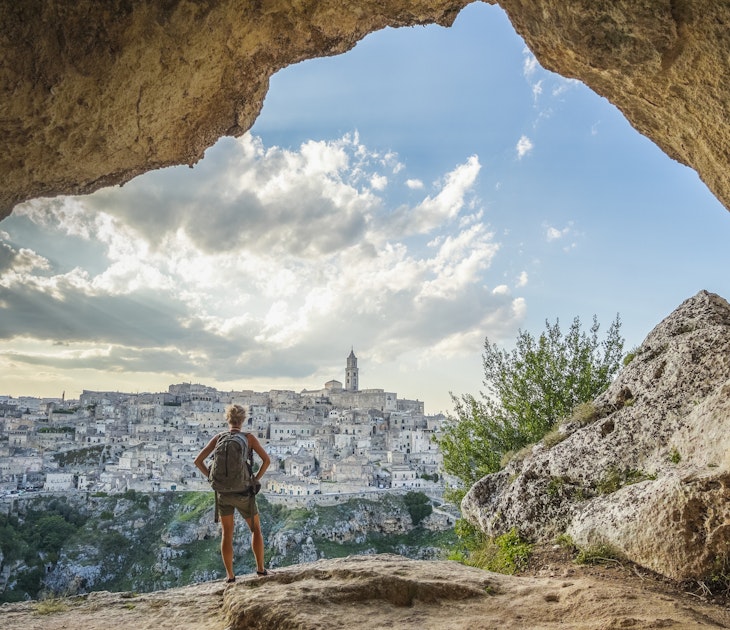
Tips & Advice
May 4, 2024 • 4 min read
You're finally taking that trip to Italy! But now the panic over what to pack starts. Don't worry, I've got all the tips and tricks you need.

Apr 19, 2024 • 7 min read
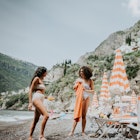
Mar 20, 2024 • 9 min read

Feb 28, 2024 • 8 min read

Jan 11, 2024 • 8 min read

Dec 8, 2023 • 6 min read
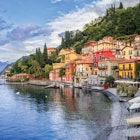
Nov 30, 2023 • 13 min read

Nov 22, 2023 • 4 min read

Nov 20, 2023 • 7 min read
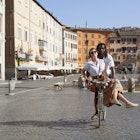
Nov 19, 2023 • 11 min read
in partnership with getyourguide
Book popular activities in Italy
Purchase our award-winning guidebooks.
Get to the heart of Italy with one of our in-depth, award-winning guidebooks, covering maps, itineraries, and expert guidance.
Italy and beyond

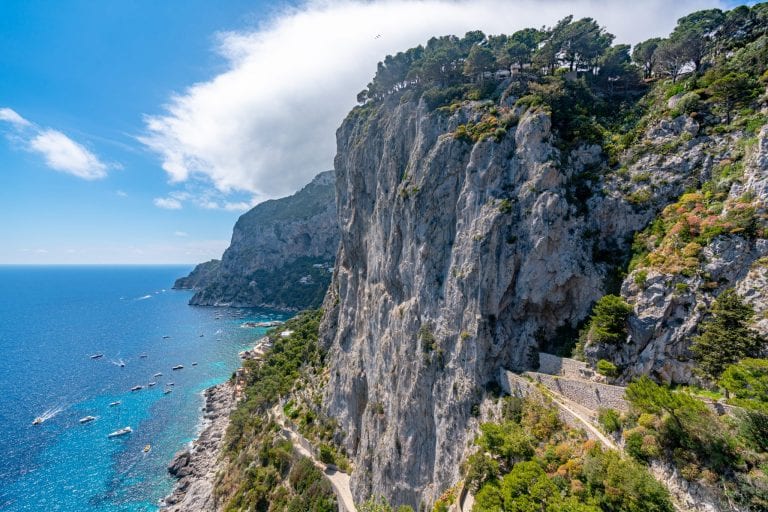
Planning a Trip to Italy: Your Easy 11-Step Checklist
Once you’ve decided to visit Italy, especially for the first time, it’s easy to catch yourself daydreaming daily about sparking blue seas, delicious wine, rolling hills, and ancient cities (and I definitely still do this on a near-constant basis), but successfully planning a trip to Italy requires some not-so-daydream-like steps as well!
From booking transportation to deciding exactly where to go, we’ve outlined all the important steps for planning your Italy trip here.
Use this checklist to ensure that you jet off on your Italian vacation without a single worry!
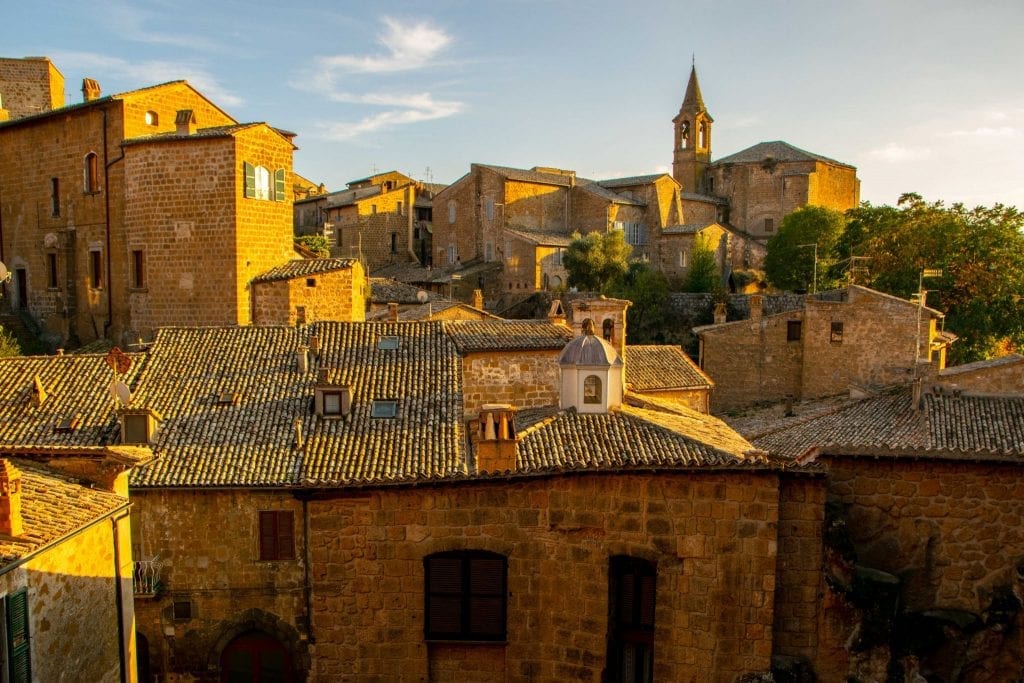
Some links in this post may be affiliate links. If you make a purchase through one of these links, we may earn a small commission at no extra cost to you. Please see our disclosure policy for more detail.
Step 1: Check visa requirements.
Based on the geographic readership of this blog, odds are that the vast majority of you will not need a visa to visit Italy for up to 90 days for tourism purposes.
This includes citizens of the USA, Canada, the UK, Australia, and of course, anyone from an EU member state.
Italy is part of the Schengen Zone, and therefore, anyone who needs a Schengen Visa to visit the area will need one for Italy.
Of course, while I strongly doubt that this policy will change in the near future, you should always confirm visa requirements through official sources before traveling!
Update: Can we all take a moment to collectively laugh at that last sentence? Now more than ever, be sure to regularly check official regulations and track the details of entry requirements! As of this summer, things in Italy are virtually back to “normal”–but be sure to double-check when booking your trip!
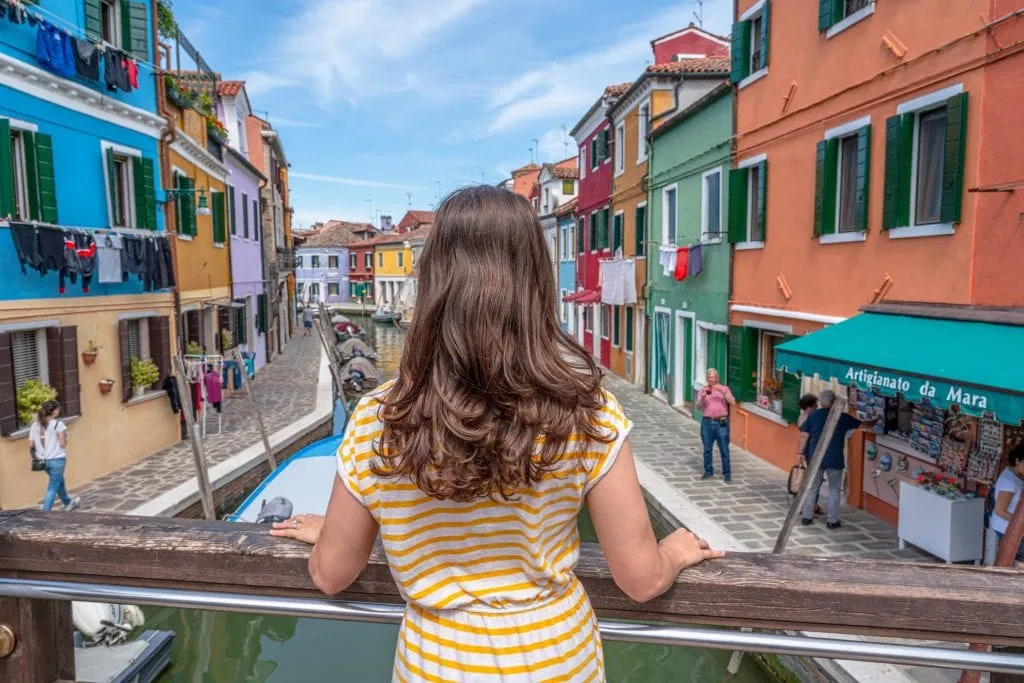
Step 2: Book your trip to Italy!
At this point when planning a trip to Italy, it’s time to make it official and book your tickets to the country!
If you’re flying a long distance or are planning to visit multiple regions in Italy, we recommend being pretty flexible with what airport you fly into in order to get the best flight prices.
Go ahead and check the prices to fly to Rome, Florence, Milan, Venice, and Naples for intercontinental flights.
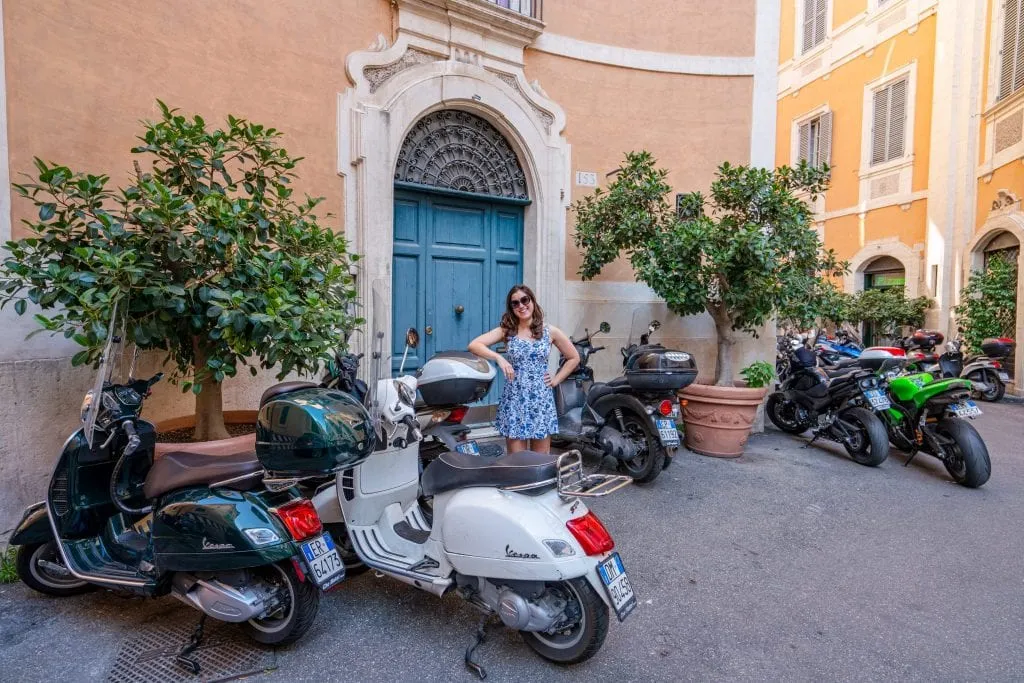
For shorter flights within Europe, those flying on budget airlines should also check Bologna and Pisa, as well as Bari , Palermo , and Catania if you’re headed south.
Also, be open to the idea of flying into one city and out of another!
While this can sometimes be much pricier, other times it’s surprisingly affordable and allows you to spend less of your trip to Italy doubling back to a city you’ve already visited.
We recommend running the numbers both ways.
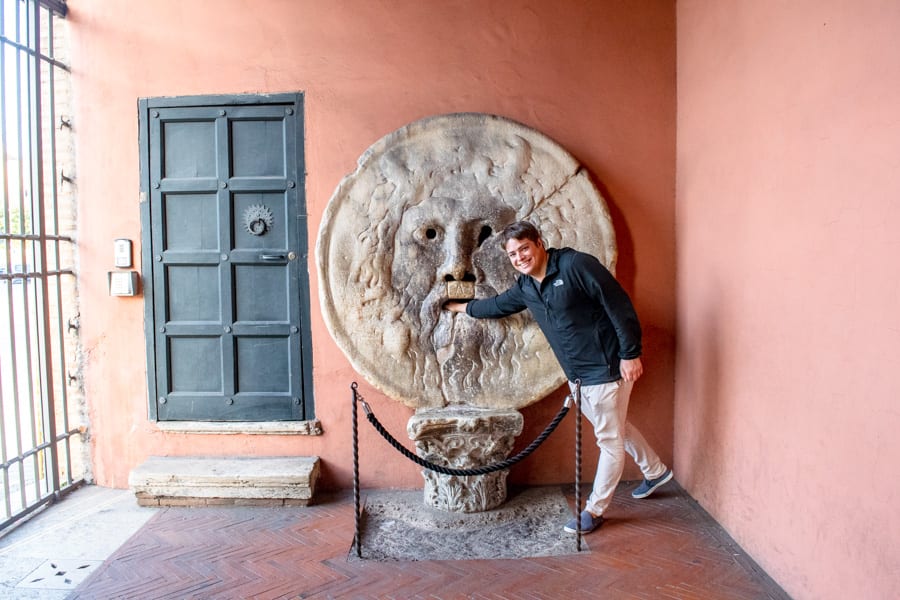
Step 3: Choose your Italy itinerary.
This might be both the most fun and most stressful part of planning a trip to Italy: finalizing where exactly you’re going to go!
We have a recommended 2 week Italy itinerary that we suggest for first-timers to the country, as well as our best suggestions for spending a week in Italy , but ultimately, the sky’s the limit!
If you’re looking for the classic Italy experience, a combination of Rome, Florence, Venice, and Cinque Terre makes an amazing first trip.
If you’re more interested in mountain lakes than idyllic coast line, you could swap Cinque Terre for Lake Como .
If you hope to head south from Rome, Naples , the Amalfi Coast , Pompeii , and Capri are all within close distance of each other and make a great addition to a trip or even a standalone vacation.
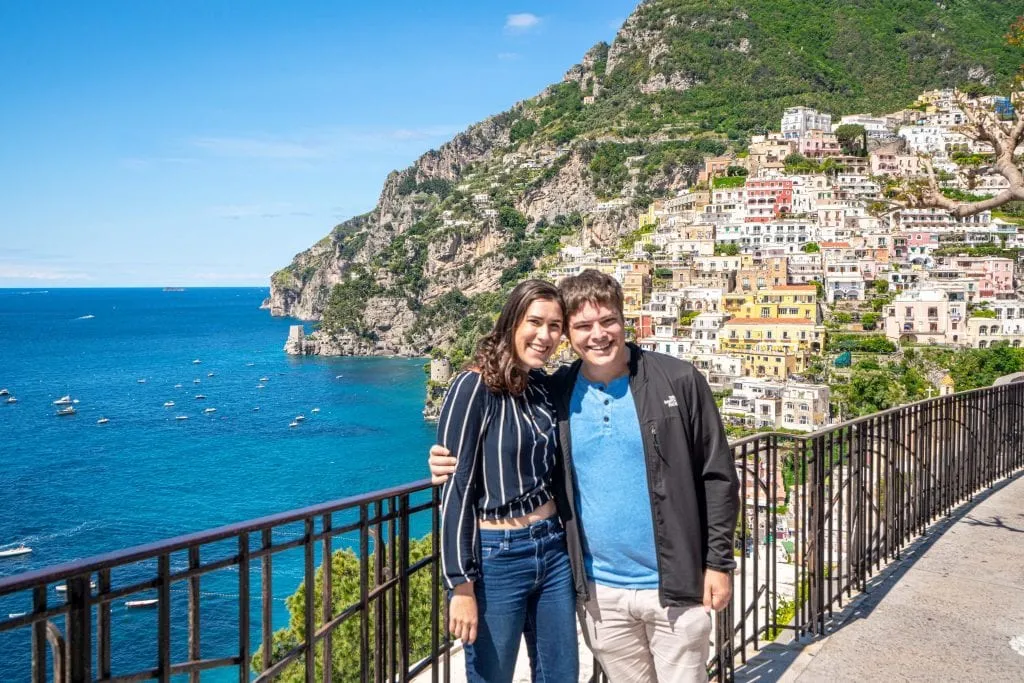
If you’re hoping for mountains, look at Trentino-Alto Adige– Bolzano and Cortina d’Ampezzo are often the launching pads for exploring the Dolomites .
Beach lovers, consider heading to Sicily , Sardinia, or Puglia.
And, of course, foodies can’t go wrong anywhere in Italy–but the regions of Tuscany and Emilia-Romagna in central Italy are sure to captivate your tastebuds.
Interested in roadtripping? Italy is home to some fantastic road trips, though not every area is suited for it.
Here is our guide to the best road trips in Italy , and our suggested Tuscany road trip itinerary !
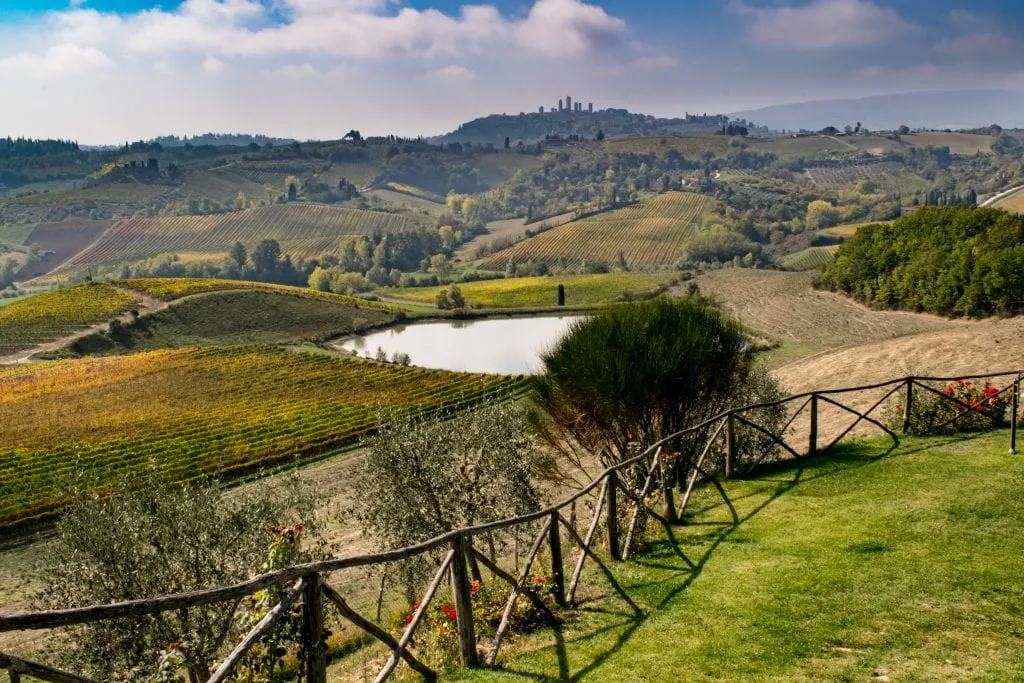

Step 4: Finalize your Italy travel budget.
Now that you know exactly when your trip to Italy is happening and where you are going, it’s time to finalize your Italy travel budget!
We recommend taking the total amount you hope to spend in Italy, subtracting any splurges or major expenses you know are coming (a pricey tour, some clothes shopping, etc), and then dividing the remaining amount by the number of days you’ll be traveling in Italy (we detail this strategy more thoroughly in our travel budgeting guide ).
Presto–you have your daily Italy budget, aka the number you should try to stay under each day when you add up the amount you spend on food, activities, and intra-city transportation.

Step 5: Book some activities in advance.
Here’s the fun part of planning a trip to Italy: booking those iconic experiences you’ve always dreamed of!
While there are plenty of magnificent things to do in Italy that require little to no advance planning, many of Italy’s most iconic attractions are definitely better experienced by planning ahead to take a tour and/or buy a skip-the-line ticket.
We go into far more detail about this on our guides and itineraries for each specific location, but here’s a quick rundown of some of the major sights you’ll want to book ahead of time.
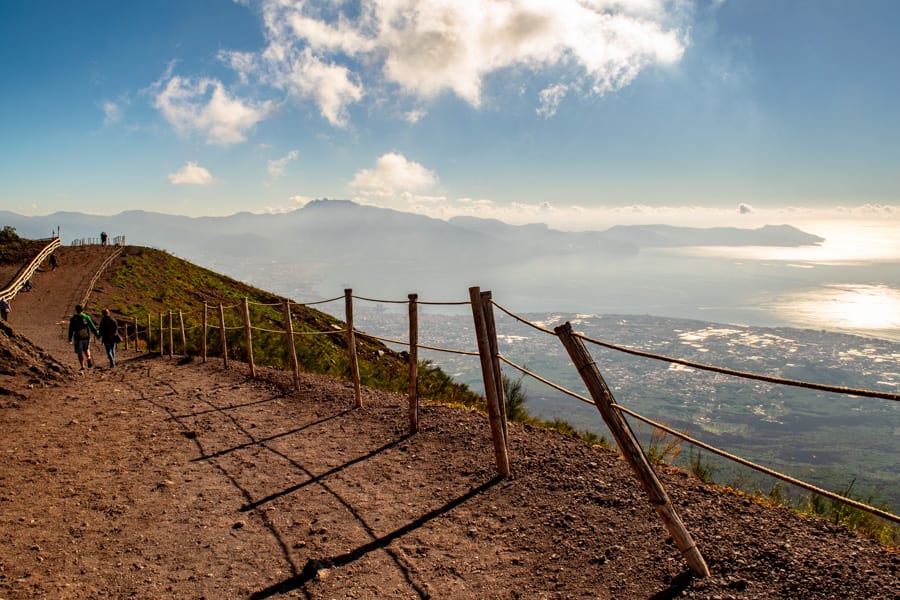
The Colosseum
The vatican museums, florence + tuscany, uffizi gallery, galleria dell’accademia, duomo climb.
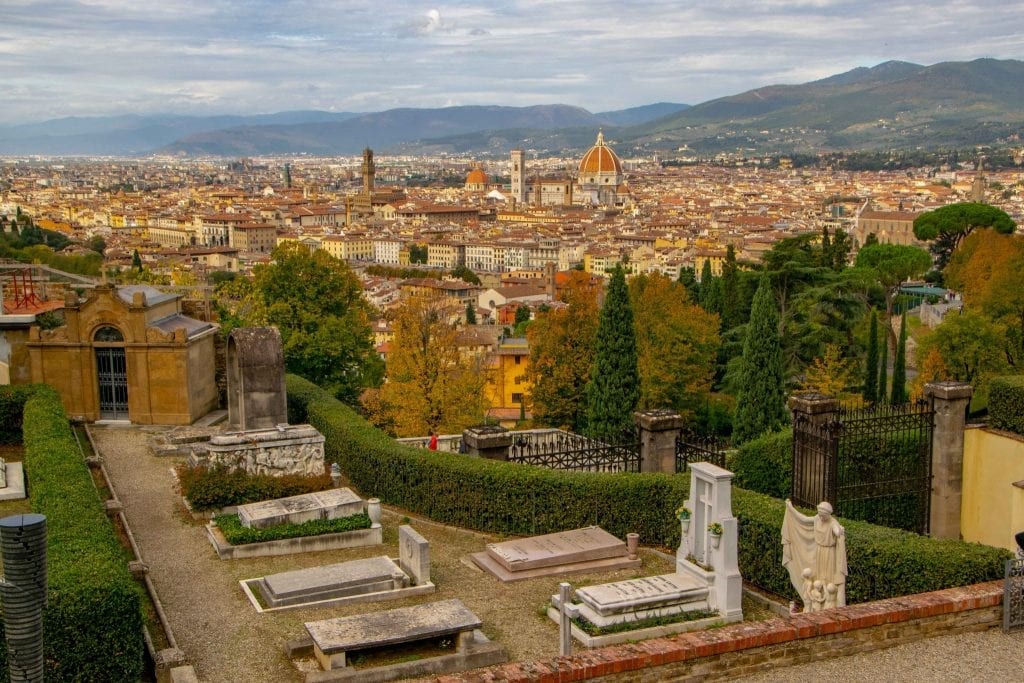
Doge’s Palace + Basilica
Shared gondola ride, pompeii guided tour.
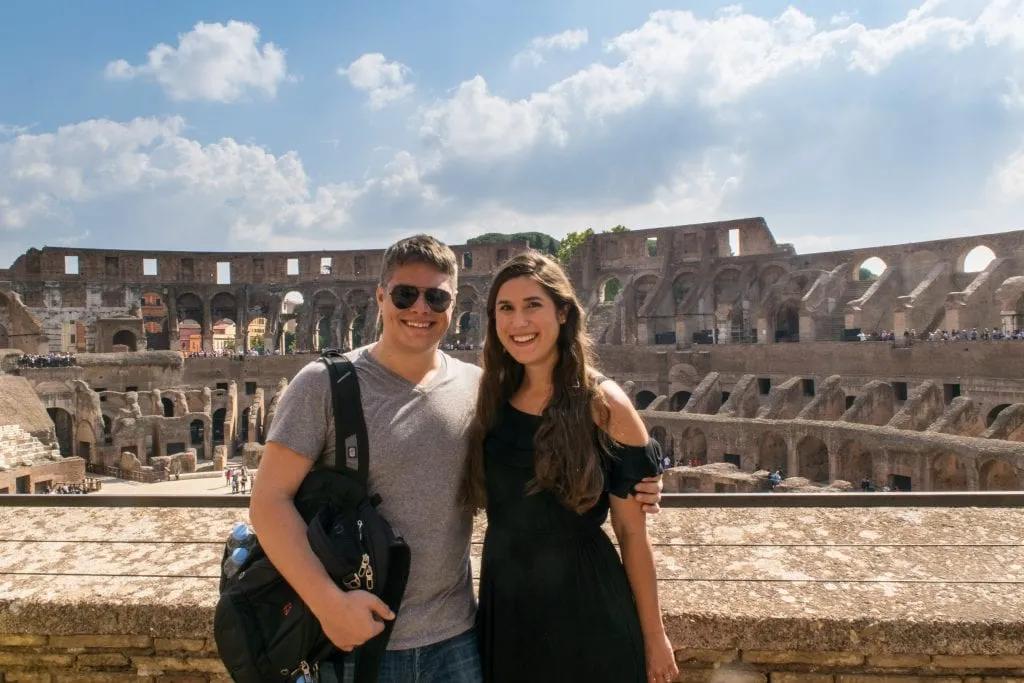
Step 6: Book accommodation.
Next step in planning a trip to Italy: deciding where to sleep!
We offer specific hotel suggestions in our itineraries for each location that we have written about, but here’s the bottom line: in Italy’s major cities like Rome and Venice, it’s fairly easy to find somewhere to stay, so don’t stress about booking months ahead of time unless you have a particular property in mind.
In smaller towns, though–think those along the Amalfi Coast or in Cinque Terre, for example–properties tend to book up a lot faster, and you’ll want to book as far in advance as possible.
We use Booking.com to book hotels and sometimes apartment stays in Italy, and if that doesn’t work out, check out Airbnb for longer apartment stays.
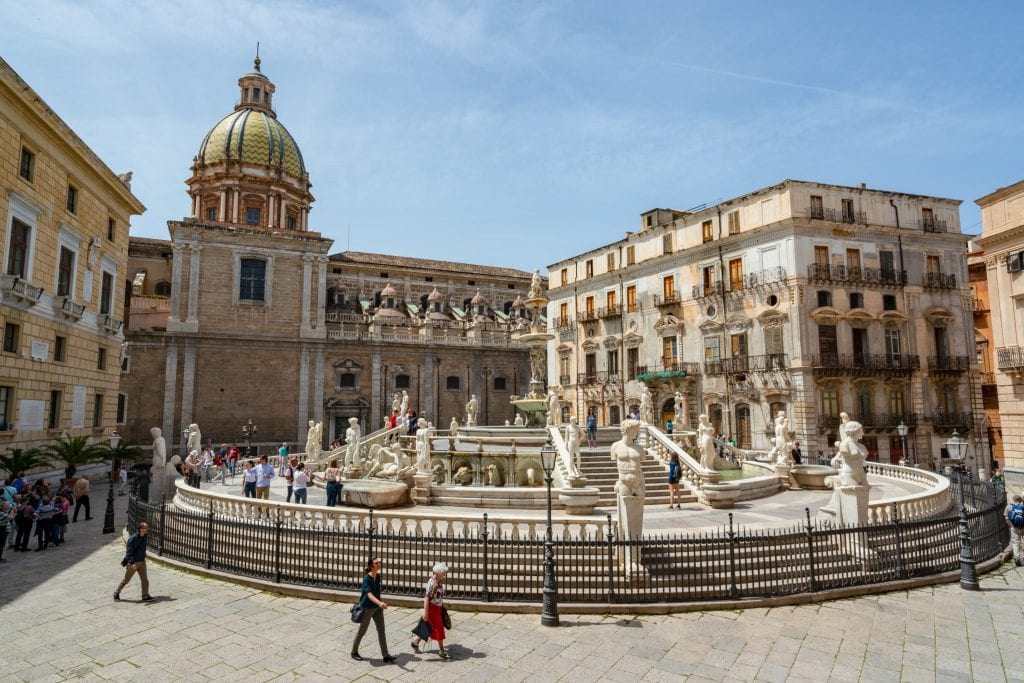
Step 7: Figure out your inter-city transportation.
Now that you know exactly where you want to go, figuring out how to get from destination to destination in Italy–and most importantly, how long it will take and how much it will cost–is the next step in planning an Italy trip.
Note that if you hope to rent a car in the country, you’ll need to obtain an international driving permit before arriving (and double-check that your insurance covers driving in Italy, or purchase a policy that does!).
If you’re planning to take any high-speed trains in Italy, keep in mind that the prices increase as your dates get closer, so book ahead as soon as you’re ready to commit! We use the Trenitalia app to book almost all of our train tickets in Italy.
For regional (aka slow) trains, prices are set and you can just purchase them on the day of travel.
For more on getting around Italy, check out the transportation section of our suggested Italy itinerary.
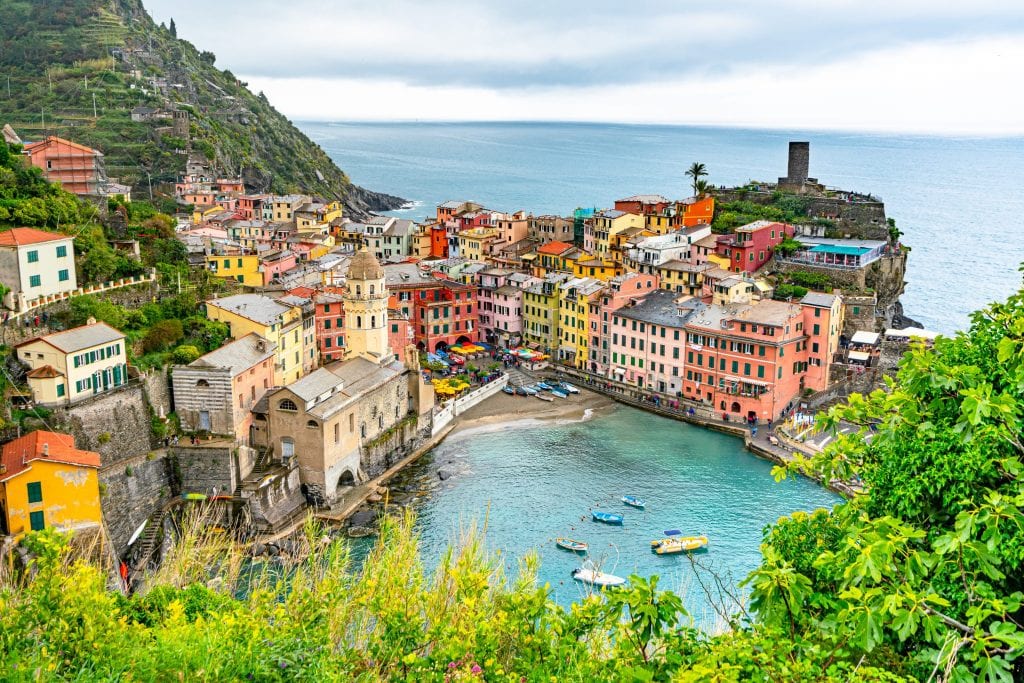
Step 8: Learn a little Italian.
If you’re staying firmly on the tourist trail on your trip to Italy, you won’t necessarily need to speak any Italian to travel there.
… But you will almost certainly encounter some monolingual Italians, and either way, it will definitely enhance your experience in the country to know a tiny bit of Italian.
We personally don’t choose to carry phrase books with us while traveling, but if you like to, Rick Steves’ Italian Phrase Book gets wonderful reviews.
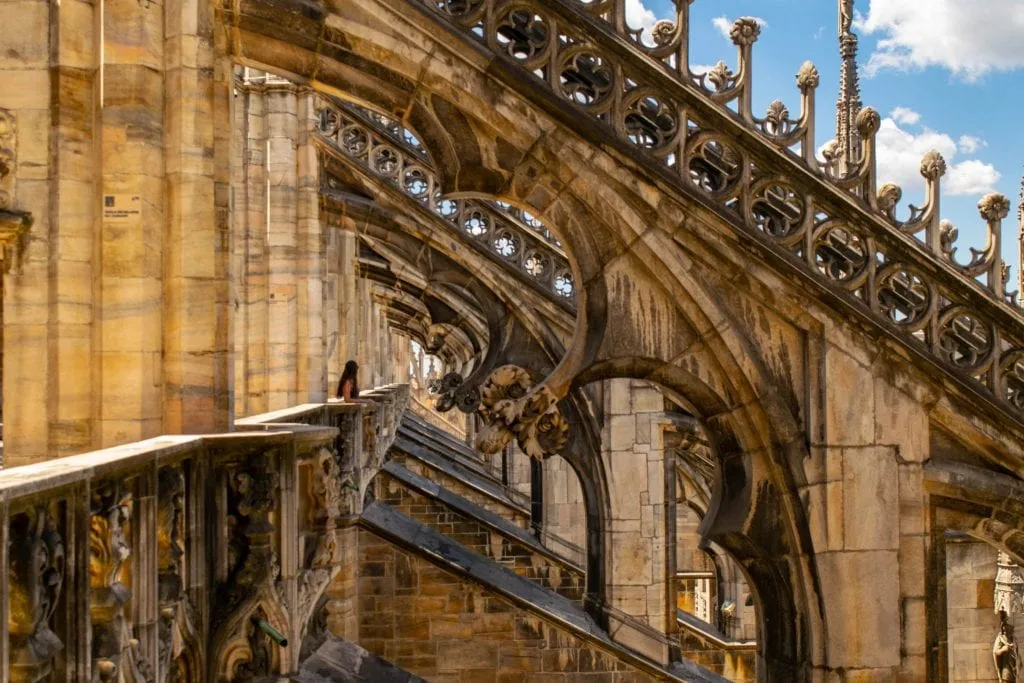
Here are a few phrases to add to your vocabulary when planning a trip to Italy:
Basic Italian Phrases to Learn When Planning a Trip to Italy
Buongiorno. — Good morning.
Buona sera. — Good evening.
Ciao. — Hello/goodbye. (More casual than above.)
Per favore. — Please. (When requesting or accepting something.)
Grazie. — Thank you.
Prego. — You’re welcome, or please. (When offering something–as in, “Please, have a seat.”)
Non capisco. — I don’t understand.
Parla inglese? — Do you speak English?
Il conto. — The check. (In a restaurant.)
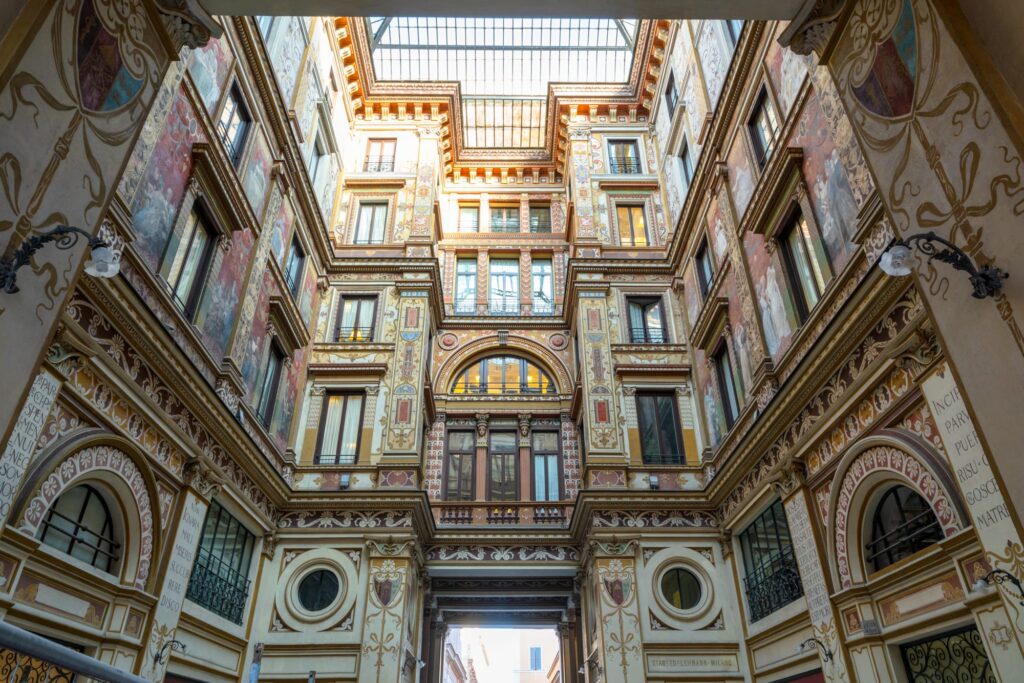
Step 9: Make a packing list (and shop!).
Packing can often be one of the most unexpectedly stressful parts of getting ready for a trip abroad, and Italy is no exception!
You can check out our full suggested Italy packing list here , and our detailed suggestions on what to wear in Rome here (which work for quite a bit of Italy!).
Be sure not to stress too much about packing for Italy, though–just about anything you could possibly forget will be available there too!
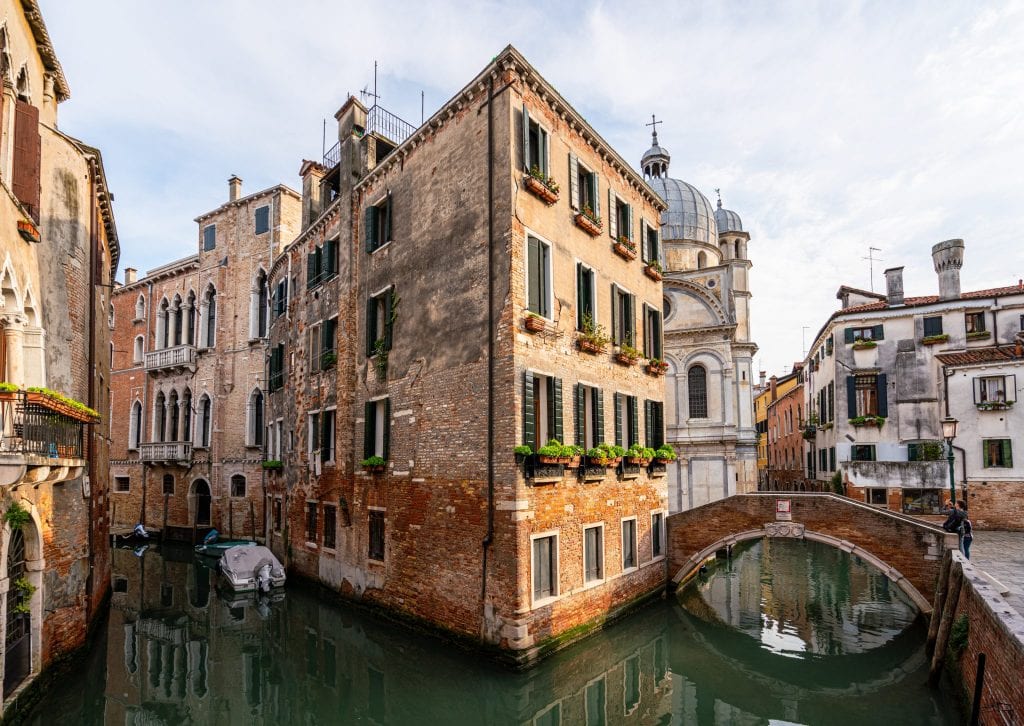
Here are a few essentials to be sure to add to your Italy packing list:
Comfortable Day Bag — We currently use Pacsafe’s sleek anti-theft backpack and love it, but if you don’t want to shell out the cash for this trip, that’s totally understandable.
Just aim for something comfortable to wear, not flashy, and medium-sized–we used a Northface Jester backpack for years and loved it as well.
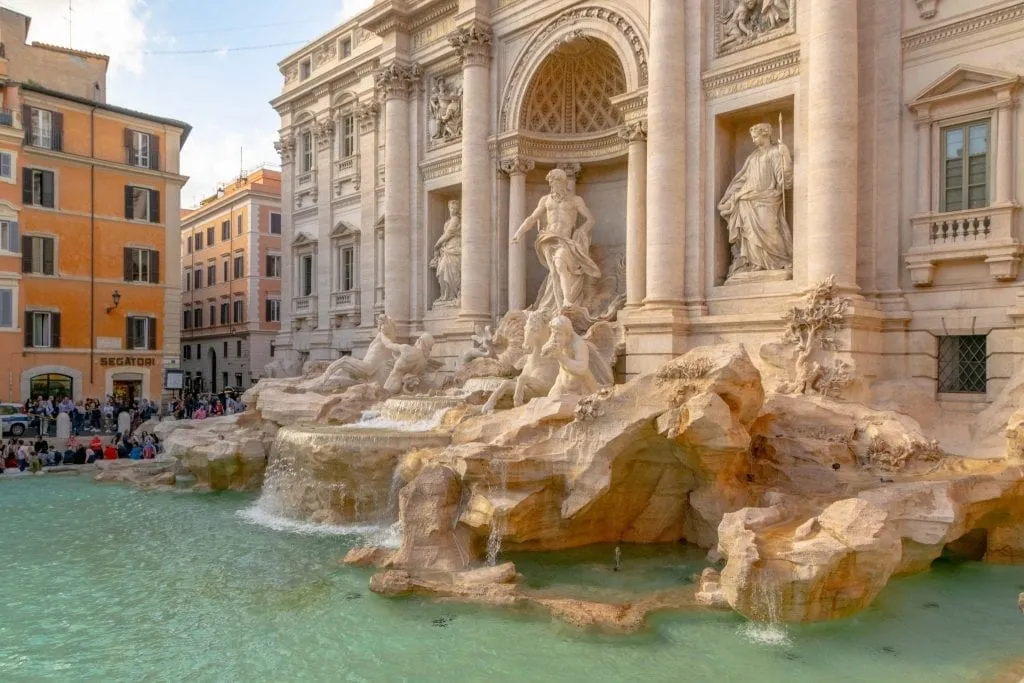
Money Belt — This is up to you: we no longer use one, but if you’re more comfortable having your passports on your person in Italy, you can consider bringing one.
Step 10: Purchase travel insurance.
Don’t forget to purchase travel insurance before jetting off to Italy! While Italy is a perfectly safe country to travel in, traveling in general opens you up to vulnerabilities that you simply don’t have at home: if you miss a plane or train, have your luggage get lost, get pickpocketed, or worse, get injured, you’ll be glad that you have insurance.
Given how inexpensive travel insurance is when purchased in advance (especially as compared to the price of plane tickets to Italy!), it’s well worth the investment.
Check travel insurance policy inclusions and prices for your trip here .
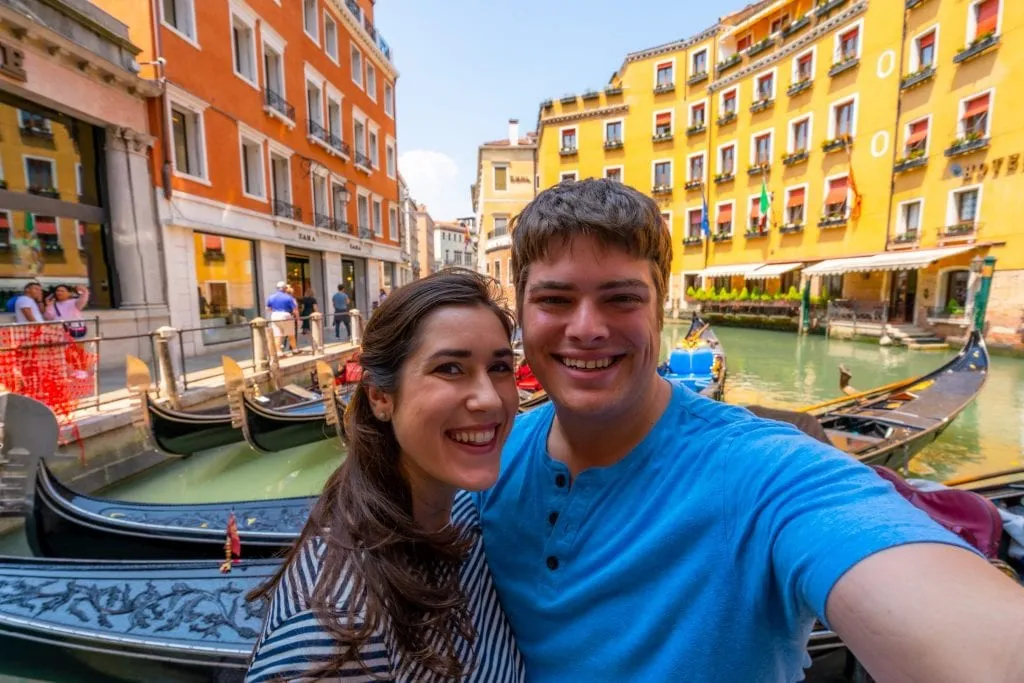
Step 11: Make your arrival plan.
The final step of planning a trip to Italy is as simple as it is important: make an arrival plan.
When you arrive in Italy, you’re undoubtedly going to be exhausted, overwhelmed, and probably a bit jetlagged, too!
No matter how many times we arrive in a new country, it never stops being a tiny bit stressful, simply because there are a lot of variables at play in the first few hours of arriving somewhere new.
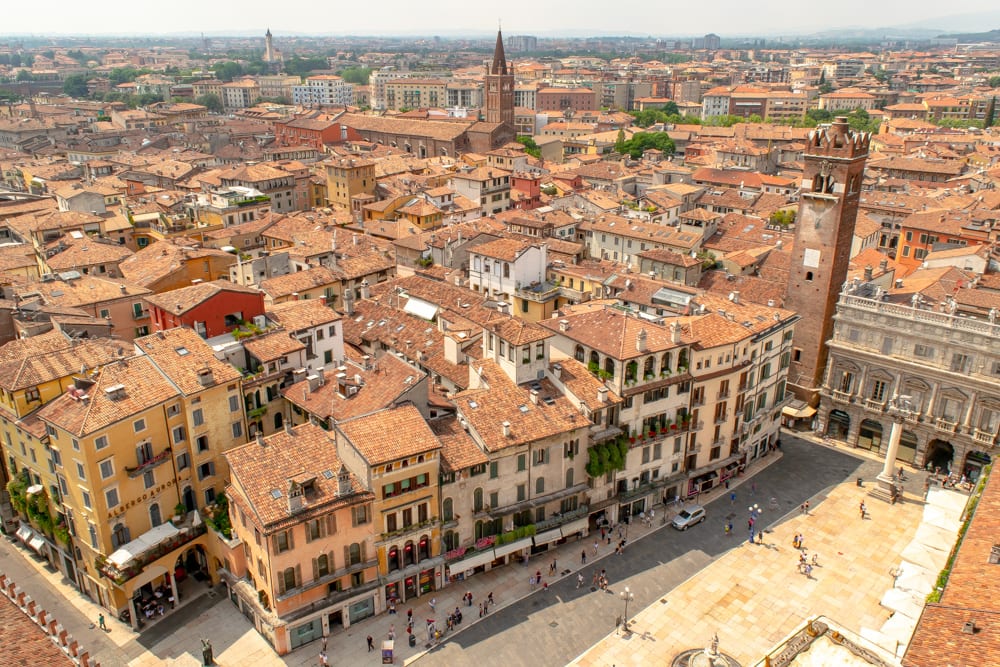
Make life easier on yourself by thinking ahead: when working on your trip to Italy plan, figure out your exact steps of what will happen after the plane lands.
That means exactly how far away your hotel is, how you’ll get there from the airport (train, bus, rental car, taxi?), and if you’ll be traveling by taxi, what a reasonable price is and/or if there’s a set fare from the airport to the city center (in Italy, there often is).
Though it’s not strictly necessary, if you’d like to make arriving in Italy extra-easy for yourself, consider treating yourself to an airport transfer when you arrive!
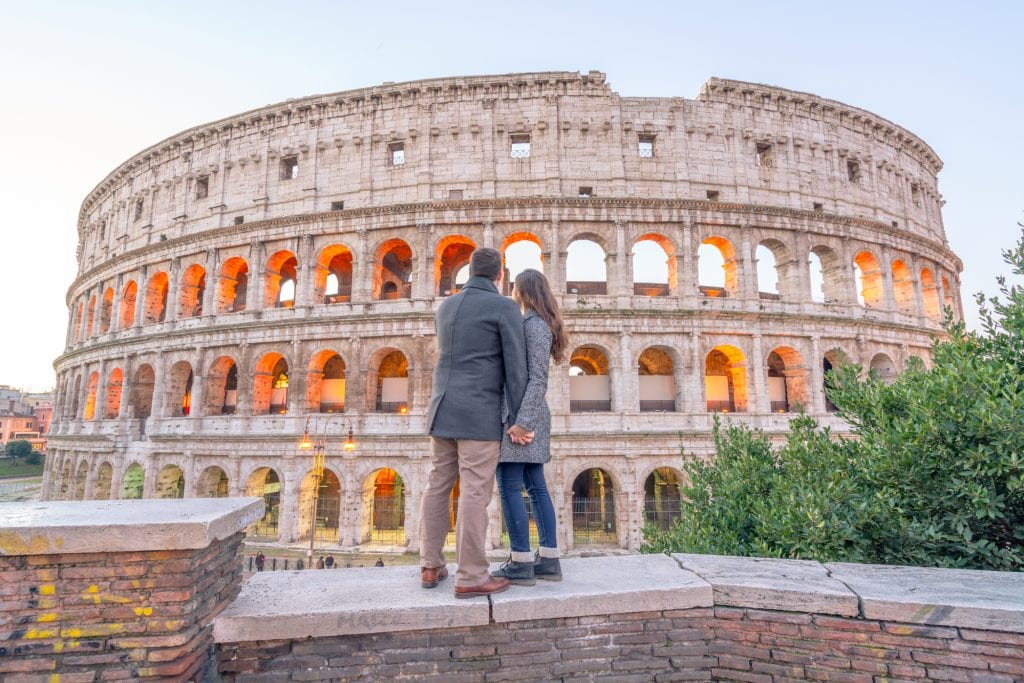
Shuttle Bus from Fiumicino Airport to Roma Termini
(Bear in mind that while this is actually cheaper than taking the Leonardo Express train independently, it does also take longer to get to Rome!)
Private Transfer from Fiumicino Airport to Rome
Private transfer from florence airport to florence, shuttle bus from marco polo airport to venice, shared water taxi from marco polo airport to venice.
[convertkit form=828904]
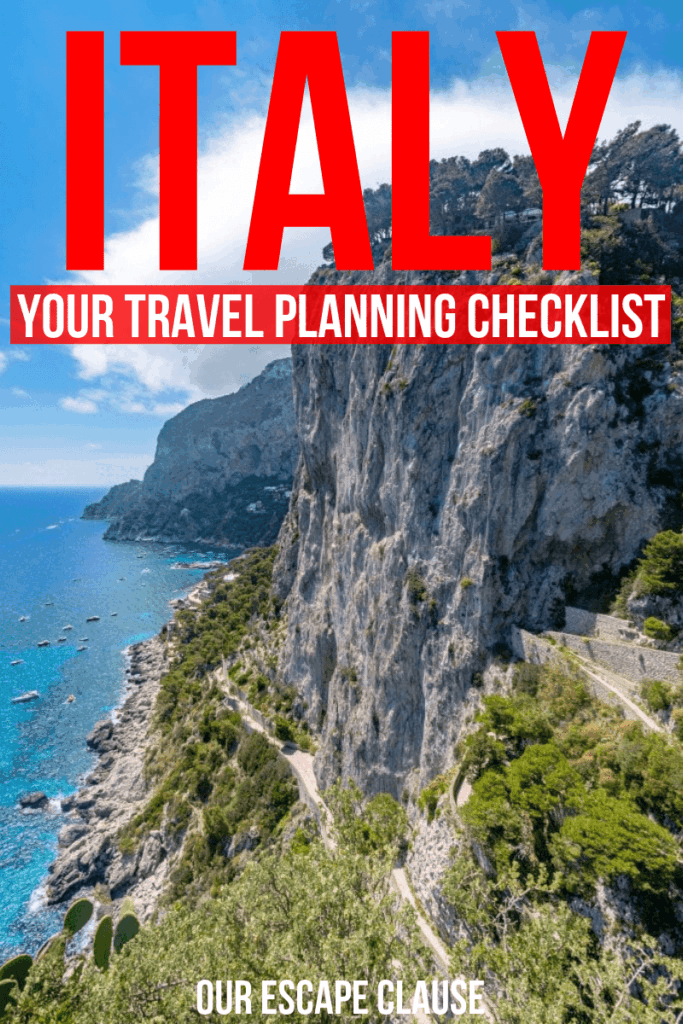
About Kate Storm

In May 2016, I left my suburban life in the USA and became a full-time traveler. Since then, I have visited 50+ countries on 5 continents and lived in Portugal, developing a special love of traveling in Europe (especially Italy) along the way. Today, along with my husband Jeremy and dog Ranger, I’m working toward my eventual goal of splitting my life between Europe and the USA.
11 thoughts on “Planning a Trip to Italy: Your Easy 11-Step Checklist”
This super helpful. Thank you so much!
Thrilled to hear it, thanks Tomeekha!
I am so thankful I found you, Kate! I plan to use your valuable wisdom in planning an extension to a food & wine tour that I booked in 2021. This existing tour ends in Rome. I want to plan a 3-4 night extension along the Amalfi Coast. Congratulations to you, Jeremy & Ranger for living your passion!! I admire your confidence! Best wishes!
Thank you so much, Tammy! I hope you have a wonderful trip and love the Amalfi Coast! 🙂
Wow- amazingly helpful -thank you so very much!!
Happy to help! Hope you guys have a great trip to Italy 🙂
I appreciate your details and encouragement. My husband and I are visiting Sicily for 10 days then off to Cinque Terre for 7 days. I especially appreciate your tips about practicing your landing plan upon arrival Good idea. Also I will be trying the google translate to interpret menus and such things. Thank you
Thanks so much, Cheryl! Sounds like you guys have an incredible trip planned. Enjoy Italy!
Hi Kate, Thank you for the information. It is extremely insightful. Am planning to visit itlay this june with my daughter. We are traveling to attend a family friend’s birthday celebration in Tuscany. My plan thus was to head to Rome first and have planned a 6 days stay, post which we head to Tuscany via train for 5 days. As we have both visited Florence wanted your recommendation on where to next before we head back. Based on your blogs Venice is a must though there are not enough flights out of there so will have to head back to rome to take a flight. Suggestions appreciated.
Sounds like a beautiful trip!
I could easily name a fifty places within a train ride of Florence to add to your trip, but so much will depend on your tastes!
Any of the major cities–including Venice–will allow you to get back to Rome for your return flight fairly easily, so you should be able to structure your itinerary fairly easily there.
Just a few options in addition to Venice, with links to our guides…
Bologna: one of Italy’s best foodie cities and the capital of Emilia-Romagna. It’s a stunner! ( https://www.ourescapeclause.com/things-to-do-in-bologna/ )
Parma: Less visited than Bologna but beautiful and relaxing, Parma is the origin of parmigiano-reggiano and has an incredible cathedral. ( https://www.ourescapeclause.com/best-things-to-do-in-parma-italy/ )
Lucca: A quieter Tuscan city than Florence, Lucca is walled, and also makes a great base for day trips in Tuscany and even Liguria. ( https://www.ourescapeclause.com/things-to-do-in-lucca-italy/ )
Verona: The city of Romeo and Juliet, Verona is set on a river and is crisp, beautiful, and interesting! ( https://www.ourescapeclause.com/things-to-do-in-verona/ )
Bolzano: Located in far northern Italy, Bolzano has one of the most unique museums in Europe and is perfect for accessing the Dolomites. ( https://www.ourescapeclause.com/things-to-do-in-bolzano-italy/ )
That’s truly just a handful of an endless array of options, but you can’t go wrong with any of them!
Leave a Comment Cancel reply

Pack your bags
Subscribe to my newsletter to get updates in your inbox!
You have successfully joined our subscriber list.
10 Day Trip to Italy: The Perfect Itinerary You Should Steal
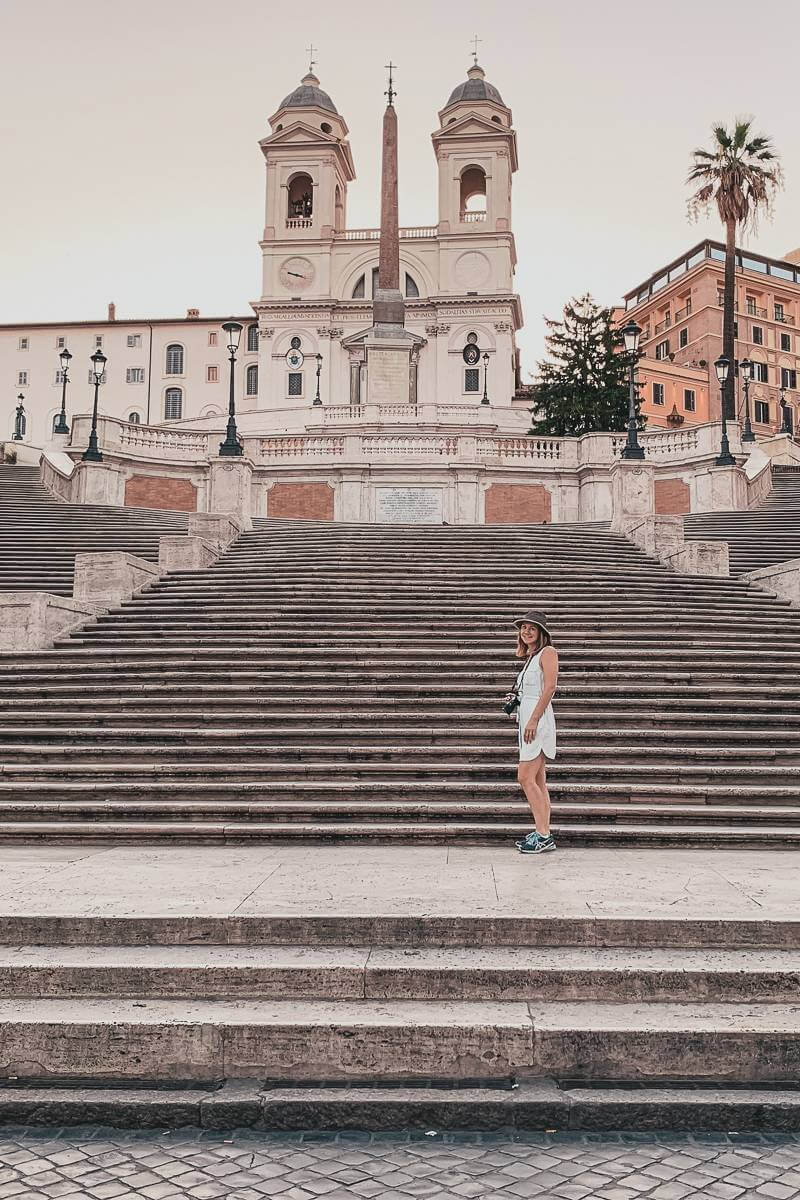
This post may contain affiliate links, meaning if you buy or book through one of these links, I may earn a small commission .
Are you in the midst of planning your dream trip to Italy? Then get ready for beautiful villages, ancient ruins, delicious fresh food and wine, and amazing espresso. There’s a lot to see over a 10 day trip to Italy, and this itinerary will make sure you get the most out of your time.
Italy is one of the most magical places I’ve ever visited, and my sixth country. I’ll never forget looking out the plane window as we descended into Rome. We were treated to stunning views of the Italian coastline, with little white boats dotting the intensely blue sea.
My husband and I are still talking about this trip because it was so mind-blowingly awesome, with some of our favorite memories together. We reminisce on photos all the time, and pine to return to Italy as soon as we can. There is still so much in this country that we’ve yet to see.
With so much to explore in Italy, it can be difficult to condense the many worthy sights into one trip. However, this classic 10 day Italy itinerary will help any first-timer experience the best that Italy has to offer. Let’s get into it!
The Perfect 10 Day Italy Trip Itinerary

Here is a quick overview of this itinerary, which will take you through three regions of Italy, all with their own unique character. By the end of this trip, you’ll have gotten to experience the ancient city of Rome, the Ligurian Sea views of Cinque Terre, and the rolling hills and Renaissance history of Tuscany.
- Rome – 4 Days
- Cinque Terre – 3 Days
- Florence – 3 Days
Additionally, this 10 day Italy trip itinerary assumes you will be getting around Italy mostly by train, since a car is largely impractical in these destinations. This itinerary is detailed, but lengthy. Therefore, I’ve created the below table of contents so you can skip ahead.
Table of Contents
- Day 1: Rome – Settle In
- Day 2: Rome – Walking Tour
- Day 3: Rome – The Vatican
- Day 4: Rome – Ancient Sites
- Day 5: Cinque Terre – Settle In
- Day 6: Cinque Terre – Vernazza & Monterosso al Mare
- Day 7: Cinque Terre – High Trail to Manarola
- Day 8: Florence – Settle in & Food Tour
- Day 9: Florence – Explore the City
- Day 10: Florence – Chianti Classico Day Trip
- Fly Home: Head to FLR Airport
Best Time to Visit Italy
10 day italy trip stop #1: rome, day 1: rome.

This will be your arrival day in Rome, aka The Eternal City. We took a red-eye flight the night before in order to arrive by noon on our first day. This gave us the full day to settle in, and start working through our jet lag.
Arrival in Rome
You will arrive into Fiumicino (FCO), or Leonardo da Vinci Airport. First, you’ll need to clear customs, which could take a while depending on the day. Then you can proceed to picking up any checked bags, though we personally prefer carry-on only.
After that, I recommend finding an ATM, as having cash on hand is useful in Italy. We took out about €200 to start. I do not recommend bringing USD (or other currency) to convert on arrival, as currency exchange counters are notorious for unfavorable rates.
Leonardo Express

Next, it’s time to navigate to the Rome city center via the Leonardo Express :
- First you will need to buy your tickets, which cost €14 per person. Purchase them online here , or at a kiosk in the airport. Note that the kiosks often have lines and can be slow.
- To find the train platform, follow well-marked airport signs with a train icon or that say “stazione” or “TRENI”.
- Take the Leonardo Express to Termini Station in Rome (Roma Termini). The train leaves approximately every 15 minutes, and the ride takes about 32 minutes.
Once you arrive into Termini Station, take the metro from there to your lodging. We booked an Airbnb near the Spanish Steps, so we took Line A to the Spagna stop (click here for maps).
The metro is very easy to use, as trains run frequently and tickets can be purchased in any metro station, tobacco shops, or newsstand kiosks. One way tickets cost €1.50 each, and there are also various multi-use passes available, explained here .
By now, you should be navigating to your lodging, whether that means taking the metro, bus, walking, or grabbing a taxi. As we walked from Spagna, I’ll never forget the sweltering heat and buildings shaded in sunburnt yellows, oranges, and reds emerging all around me. The beautiful fountain at the foot of the Spanish Steps was looking very inviting.
Once you get settled in, you may want to pick up a few simple grocery items to have on hand. This is very helpful with staying on budget during your trip, even if just breakfast or lunch. We were able to find a small grocery store that was only about a five minute walk from our place.
If possible, I recommend staying somewhere with a terrace and Nespresso machine. These items were instrumental in taking my Rome experience to the next level.
Head Out for Food

One thing you can do your first night is grab dinner, and perhaps go for an evening walk. We were exhausted from our long travel day, so chose not to veer too far from our lodging. However, we did find some adorable street dining just a few streets over from the Spanish Steps for cacio e pepe, which is essentially Italian mac and cheese.
Travel Savvy Tip
Take advantage of your jetlag. If you find yourself restless in the wee hours of the morning, set out for an early walk. Getting up early your first day helps get your sleep back on schedule sooner.
One of the best things my husband and I ever did was go out for a morning 6 am walk in Rome. There is nothing like seeing the Spanish Steps and Trevi Fountain when they are completely deserted, save for a few photographers. We were lucky to be staying within a ten minute walk of both places.
Day 2: Rome

It’s time to hit the ground running for your first full day in Rome. First of all, read my previous jet lag tip and consider heading out for an early walk. It’s magical to see Rome’s most iconic sights before they become super crowded.
Visit a Cafe
Next, eat some breakfast at your place or head to a café. Or do both. I’m pretty sure we ate an espresso or cappuccino along with a cornetto (Italian croissant) every day, regardless of any other breakfast we had. Did I mention you might gain weight while you’re in Italy?

After you’ve fueled up some, head out for a morning sightseeing walk. This could be a guided tour or simply self-guided. A guided tour like this one will help you get a better understanding of your surroundings, while self-guided is free and will give you more freedom and flexibility.
If you prefer to explore on your own, here is a beautiful route I’ve mapped out that will show you the highlights of Rome (link to Part 1 and Part 2 ). This walk is one of our best memories, and didn’t cost a dime! Bring your camera and expect to spend two to four hours exploring, depending on your pace.

Here is a list of some of the amazing sights you’ll see:
- Begin at Piazza Barberini
- Climb up the Spanish Steps
- Check out the view over Piazza del Popolo from Terrazza del Pincio
- Stroll charming Via Margutta
- Explore the Pantheon
- View the fountains in Piazza Navona
- Check out the markets stalls in Campo de’ Fiori
- View the River Tiber from 15th century bridge Ponte Sisto
- Take a selfie after throwing a coin into the Trevi Fountain
After your walk, take an afternoon rest at your lodging and eat some lunch.
You’ll run into fresh water fountains (nasoni) all around Rome. These are the result of aqueducts built by the ancient Romans.
The water is fresh from the mountains near Rome and is tested regularly, so it’s perfectly safe to drink! We carried a water bottle around with us as we explored, and constantly filled up when we’d run into a fountain.
Borghese Gallery
At 5 pm, check out the Borghese Gallery, which has an impressive collection of sculptures and paintings housed in a 17th century villa. Reservations are required, and the museum is open every day except Monday from 9 am to 7 pm. Tickets for a two-hour time slot cost €15 and can be purchased here .
Finish off your day with pizza. We ate ours at Da Francesco , which is a cozy space in an awesome location near Piazza Navona. We loved the opportunity to see the fountains of this gorgeous piazza lit up at night when we were done.
Day 3: Rome
By day 3 of your 10 day trip to Italy, hopefully your jetlag is improving. Mine and my husband’s was pretty bad, and it took about three or four days to stop waking up full of energy at 2 am. I was thankful for the great espresso all around me!

Tour The Vatican
The Vatican is an absolute must on any 10 day Italy itinerary. I knew next to nothing about it before our trip, but during our visit I learned a ton about how the Vatican was once a seat of power that greatly influenced western civilization.
Of the 110 acres and 1,400 rooms, here are some of the highlights you will see:
- Michelangelo’s Sistine Chapel
- St. Peter’s Basilica
- St. Peter’s Square
- Gallery of the Maps (my favorite)

You can easily reach Vatican City from Rome via the metro. You will need to take Line A to the Ottaviano stop. Many tour groups meet nearby the station, or you can simply walk five minutes to the Vatican Museums.
In summer, the Vatican can see as many as 20,000 visitors per day. Therefore, it’s imperative to book your tickets in advance, so you do not have to wait in a very long line outside. Tickets can be purchased here for €17 .
The Vatican is also enormous. A guided tour will help you cut through the crowds and focus your attention so you understand what you’re looking at. We did this 4-hour tour that, while tiring, did our visit justice and allowed us to see the Sistine Chapel before the worst of the crowds.
As The Vatican is a religious site, you must dress appropriately, or your entrance could be denied. If you cover your shoulders and knees and avoid wearing controversial graphic tees, you should be fine.
Additionally, the Vatican is closed on Sundays, except the last Sunday of the month, which is a free day. While this will save you money, the crowds will be terrible and could dampen your experience. All that body heat in tight rooms can make things feel very stuffy and claustrophobic.

Our Vatican tour took a lot out of us and we were still jetlagged, so we had a low key afternoon on Day 3. This left us nice and refreshed to go back out for dinner around 7 pm.
Do note that many restaurants prefer you make reservations. However, you can often make them at the last minute and walk-ins are sometimes still accepted. In Rome, dinner is generally served between 7 pm and 11 pm.
Be careful not to accidentally end up at a tourist trap, which are generally found near popular tourist sites and tend to have blown-up menus showing pictures of food at the entrance. These spots are not only inauthentic, but also overpriced. Moving even one street over from a major tourist spot can mean better dining options.
We enjoyed dining in the Piazza Navona neighborhood so much the first night, that we had to return the next evening. This time we chose Saltimbocca, which had beautiful street dining and served authentic pasta and seafood dishes.
If you are trying to save money and aren’t especially particular about wine, then always order a caraffa of the house wine. There is usually a red and white selection, and they are always good! I didn’t have a single bad glass of wine throughout our 10 day Italy trip.
Day 4: Rome

Ancient Rome
Spend your last day exploring different aspects of ancient Rome. Plan to spend a total of two to four hours at the following:
- Colosseum: Once a site of gladiator fights and other public displays
- Roman Forum: Center of public life in ancient Rome
- Palatine Hill: Site of ancient aristocratic settlements
All three of these sites are covered under one €16 ticket, which can be bought here . You will need to reserve a time slot when booking your ticket, and a €2 presale fee will also apply.
In peak summer season, it’s best to arrive early in the morning for cooler air and smaller crowds. All of these sights are outdoors, and the hot midday sun can turn wandering through fascinating ruins into a chore.
After a few hours of sightseeing, take a gelato break – the colosseum is virtually surrounded by gelaterias.
Capitoline Museums
In the evening, if you have energy left from your Rome adventures, head back out to the Capitoline Museums. Sitting on top of the Capitoline Hill, this museum features an expansive collection of paintings and sculptures, many of which came from the city of Rome. The museum is open every day until 7:30 pm, and tickets to the various exhibitions can be purchased here .
Full disclosure, we actually skipped this sight because we were exhausted from 3 days of wandering around Rome. We were ready for some wine, and were super excited for our dinner reservations.
Atmospheric Dinner

Hands down, the place my husband and I remember the most from our 10 day Italy trip is Old Bear. This rustic spot is located on a quiet street, and has the perfect ambiance for your last evening in Rome. We were glad to have made reservations the night before, since many people were waiting a long time in the street for a table to open up.
I will never forget my delicious pumpkin lasagna – and I’m not even a lasagna person! Unfortunately, I have no photos because I was face first in my food.
There are a few money saving tricks for sightseeing in Rome. The first is considering whether the Roma Pass may be worth it for you. There are options for 48 and 72 hour periods, and could save you money depending on how many included sights you wish to see, and how often you’ll use public transportation.
Additionally, some museums do a free day each month. Check their respective websites to see if any dates fall during your trip. That said, free days also bring big crowds and long waits, which might not be ideal if you’re tight on time.
10 Day Italy Trip Stop #2: Cinque Terre

Day 5: Cinque Terre
The next iconic stop on your 10 day Italy trip is Liguria, home to the colorful Cinque Terre villages that seemingly pop out from the vineyard covered hillsides. To reach Cinque Terre from Rome, take the train from Roma Termini station to La Spezia Centrale. La Spezia is a larger town located south of Cinque Terre, and the jumping point for all five villages (listed out below from south to north):
- Riomaggiore
- Monterosso al Mare
From La Spezia Centrale, hop on the Cinque Terre Express (€4) to the village you are staying in. We picked Corniglia, which is the middle village and third stop. If you also choose Corniglia, be aware that reaching this particular village additionally requires climbing over 300 steps or grabbing a shuttle bus (€1.50).

Once you’re settled, do some exploring around your village before finding dinner. These five towns are tiny and easy to quickly see on foot, though some are more hilly than others. This post provides more info about each village and advice on choosing where to stay.
Just keep in mind that no matter where you base yourself, you’ll still be able to easily visit the other four villages with a quick train ride.
Trains in Italy are often late. Therefore, I recommend not purchasing tickets with tight connections.
In this instance, you could purchase your journey from Roma Termini to your Cinque Terre village on the Trenitalia website in one transaction. However, these connections are often twenty minutes or less, which isn’t ideal if your first train gets delayed.
As it is not more expensive to book each leg of the trip separately, I suggest waiting to purchase your Cinque Terre ticket until you arrive in La Spezia. These tickets are very easy to purchase at the ticket counter or machines right on site.
Day 6: Cinque Terre
The five villages of Cinque Terre are connected by hiking paths that offer some incredible views over the Ligurian Sea. You’d be hard pressed to find something like this anywhere else; therefore, it’s crucial to get out on the trails at least a little bit.
If you get tired or decide not to hike after all, the train will be there for you to fall back on, but the views are not nearly as good!
Hike to Vernazza

Today you will hike the Blue Path, or Cinque Terre’s most famous coastal trail, from Corniglia to Vernazza, and then finally onto Monterosso al Mare. I suggest getting an early start, as the trails can get crowded by mid-afternoon. Note that this particular trail requires purchasing a pass for 7 euros, which you can buy online or right at the trailhead when it opens around 9 am.
If you aren’t staying in Corniglia, you will first need to take the train there in order to begin your hike (just prepare for those stairs, or grab the shuttle from the train station). You could also hike in the other direction, starting in Monterosso al Mare. However, then you’ll miss the striking beach views when descending into Monterosso, as well as the chance to jump in the water at the end!

The first leg of the hike between Corniglia and Vernazza will take around 1.5 hours. Be sure to take in the amazing views of Vernazza from the trail as you approach the village. Once in Vernazza, take a break from hiking to do some exploring:
- Eat gelato at Gelateria Vernazza (the best gelato we ate in Cinque Terre)
- Grab a snack, such as a fried seafood cone
- Stroll around the harbor
- Pop into the Santa Margherita di Antiochia Church, which dates back to the 14th century
- Take the tunnel to Vernazza’s secluded rock beach
Hike to Monterosso al Mare

Next, continue your hike on the Blue Trail to Monterosso al Mare, which should take another 1.5 hours. Monterosso al Mare is flatter than the other four villages, which makes it easier to explore. It’s also known for having the nicest beach of the five villages.
When you arrive, you’ll likely be exhausted and covered in sweat. Therefore, you must reward yourself with an aperol spritz and snack on the water, like we did at Nuovo Bar Eden.
Next it’s time to jump into the Ligurian Sea, after staring longingly at it from the trails all day. For €30, you can rent two chairs and an umbrella at Bagno Eden .
This was definitely one of the highlights of my Cinque Terre experience, and I was glad we thought ahead and brought swimwear with us. When we were finally dry, Aaron and I took the train back to Corniglia to get ready for dinner.
You may need to purchase a Cinque Terre Card . If you plan to hike the Blue Trail, then you will at least need a Trekking Card (€7.50) for each day you plan to use that trail. The Trekking Card will also cover any shuttle buses.
You may also save money by purchasing the Treno Card instead of the Trekking Card. The price will depend on whether you need it for one (€16), two (€29) or three days (€41).
The Treno Card covers the Blue Path, unlimited train travel, and shuttle buses. It is worth purchasing for at least one day if you plan to hike the Blue Trail, take the train at least twice, and use a shuttle bus one time. Either card can be purchased online here .
Dinner in Riomaggiore

At the moment, the trail that leads to Riomaggiore from Manarola is closed due to landslides. Instead of hiking, you can give your legs a rest and take the train to Riomaggiore for dinner.
An excellent restaurant to check out is Bar e Vini a Pié de Ma . I recommend making a reservation to ensure you get to experience this restaurant’s beautiful cliffside terrace. There was so much ambiance during sunset, so we took our time sipping wine and ordering every course available.
Day 7: Cinque Terre
There is only one more village left to visit: Manarola. To reach it, you will hike in the opposite direction from Corniglia on a quiet, scenic trail.
Hike to Manarola

Today you’ll hike from Corniglia to Manarola via Volastra (trail #587 to #586 to #506). This is a higher trail that will have you going up, up, up at the beginning, and then back down seemingly endless stairs at the end. This hike takes around 2 to 2.5 hours to complete.
While the hike begins with a long climb up many stone steps, it eventually levels out and becomes quite shady and pleasant. You are then rewarded with incredible sea views as you pass through charming vineyards.

Once in Manarola, join the queue for lunch at Nessun Dorma to experience their famous views and meat and cheese platters. While on the waterfront path to the restaurant, be sure to turn around to take in the view of Manarola across the harbor. It is postcard perfect!
To be honest, my husband and I did not linger long in Manarola. It was the busiest of the five villages, and being that it was the middle of the day, the crowds were bad. If you wish to avoid crowds, it’s best to visit Manarola in the evening when the day trippers have left.
Dinner in Corniglia

For a memorable seafood dinner on your last night, make a reservation at A Cantina da Mananan in Corniglia. This cozy space can only seat about 20 people at a time, so the tables will fill up.
Be prepared for plenty of ambiance, as well as plates featuring local fresh catches. We particularly enjoyed the taglierini ai frutti di mare.
10 Day Italy Trip Stop #3: Florence
Day 8: florence.

It’s time for the last leg of your 10 day Italy trip: Florence . This Tuscan city is the birthplace of the Renaissance, and today it continues to attract lovers of food, art, and architecture.
Florence is easily reached from Cinque Terre via train. You will first need to grab the Cinque Terre Express from your village to La Spezia. From La Spezia, catch your next train to Florence’s Santa Maria Novella station, either directly or with one connection. Purchase your train tickets online in advance on Trenitalia or simply right at the gate.

Upon arrival, I highly recommend joining an evening food tour in Florence’s Oltrarno neighborhood. This was one of the best experiences of our entire 10 day Italy trip, and it also provided a nice intro to Florence. By the end of the tour, we were essentially served a full meal paired with delicious Italian wines.
We were grateful to receive some restaurant recommendations from our guide. Plus, my husband and I even returned to a few places from the tour the next day.
On the Oltrarno side of town, be sure to take note of the small wine windows on the facades of some buildings. These were used during the Renaissance era for families to sell wine directly out of their homes.
Citizens would show up to the windows with their empty bottles, which the family would then fill for them.
Day 9: Florence
Explore florence.

On your first full day in Florence, hit the ground running with your sightseeing. It’s easy to explore the city center’s compact area in one busy day, whether on your own or with a guided tour .
Here are the top must-do’s in Florence:
- Accademia Gallery: This museum houses Michelangelo’s larger-than-life statue of David, along with several of his other unfinished sculptures. In addition, you can also find an impressive collection of paintings and musical instruments. Purchase tickets online for €12.
- Ponte Vecchio: Cross this medieval bridge over the Arno River to the lesser-visited Oltrarno neighborhood. Ponte Vecchio has been lined with shops since the 13th century, and they help to give the bridge its unique appearance. The bridge is totally free to visit.
- Piazza del Duomo: This striking piazza tends to be teeming with tourists admiring the colorful marble facade of the Basilica of Santa Maria del Fiore. This beautiful cathedral is famous for its imposing dome, created by Filippo Brunelleschi. The cathedral is free to visit, though you may need to wait in line. If you wish to climb the dome, visit the bell tower, or check out the museum, tickets can be purchased online here .
- Uffizi Gallery: This museum is housed in a Renaissance era building with stunning frescoed ceilings. Here, you can see several centuries worth of Renaissance art and other treasures, including significant works like Sandro Botticelli’s Birth of Venus. Tickets cost €20 and can be purchased online here .
While admission to some of the above places can be purchased on-site, I do not recommend doing this during busy tourist seasons. This largely encompasses the months of June through August, when long waits will eat up your day while you overheat in line.
Even worse – time slots could potentially fill up, meaning you miss the chance to visit entirely. For these reasons, it is best to book ahead online whenever possible.
Dinner in Florence

If you eat meat, you’re in luck because Florence restaurants typically include plenty of it on their menus. This evening, I recommend dining at a place known for Florence’s most famous dish: Bistecca alla Fiorentina, or Florentine Steak.
These steaks are huge cuts served on a bone, and are best shared with at least one other person. The cuts are also quite thick, but only cooked for a couple minutes on each side. This means you can expect your meat to be served rare/medium rare, or quite pink in the middle.
At the recommendation of our food tour guide, we dined at Trattoria 4 Leoni , a classy restaurant tucked into a tiny, quaint square in Oltrarno.
Be sure to save room for gelato after dinner across the square at Gelateria Della Passera. Alternatively, our scoops from Perché no!… were our favorite in Florence, and just a ten minute walk back across the Arno River.
Day 10: Florence
Piazza michelangelo.

Start your last day in Florence with a morning stroll to Oltrarno for some of the best scenery in town at Piazza Michelangelo. This small park requires an uphill climb, but rewards you with panoramic views over all of Florence. From this perspective, you can appreciate just how giant the dome of Santa Maria del Fiore truly is, as it protrudes over the skyline.
If you can muster the energy, I highly recommend visiting Piazza Michelangelo at sunrise. My husband and I woke up at 5:30 am to make the half hour journey, but it was so worth it. There were few other people there with us, and the sunrise lighting was incredible.
Day Trip to Chianti Classico

On day two of your Florence stay, you could choose to remain in the city center and see additional sights that you missed on day one. However, I personally recommend getting out of town with a day trip to Chianti Classico.
A day trip to this wine region will give you a taste of the green rolling hills (and *ahem* great wine) that this region is known for. Plus, some of the region’s great wineries can be found just forty minutes south of Florence. You could either rent a car to explore on your own, or join this small group tour .
This day trip is perfect for those seeking a change of pace from the crowds of Florence. Plus, you will get to experience the delicious red wines of Chianti Classico and admire some of Italy’s most gorgeous scenery. If exploring on your own, check out my post here for ideas on what to do in Chianti Classico .
Keep a lookout for the black rooster on each bottle of Chianti Classico wine. This symbol denotes wines that are authentically from this region and follow the correct blend of grapes.
Sigh…it had to end sometime. By now, you’ve done and seen so much during your 10 day Italy trip. Therefore, it’s time to head home and give your wallet and legs a break.
Make your way to the Florence Airport, Peretola (FLR or Aeroporto di Firenze-Peretola). There are several ways you could get there, whether by car, bus, or tram.
If you rented a car near the airport to visit Chianti Classico, then it will be really easy to drop the car off and shuttle from there. Otherwise, a taxi or the tram are the next easiest options.
The tram is the most cost effective, as tickets are €1.50 each way. To reach the airport, you will need to take Line T2 ( schedule here ) from the Unità tram stop in the Florence city center. The ride takes about twenty minutes, and trams run frequently, making several stops along the way.
It is also possible to grab the “Vola in Bus” as a direct shuttle to the Florence airport. Connections are available hourly between 10:00 am to 8:00 pm ( schedule here ) from the BUSITALIA Bus Station Via Santa Caterina da Siena, 17 (near the Santa Maria Novella train station). The journey costs €6, which can be paid in cash on the bus, and takes about twenty minutes.

You may be wondering when the best time is to do this 10 day Italy itinerary. While that will be personal for everyone, there are some months that are more ideal than others.
For example, we did our 10 day Italy trip in mid-August, when the weather was sweltering and the crowds were thick. This is not the preferred month to visit Italy, but our dates were fixed since we were in Europe for a wedding.
Here is a brief rundown of what you can expect Italy to be like during different times of the year:
June to August
This is Italy’s busiest tourist season, with the highest prices and biggest crowds. Summer in Italy also tends to be very hot and dry, which can be great for the beach, but less ideal for lots of walking and sightseeing.
May or September
These two months are shoulder season. While still popular times to visit due to pleasantly warm weather, the crowds are not as bad as peak season. If you do not want to visit during the chilly low season, but fear battling terrible summer crowds, May and September are a happy medium.
October to April
These months are low season in Italy. They typically bring a little more rain and cooler temperatures, though the weather is generally still comfortable for walking around and exploring. For example, the average high in Rome for January and February is in the mid 50’s ( ° F). If you are trying to save money, or want to avoid long waits and have more sights to yourself, then low season is for you.
Are you excited yet? I certainly hope so, because this 10 day itinerary will ensure you have the perfect Italy trip. With friendly people, delicious wine and espresso, and fresh food everywhere, what’s not to love? And don’t even get me started on the scenery…
With that said, I hope you have the magical experience that my husband and I had! This 10 day Italy itinerary will definitely have you on your way with planning a trip to remember.

Related Posts
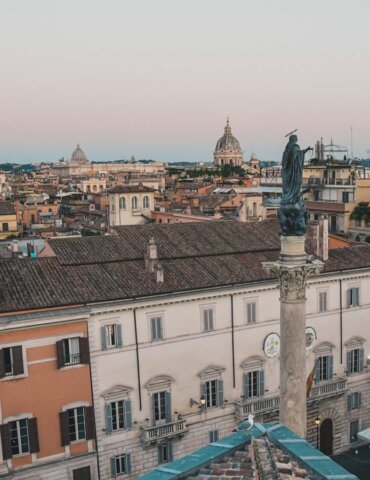
Leave a Reply Cancel reply
Your email address will not be published. Required fields are marked *
9 tips for beginners visiting Italy for the first time

Planning your first vacation to Italy ? Not only is this beautiful country one of the top culinary destinations in the world, but it's also home to some seriously iconic tourist attractions to boot. With over 55 UNESCO World Heritage sites, three active volcanoes and over 1,500 lakes, you'll never get bored. And if you are, well, there's always pizza!
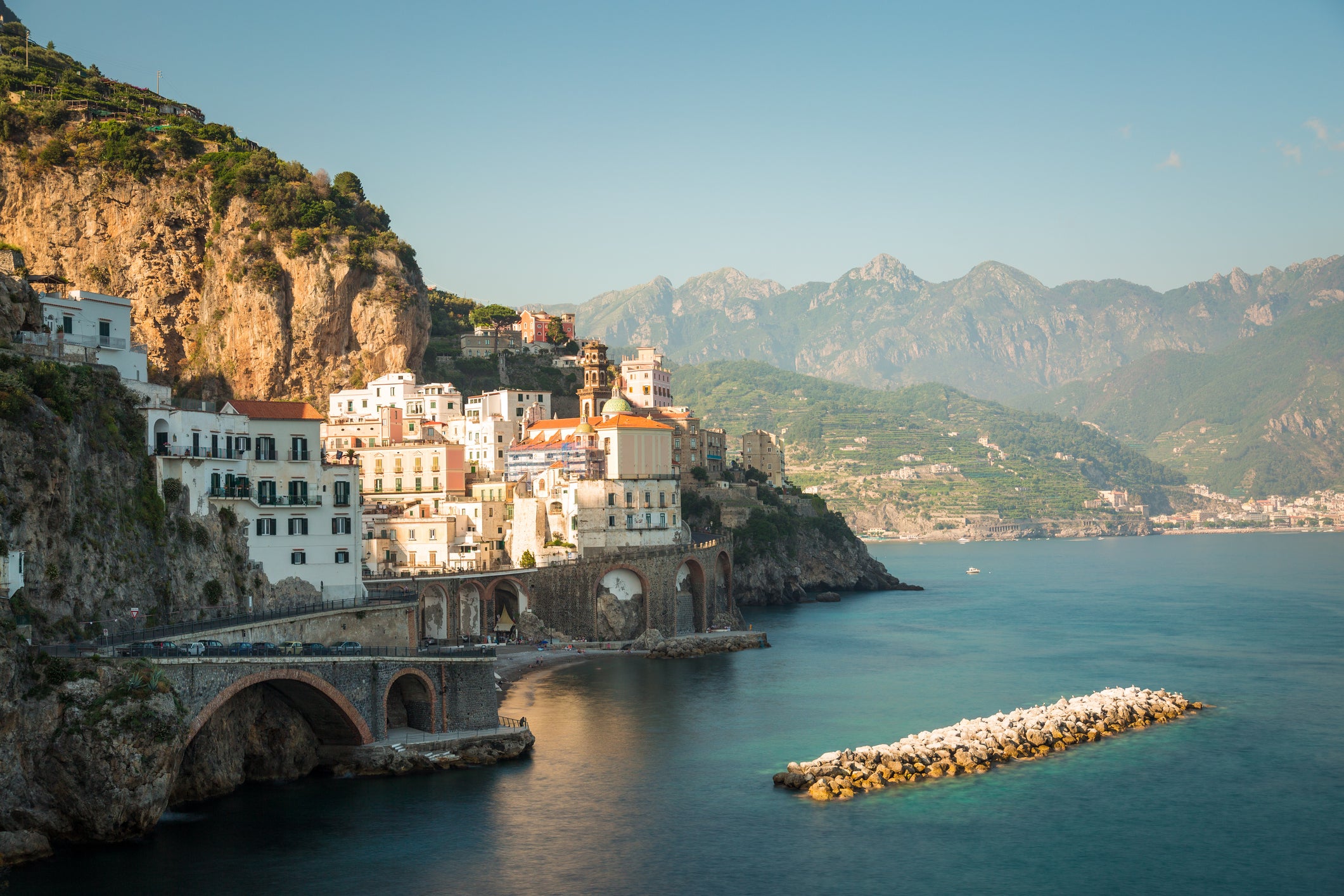
When organizing a vacation to Italy, there are a few things you should know in order to have a safe and enjoyable getaway. First-time travelers take note: these are some of the things you consider for your Italian adventure.
1. Figure out what kind of trip you want to have
Italy's got it all: 4,600 miles of coastline lined with hundreds of gorgeous beaches , numerous tourist attractions, lively cities, charming villages and sprawling vineyards. From low-cost to luxury, Italy has accommodation, restaurants and activities to fit every budget, whether it's renting a yacht off the coast of Capri, staying in an affordable hostel in Rome or enjoying a Sicilian farmhouse getaway.
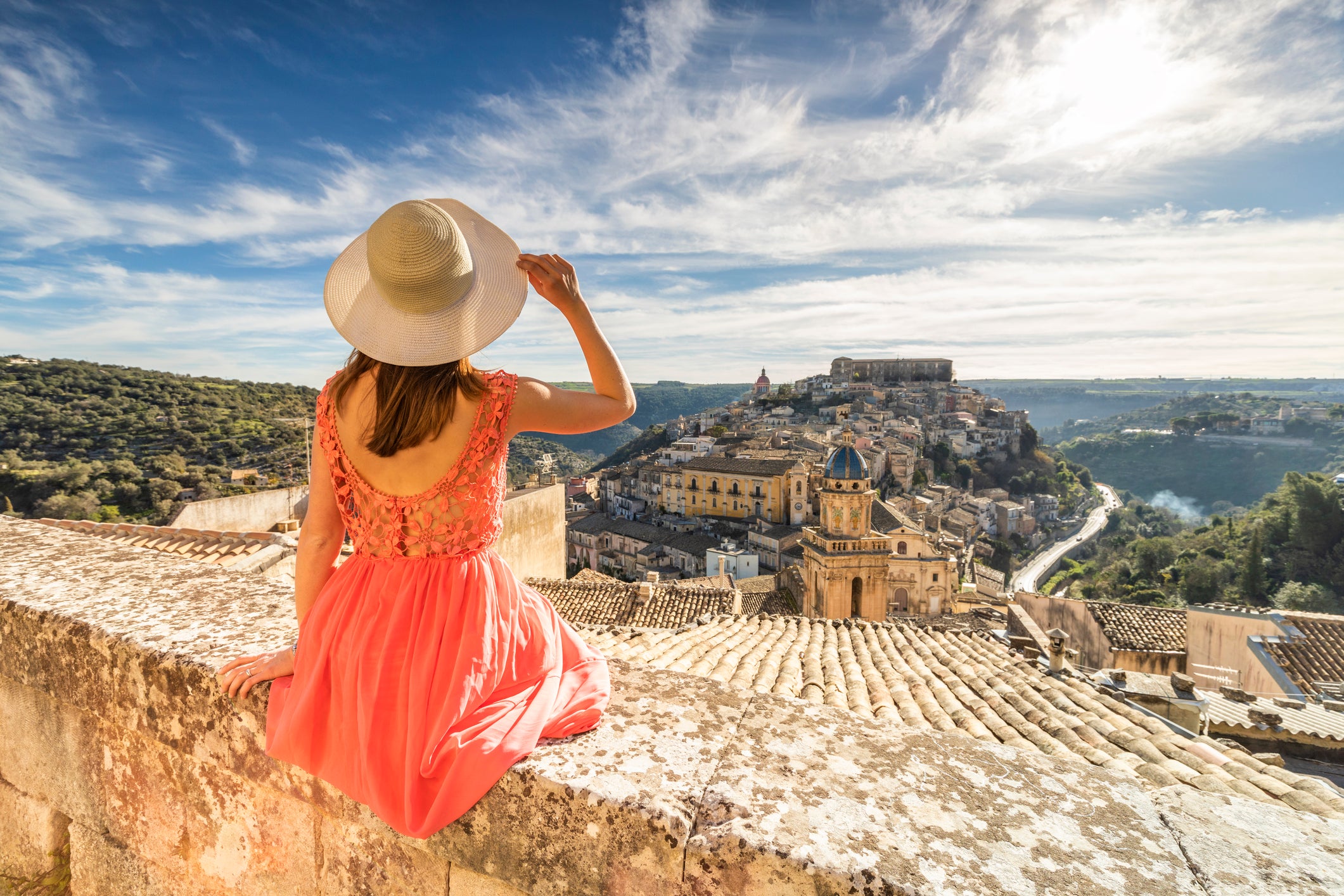
Consider your interests, as well as some of the things Italy is famous for, like gastronomy (you could build a trip around dining out or cooking classes), art (Italy has some of the top museums in the world) or exploring a wine region (drive through the hills of Prosecco or Tuscany's wine country).
Related: How to have a budget vacation in Italy
Or, think about destinations. For each week you have of vacation , you can comfortably squeeze in two destinations (maybe more if you're a very active traveler).
- If you love art and tourist attractions, consider Rome and Florence.
- If you love fashion but also want to relax, consider Milan and one of the northern lakes.
- If you want pizza, cityscape and coastal charm, consider Nap les and the Amalfi coast.
- If you want to dig into Italy's food and wine scene, consider a road trip through Tuscany or Piedmont.
- If you love skiing , consider a visit to Milan and the Italian Alps.
- If you're looking for romance, consider exploring Verona and Venice.
- If you need a beach vacation, consider exploring an island like Sardinia or Sicily.
- If you have 10 days or more and want to enjoy the most typical tourist circuit, consider a trip to the big three: Rome, Florence and Venice -- some of the country's most popular spots for visitors.
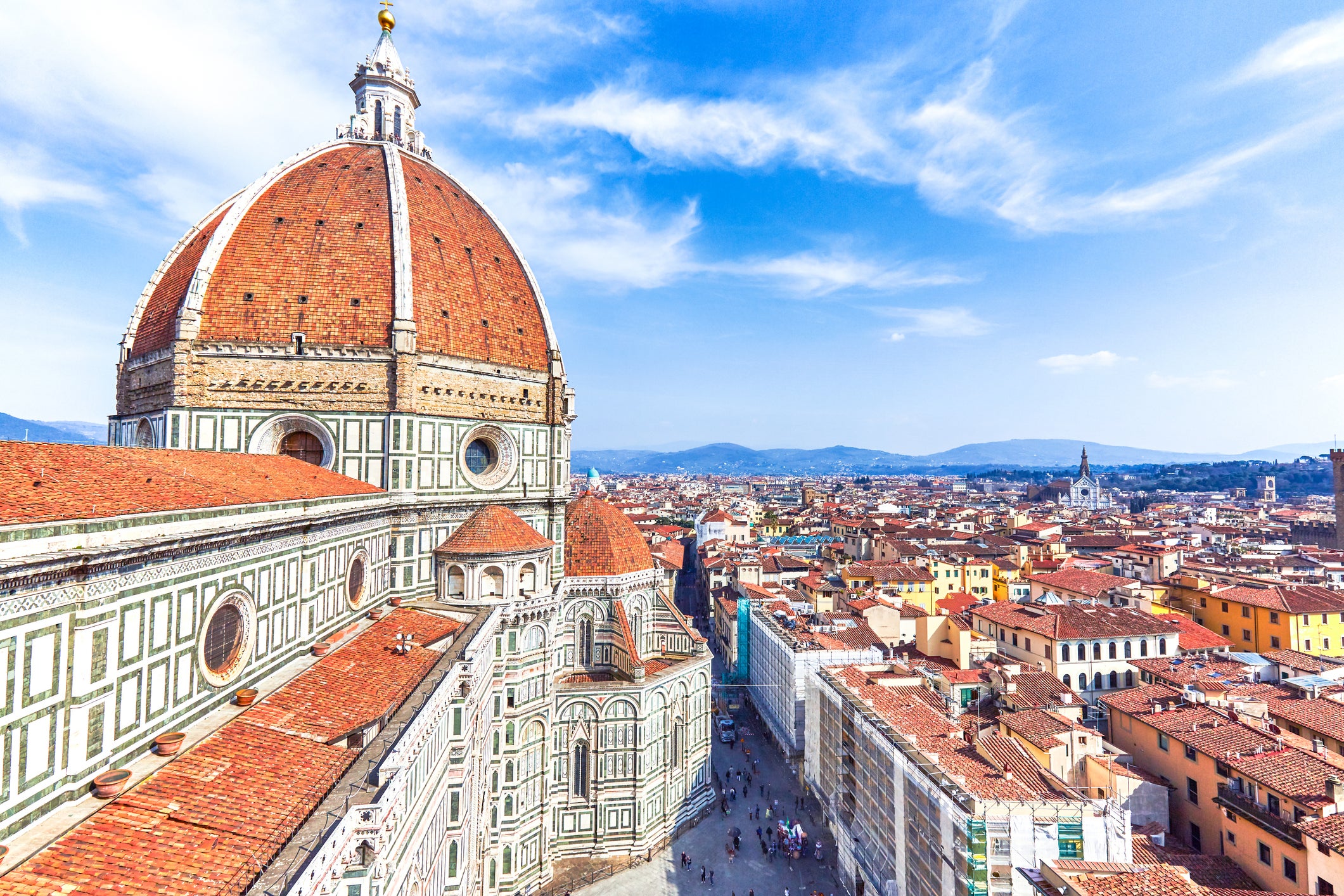
Note that while you can find various price points around the country for lodging, dining and activities, typically, costs are lower in southern Italy than in northern Italy.
Related: Northern or southern Italy: Which is right for your vacation?
2. Pick the right season
In general, Italy has wonderful weather. Many areas of the country see lots of sunshine and temperatures are mild even in winter, though summers can be steamy. Depending on what you plan to do, make sure to consider the season. Beach visits are best in the summer, though months like May and September see fewer crowds and still have great weather.
Related: These are the best times to visit Italy
Avoid larger, crowded cities like Rome in the heart of summer, unless you're prepared for extreme heat. Harvest season/autumn is the ideal time to visit the wine region, and southern Italy can be mild throughout the winter. Many deals can be found in the low season, but know that winter in the north can be cold and rainy.
If you do go to Italy between March and October, bring sunblock and a hat -- don't underestimate those Mediterranean rays.
3. Do your research when it comes to tourism
Although Covid-19 has put a dampener on tourism, during busier times, attractions like the Vatican may see up to 30,000 visitors per day. That means you may have to wait a long time in line to buy a ticket and enter. Add Rome's scorching sunshine to the mix and you may end up sunburned, exhausted from queuing all day and never get the chance to step foot in the Sistine Chapel.
If visiting big-name tourist attractions is important to you, buy tickets online. Skip-the-line tickets or guided tours may also be worth the price: evaluate your options and decide.
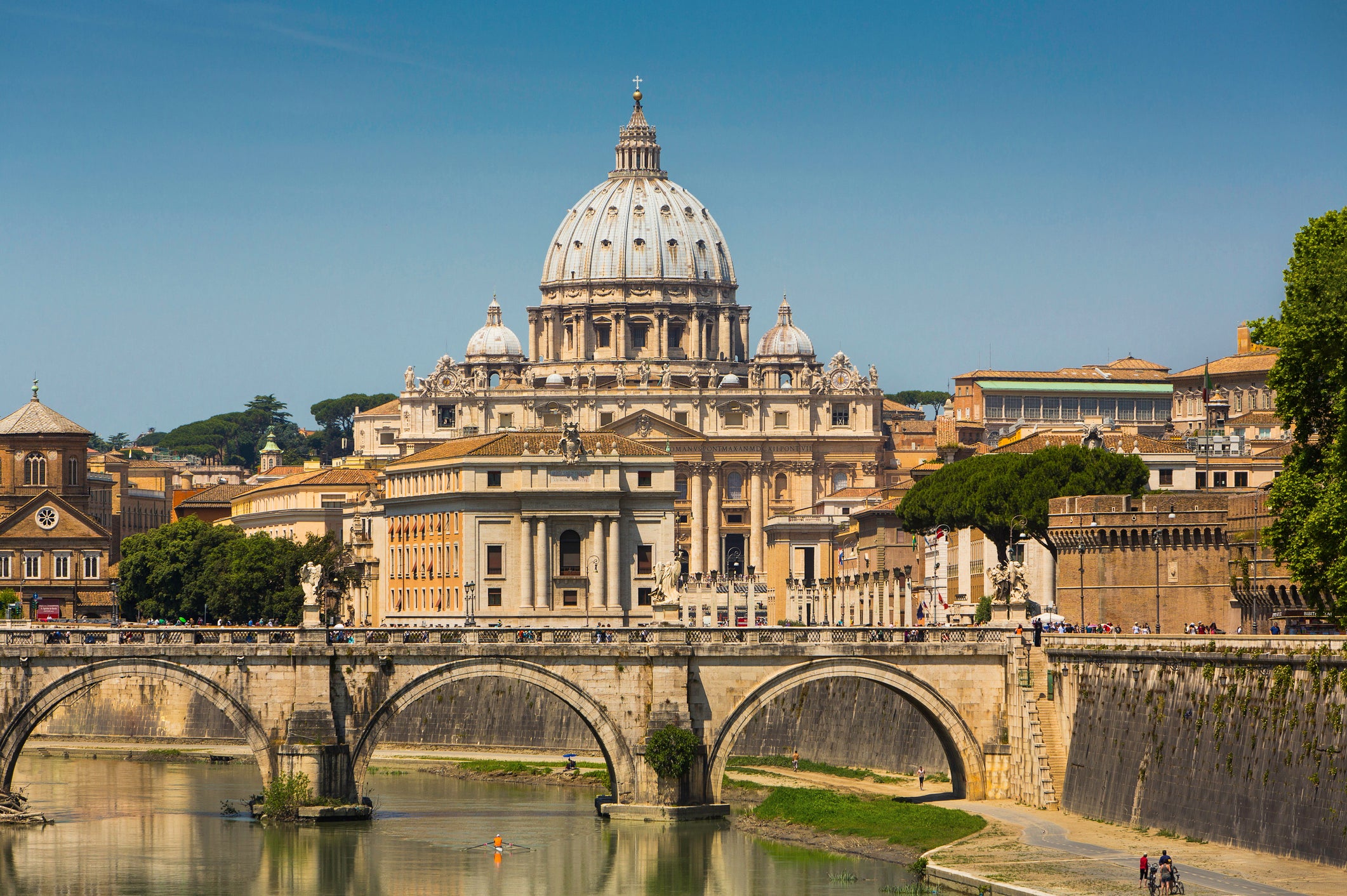
City passes are another alternative. The Milan city pass offers things like discounts on popular attractions, free Milan public transport and a free drink at a local Milanese bar. The Rome tourist card has fast-track entry benefits and free access to the Vatican and the Colosseum. Florence's city pass includes skip-the-line entry to Galleria degli Uffizi and Galleria dell'Accademia, plus tickets for the hop-on, hop-off bus tour.
So, think about what you want to do and see, do the maths and purchase ahead.
4. But don't forget about local spots too
Visiting Italy's most famous attractions should hold a firm spot on your bucket list. That being said, plan to take some time to get off the tourist track a bit. Consider exploring more local neighborhoods or visiting a small village or a less-popular spot like Lake Maggiore instead of Lake Como. Seeing all the big-name hotspots is a must, but experiencing the beauty of true Italian culture and cuisine may be even better.
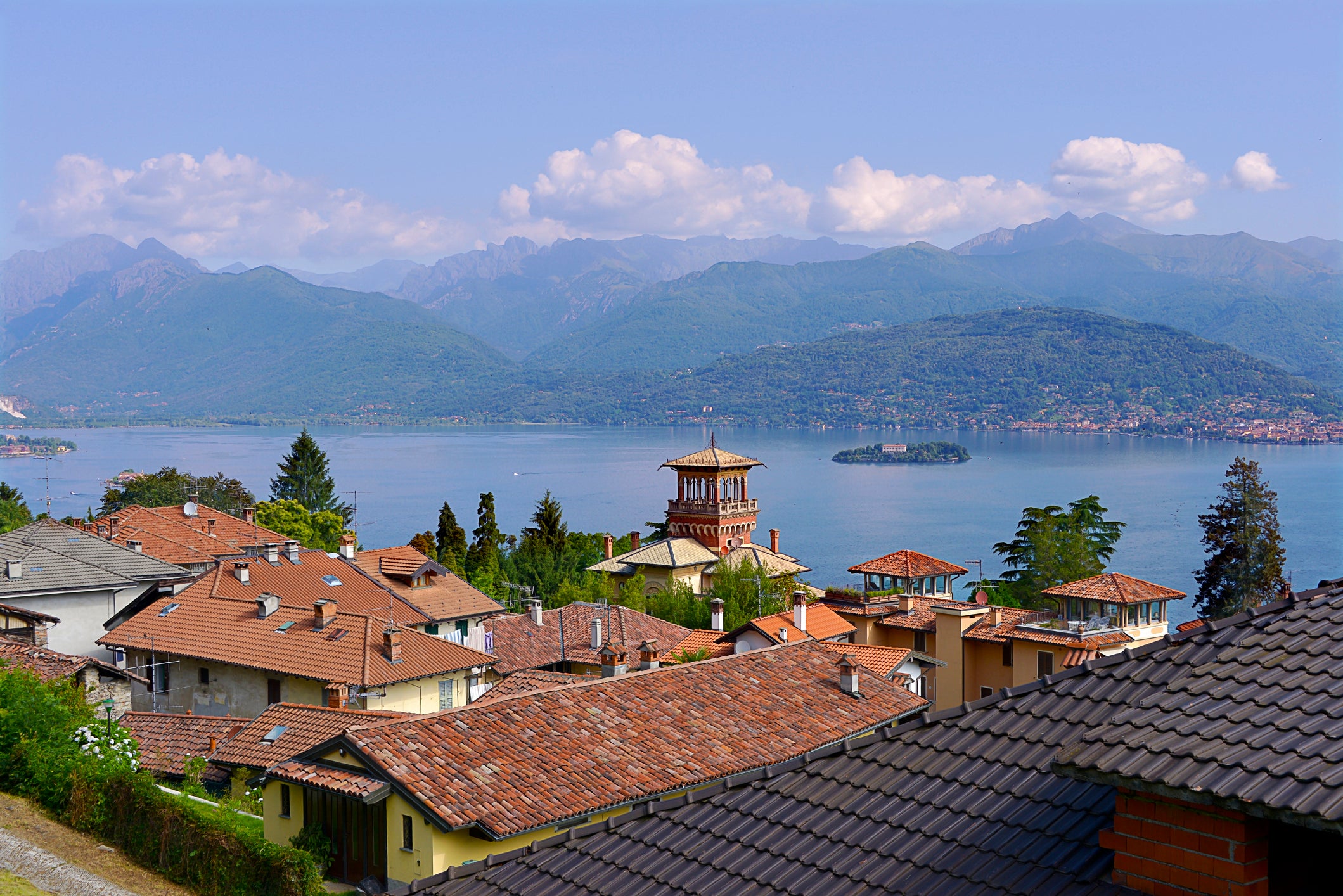
Related: 5 of Italy's best-hidden gem cities
5. Take the train
The Freeciarossa runs between some of Italy's best destinations. These high-speed trains from company Trenitalia are affordable, fast and comfortable. Traveling up to about 180 miles per hour, trains are one of the best and quickest ways to get from A to B. And, you won't have to deal with learning the Italian rules of the road or the hassle of car rental agencies. Taking the train is easy: You can purchase tickets easily online ahead of time or last minute depending on your travel style. You can visit spots like Milan, Rome , Florence, Venice, Turin and Naples on the Frecciarossa trains.
6. Don't discount the islands
Italy's island culture goes beyond just the beach. And, there are over 450 of them! Sicily has a whole sub-culture of its own, and far-flung spots like the Tremiti islands or the Aeolian islands will ensure you get sufficiently off-the-beaten-path . If it's luxury you desire, Sardinia's Costa Smeralda is a hotspot and nothing looks sexier on an Instagram feed than Capri.
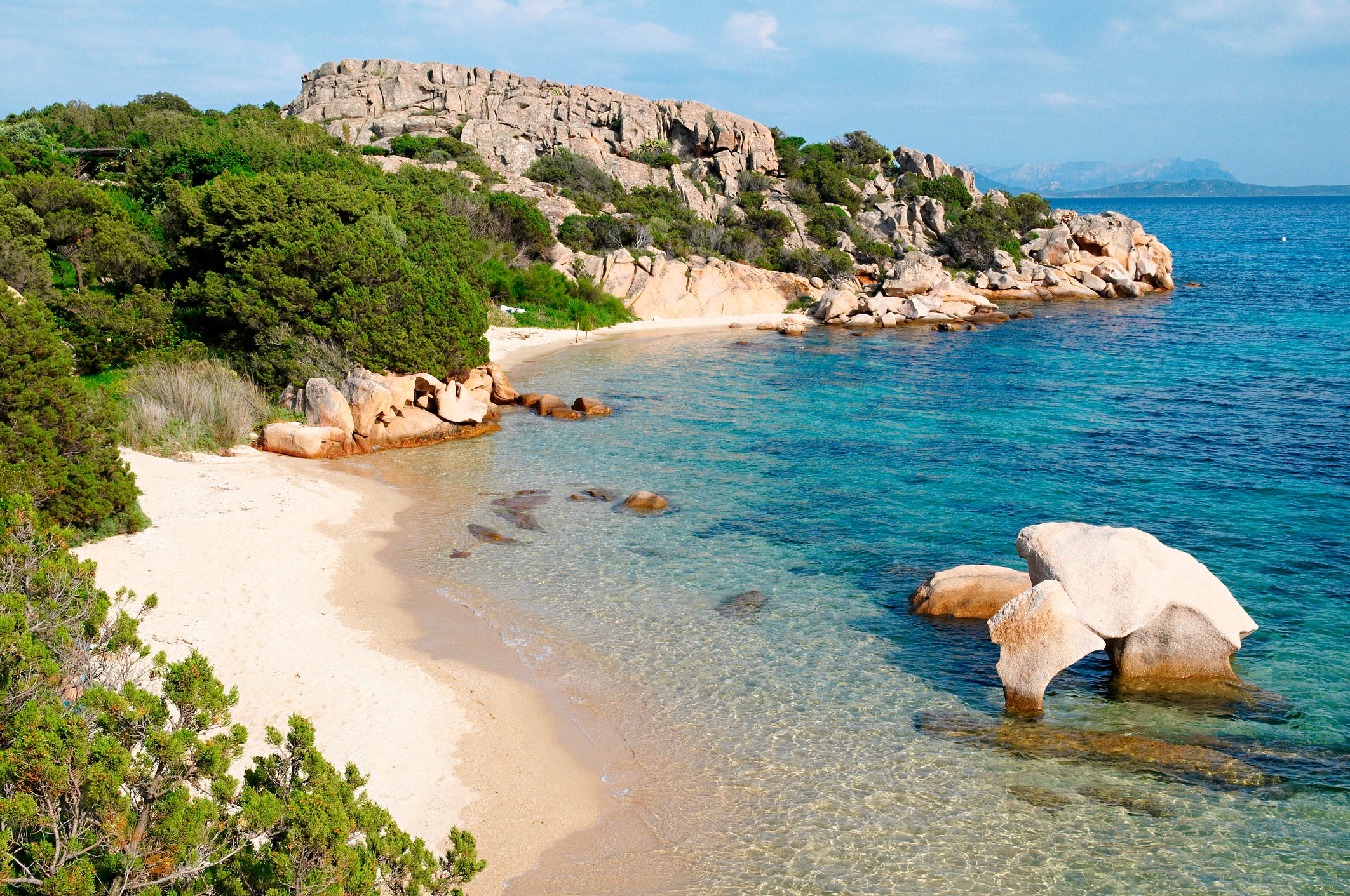
Related: Which of the Italian islands is best for your vacation ?
7. Familiarize yourself with the language and culture
You might get lucky when it comes to a larger city like Rome, where many locals speak English.
Southern Italy or smaller villages are a different story. Luckily, Italians are a friendly bunch and will do their best to communicate with you despite any language barriers. Come prepared with a few key phrases and your favorite translation app downloaded.
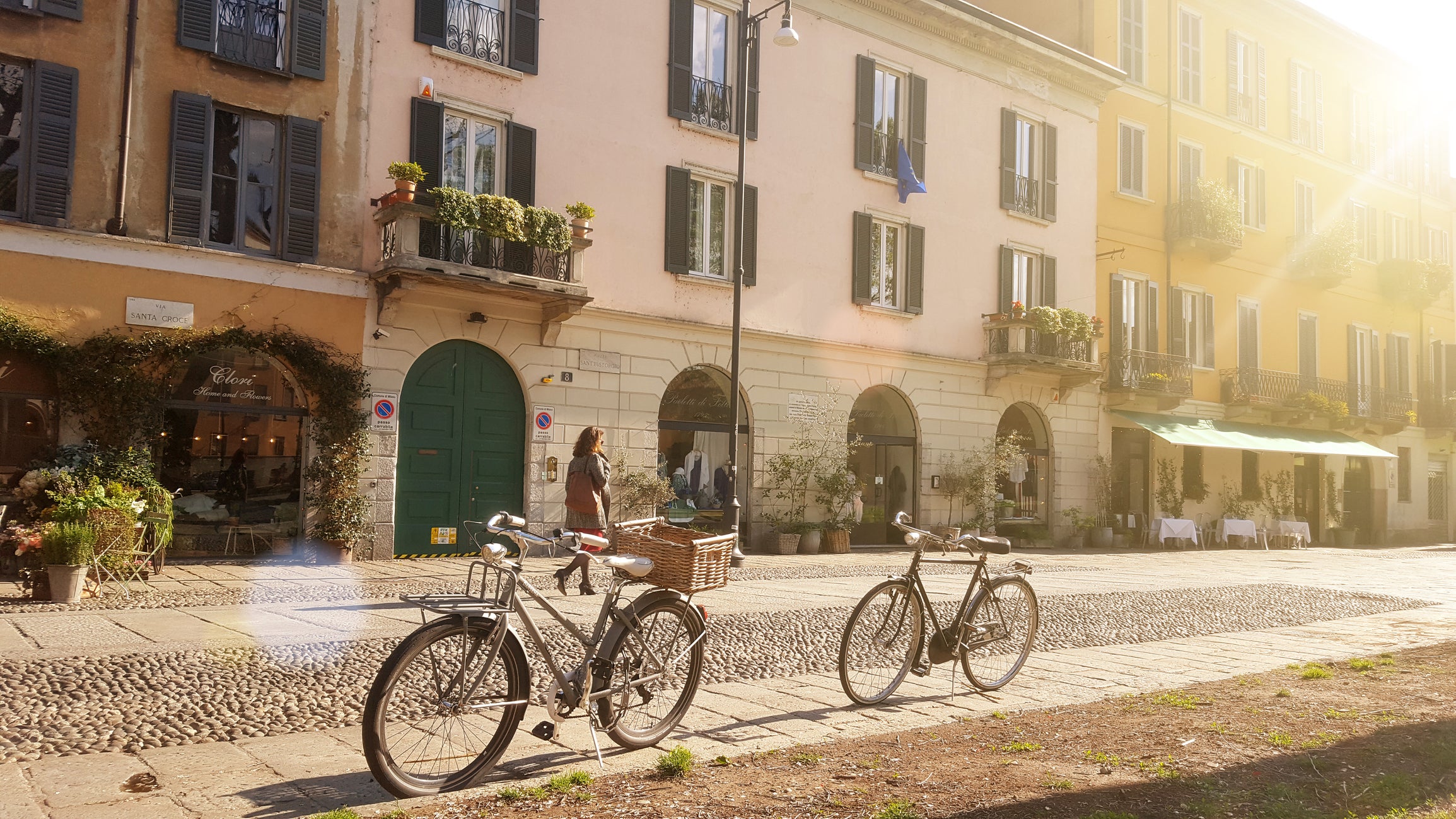
Italy is old, and so are its streets. Many are made of cobblestone. While locals (Milan, here's looking at you) may jog by in designer stilettos, you should wear comfortable footwear. Make sure to dress modesty, especially when visiting churches. You won't be allowed into spots like Vatican City if your knees and shoulders aren't covered.
While mealtimes aren't quite as late as Spain's, Italians tend to eat slightly later. Expect lunch around 1:00 p.m., and dinners around 8:30 p.m. or 9:00 p.m.
8. Money-saving tips
While it's normal to make a tourist faux pas or two (especially on your first trip), here are some things you should avoid:
- Tipping at restaurants if it's already included on your bill (many spots add in a 10% service charge).
- Heavily tipping taxi drivers (rounding up to the nearest euro is normal).
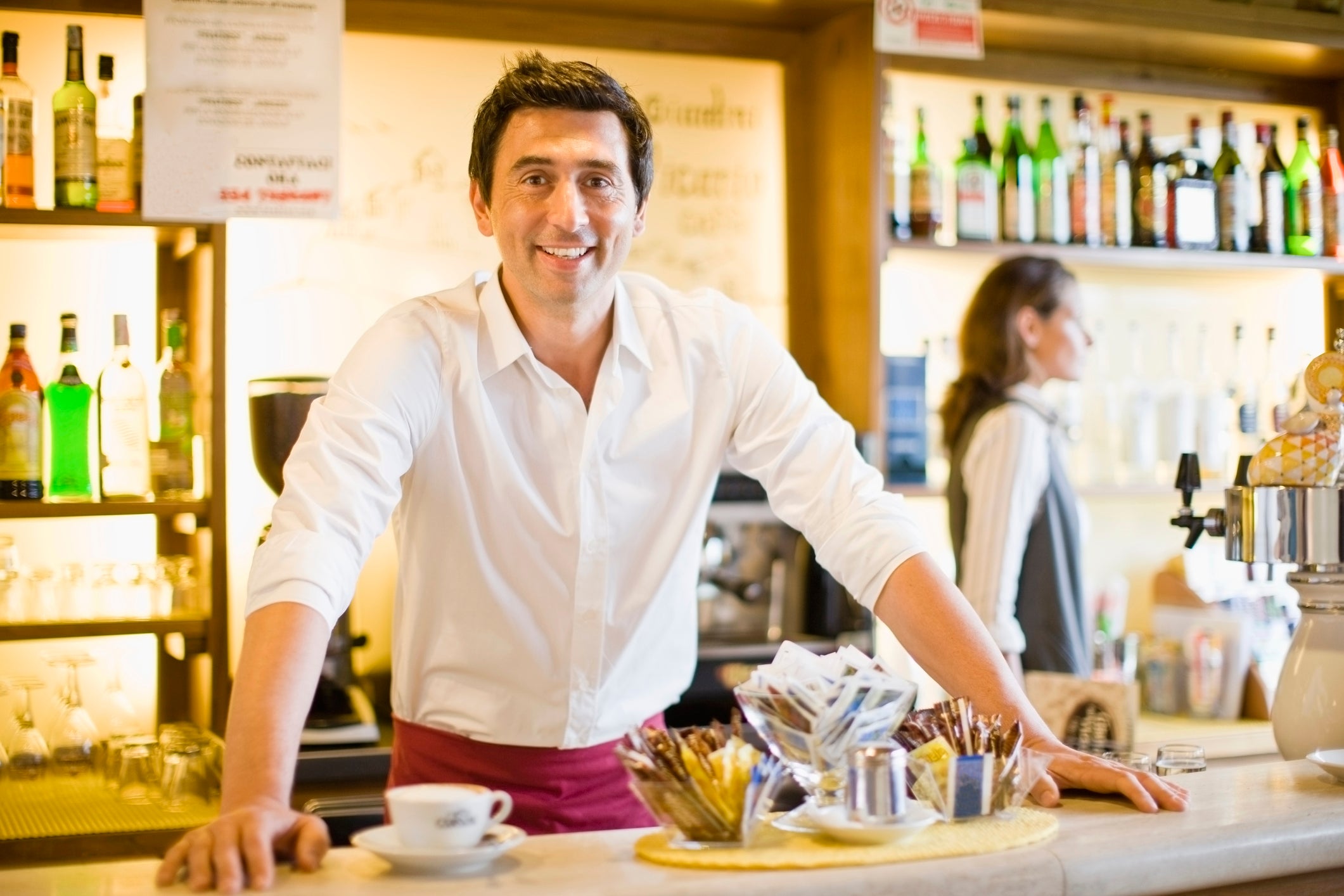
Save even more money with the following:
- Take advantage of apertivo hours in northern Italy. These are happy hours that offer free buffet food for a few hours pre-dinner time in the early evening. Order a drink or two to gain access to the snacks.
- Stand at the bar to drink your espresso. Table seating at breakfast has an additional charge, and even more if you want to eat outside.
- Beware of the "coperto." This is a service charge for simply eating at the restaurant , usually a euro or two per person.
- Don't eat or drink in the main city square. These spots are usually overpriced tourist traps.
Related: 7 underrated regions in Italy for food and wine
9. Be alert for travel scams
Watch out for those trying to take advantage of unsuspecting tourists with scams :
- Pickpockets;
- Gladiators: If you take a photo of or with them, they'll expect a tip;
- Taxi scams: Insist the meter be turned on, or make sure you're aware of any flat-rate pricing;
- Unauthorized tour guides or ticket helpers at train stations; and
- Anyone who approaches you with lavender, flowers or a pizza box. Just walk the other way.
Bottom line
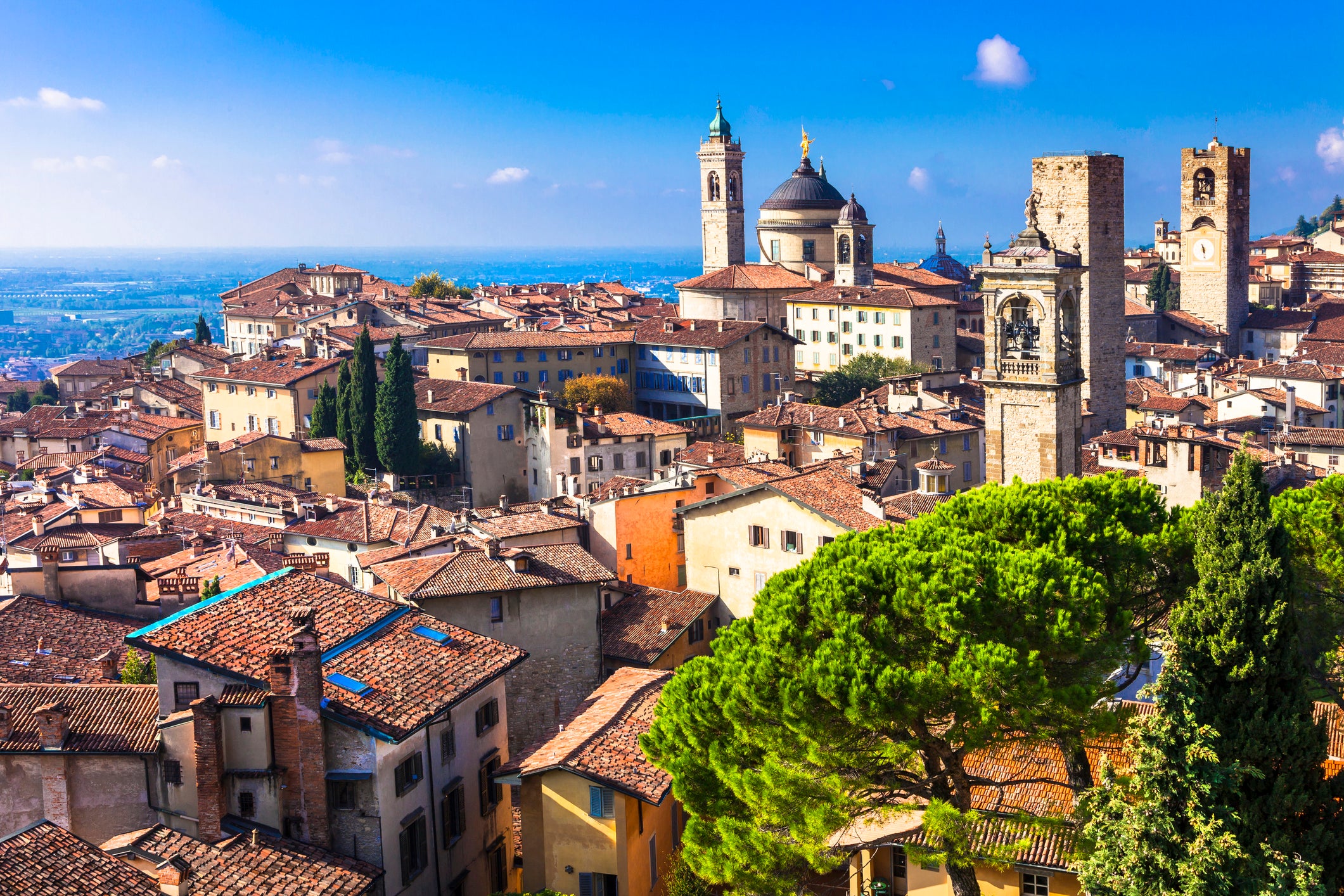
Armed with these tips and tricks, planning a trip to Italy will be easy. You can sit back, relax and enjoy all the delights Italy has to offer, knowing that you've picked the right destinations, will skip the line to see those bucket-list tourist attractions, avoid scams and save a little money on meals.

- Meet the Team
- Work With Us
- Itineraries
- Italy Travel Guide
- Hawaii Travel Guide
- Travel Tips
Planning a Trip to Italy? Here’s Your 10-day Italy Itinerary
The only thing that’s probably holding you back from traveling to Italy is the daunting task of creating your Italy itinerary. We understand. That’s why we’ve taken the work out of it for you by creating a perfect 10-day Italy itinerary that you can follow or use to plan your own trip.
You’re probably wondering all the typical travel things, like when is the best time to go to Italy , what destinations to visit while you’re there, and how to get around.
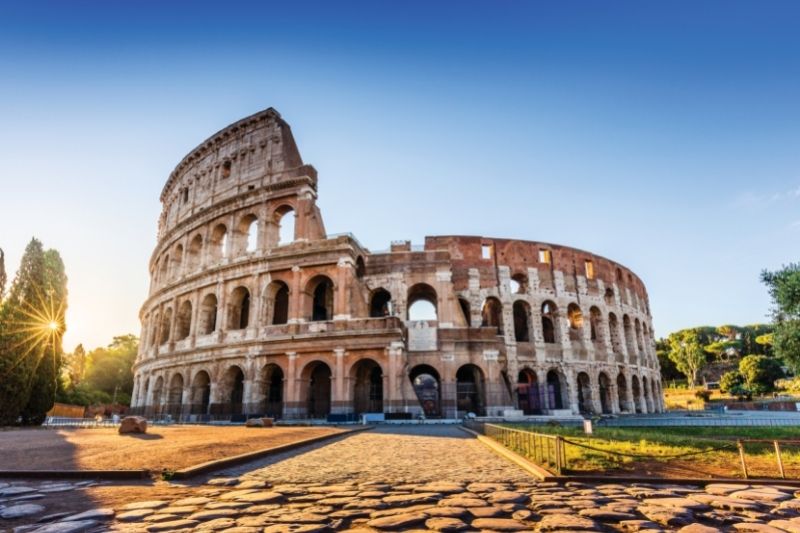
It can all be very overwhelming, but don’t worry, our Italy trip planner will clear up all those questions and help you plan the best way to see Italy in 10 days. If you have other questions about Italy, check out this guide with additional tips for traveling in Italy . Make sure to put these famous foods on your list of things you must try.
You can see a lot in just 10-14 days in Italy without being overwhelmed. It’s not a large country, but there will be a lot of travel to get from place to place. It’s a good thing Italy has a wonderful train system!
If your trip takes you all over Europe, not just to Italy, check out our 2 week itinerary for Europe , which can easily be expanded to one month or more.
Table of Contents
Getting Around in Italy
The best way to get around on your Italy itinerary is to rent a car and drive . I always book through DiscoverCars.com for the best deals. It’s not too difficult driving around in Italy, but you should be prepared for a few things:
- You need an International Driver’s License, which is just a translation of your U.S. or other country license. You can get this at the AAA office, or online.
- Most cars in Italy are manual (stick-shift). You can rent automatics, but there aren’t a lot of them so you have to book in advance.
- The roads are sometimes very narrow and not paved. It’s best to rent a very small car that can easily manuever the roads and parking spots.
Here's more to help you plan
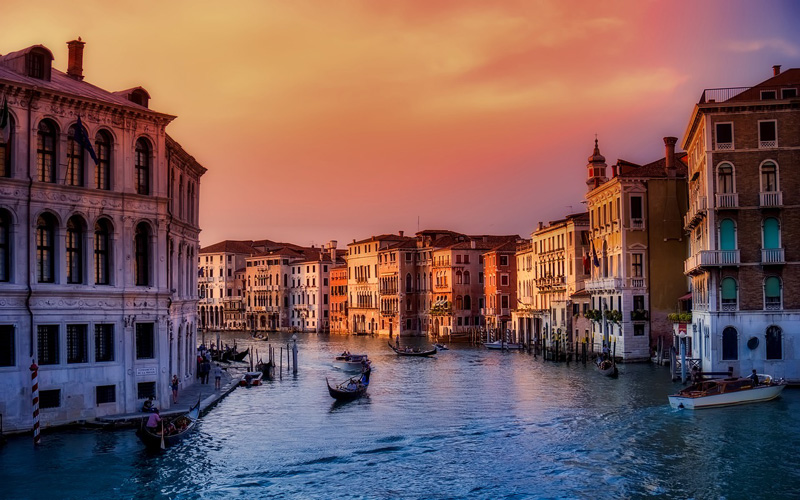
12 Best Cities in Italy: Popular Attractions and Must-See Sights

9 Things to Know When Traveling to Italy

Guide to the Best Wine Regions in Italy
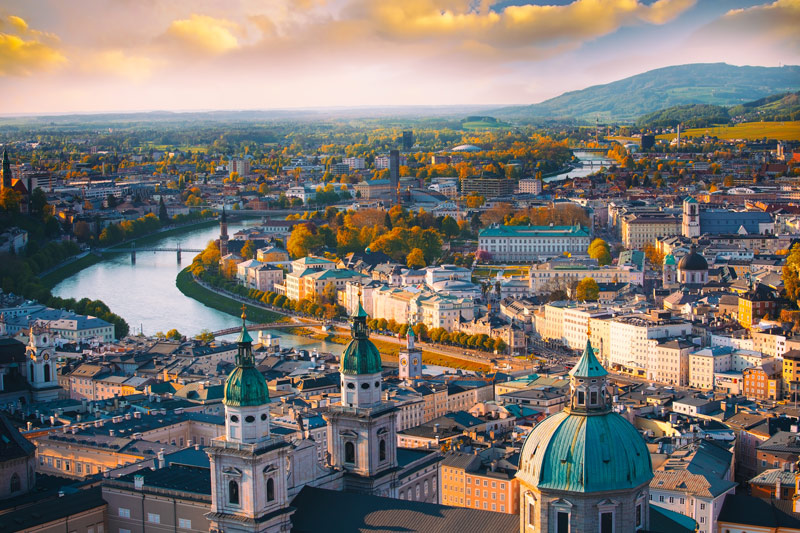
21 of the Best Cities to Visit in Europe
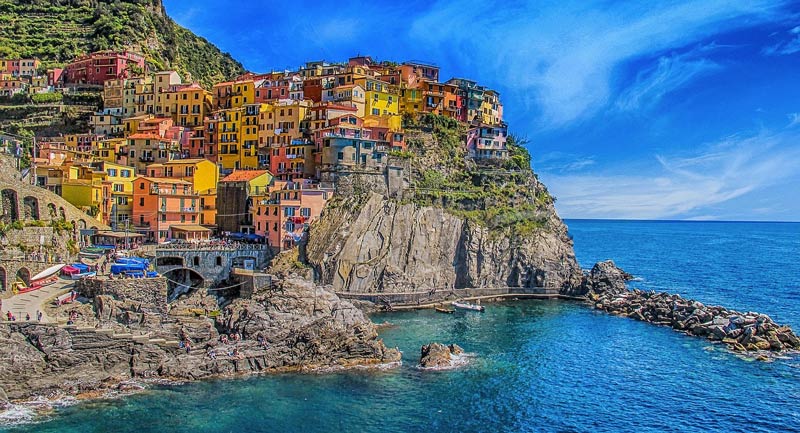
How to Plan a Vacation in Italy
Best time to go to italy.
The first step in planning an Italy vacation is deciding when to go. As with most places, there is a “best” time to go to Italy, but that doesn’t mean you can’t go whenever the mood strikes you.
It really is a year-round travel destination. We’ve been there in all 4 seasons and always have a great time.
If I had to pick one perfect time to go to Italy, it would be late autumn (end of September to November), because it is the height of grape and olive harvest season in Italy, and there’s nothing better than seeing the rolling hillsides covered in ripe bunches of grapes, and the olive trees laden with green fruits.
- Spring (March to May) is a great time to visit, as the temperatures are lower and so is the tourist traffic, which leads to lower prices and shorter lines to get in to popular attractions. May is the rainiest month in Italy, but it’s not enough to ruin your trip.
- In autumn (late September – November), the leaves are changing color and the resulting scenery is nothing short of amazing, plus the harvest is on!
- Summer in Italy gets very hot and humid. It’s also a very busy high season, so you’ll constantly be fighting crowds and you’ll pay more for accommodations. Try to avoid traveling in July and August. Even June can be extremely hot – 100+ degrees F.
- In winter, December to February, there are definitely less tourists, but the weather isn’t prime for that dream Italian vacation.
Getting to Italy
Many top airlines fly to Italy. However, it’s not so easy to find direct flights from the U.S. to Italian cities. The easiest cities to fly into from international destinations are Rome, Bologna, and Milan.
If you don’t mind making a stopover in Frankfurt or Amsterdam, you can fly to just about anywhere you want within Italy. If you want to try to add a free stopover flight on your way to Italy, try it using Skyscanner .
Something to consider, which will help maximize your time in the country, is to fly into one city and out of another, such as flying into Rome and out of Milan. Doing this will save time and money.

Best Places to Visit in Italy
First-time visitors would do best to hit up the most popular sights that are easy to get to via train or a quick domestic flight. Then once you’ve explored the top destinations, you can dig deeper into the more off-the-beaten path locations.
A road trip can be a very rewarding way to see a lot of the country. Here is a list of places to visit in Italy that you should definitely include in any 10-day Italy itinerary.
If you’re not keen to travel on your own, there are many tour agencies that provide tours to these cities. However, it is very easy to travel around Italy via train, so organizing your own trip is recommended.
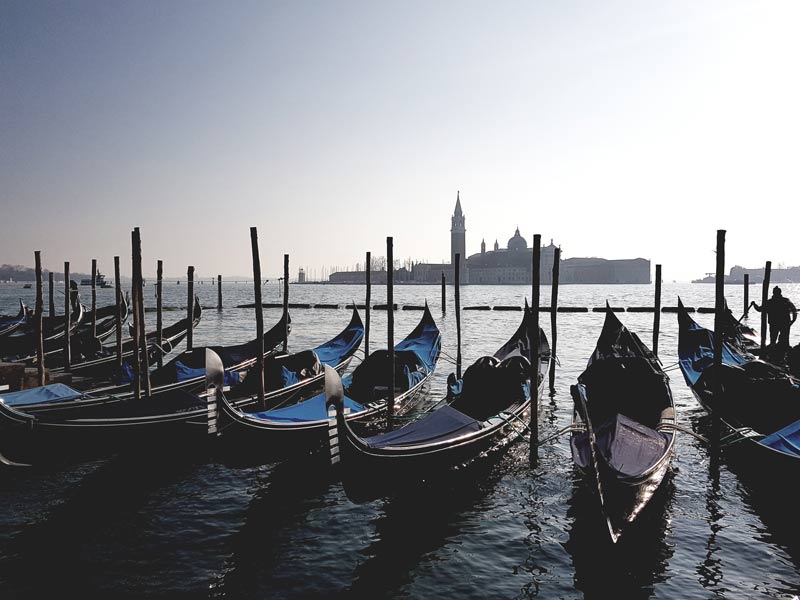
How to Spend 10 Days in Italy
If you’re a frequent traveler, you’ll have no problem planning your own Italy travel itinerary and getting around on your own. There is a small language barrier to deal with in some places, but it’s nothing a savvy traveler can’t handle.
In most large cities, the majority of people you will come in contact with will speak English. Now for your 10-day trip to Italy, which includes Rome, Tuscany, Florence, Bologna, and Venice.
Note: Your tour starts on the day after you arrive, unless you fly in quite early, otherwise you won’t have enough time to see everything in Rome. You need 2 full days to do it.
Day 1-2: Rome

Visiting Rome is like stepping back in time. With so many amazing attractions to see throughout the city, it’s easy to see everything without much fuss. With a good map and a little energy, you can easily walk the entire old city of Rome and see all of the iconic landmarks listed below.
- The Roman Forum: Check out the ruins of the Arch of Titus, the Temple of Vesta and other ruins of a powerful, historical time gone by.
- The Colosseum: You can pay for a guided tour, or just walk around yourself, especially if you’ve done some research ahead of time or have a book along with you.
- Trevi Fountain: This is an absolutely must see, tucked away in a small piazza and crowded with people vying for a chance at a good photo. If you toss a coin into the fountain over your left shoulder using your right hand, you’ll come back to Rome someday.
- The Spanish Steps: Located at the Piazza di Spagna, this steep set of steps climbs up to the Trinita dei Monti church at the top and is surrounded by upscale shopping, tourists lounging on the steps and a wonderful Italian vibe.
- Plaza Navona: You must stop here for photos and for an overpriced drink at one of the cafes, for some of the best people watching in the world.
- The Vatican Museums: If you’re an art and/or architecture lover, you can’t miss a journey through the ancient Roman sculptures and paintings at the Vatican. You’ll see the Gallery of the Maps, Raphael’s Rooms, the stunning Creation of Adam by Michelangelo in the Sistine Chapel , plus St. Peter’s Basilica (if you have time).
Tours & Tickets
You will need tickets for a few of the things on the list. In Rome, I never recommend just walking up to the attraction without tickets, because you could stand in line for hours.
Plan ahead and purchase tickets before you go. The most important ones to secure tickets for are the Colosseum and the Sistine Chapel .
You can book tickets directly through the attraction’s website, or you can use the links below to book our recommended tours through Viator :
- Skip the Line: Ancient Rome and Colosseum Half-Day Walking Tour – Skip the entrance line to the Colosseum and see the first and second levels with a guide (plus ability to add the underground tour), plus tour of the Roman Forum, the House of the Vestal Virgins and a walk along Via Sacre.
- Faster Than Skip-the-Line: Vatican, Sistine Chapel and St. Peter’s Basilica Tour – “Skip the line” with this tour means using a special entrance to bypass even the fast-track line.
- Rome Food Tour – One of my favorite things about Rome is the food culture. Discover all the great food on a guided food tour. You can read about the tour we took here .
What to Eat in Rome

Rome has many food specialties, some that differ from other areas of Italy. If you want to get a real immersion in Rome, you must try these specialties:
- Cacio e Pepe – Cacio e Pepe is a very simple pasta dish that literally means “cheese and pepper”. The pasta noodles are covered in Grana Padano or Parmesan cheese, butter, and ground black pepper.
- Carbonara – Carbonara is made with egg, hard cheese, guanciale, and black pepper.
- Bucatini all’amatriciana – All’amatriciana is a pasta sauce with black pepper, red pepper, guanciale, Pecorino cheese, and tomato.
- Suppli – A fried ball of rice with a filling of tomato sauce and melted mozzarella. You can find really delicious variations at Supplizio.
- Gelato – You will find a gelato stand on nearly every block. Look for ones that aren’t puffed up into a large dome.
- Pizza al Taglio – This pizza is baked in large rectangular pies and cut into squares. You can find it at street food stalls or quick stop shops all over Rome.
Where to Stay in Rome
The best location in Rome depends on what you want to accomplish during your stay, but it’s always best to be centrally located so you can walk to all of the main attractions.
I really like the area around the Spanish Steps. It’s easy to find in case you forget your map or lose your bearings. Two great choices in the affordable luxury range are The Inn at the Spanish Steps (with a gorgeous roof-top pool) and Il Palazzetto .
We also really enjoyed staying at Nerva Boutique Hotel in the popular Rione i Monti area.
- Il Plazzetto ⇒ Read reviews on Trip Advisor | Book a stay
- The Inn at the Spanish Steps ⇒ Read reviews on Trip Advisor | Book a stay
- Nerva Boutique Hotel ⇒ Read reviews on Trip Advisor | Book a stay
- Airbnb: Lovely and cosy apartment at Pantheon Square | Book a stay
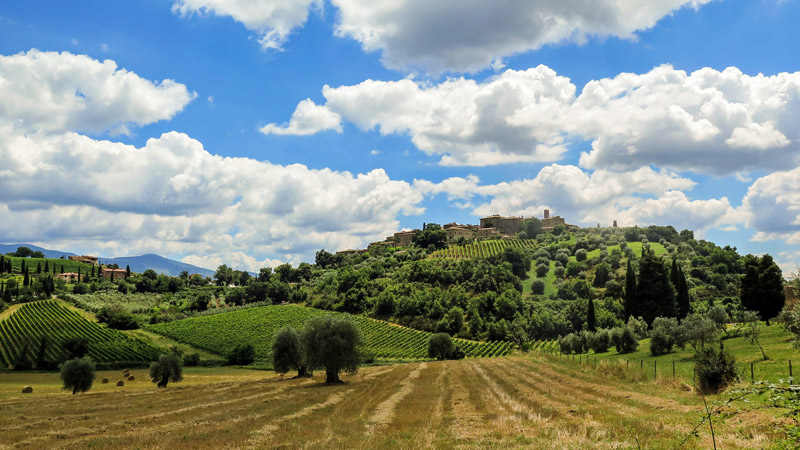
Transfer from Rome to Siena.
The best way to get from Rome to Siena is either to drive or take the train. It’s a 3-hour journey, no matter how you go. If you have a car, you’ll be able to get around within the region easier, but it’s not absolutely necessary to have a car, if you’re planning to go on pre-arranged day trips.
There isn’t a direct train, but you just make one short change in Chiusi and head to Siena, the most well-connected city in the center of Tuscany.
From here you can get to surrounding towns, like Montepulciano and Greve in Chianti, so it’s the perfect base for tourists, no matter what you want to see.
There are tons of restaurants, cafes, hotels, and wineries right inside Siena to explore, if you don’t want to venture far.
What to See in Siena
- Piazza del Campo – Huge and gorgeous medieval square
- Duomo di Siena – Romanesque-Gothic Cathedral
- Pubblico Palace & Mangia Tower – Gothic-style town hall building and tower
- Fonte Gaia – Lovely historic fountain
If you want to taste some wine in Tuscany, it’s best to get outside of Siena and visit the wineries and vineyards. If you have a car, we recommend checking out our list of the top wineries to visit in Tuscany .
If you’d rather stay within Siena, you can visit one of the enotecas in Siena, like Enoteca Emporio Mediterraneo or Vineria Tirabusciò Siena .
We also highly recommend doing a Tuscany cooking class in Siena.
You don’t need tickets to see any of the things listed above, but if you want to get outside Siena and explore Tuscany without a car, you’ll need to book some tours.
Below are some of the tours we recommend:
- Small-Group Brunello di Montalcino Wine-Tasting Trip from Siena – visit 3 wineries, plus lunch at a family-run winery.
- Hot Air Balloon Flight Over Tuscany from Siena – This 1-hour hot air balloon flight from Siena takes you above Tuscany to get a breathtaking view of the low-rolling hills, some clad in grape vines, others crowned by a rustic ancient villa.
- San Gimignano, Chianti and Montepulciano Tour – Visit San Gimignano, Monteriggioni, and Montalcino on a day trip from Siena, and discover medieval architecture, wine, and stunning views of Tuscany.
What to Eat in Tuscany
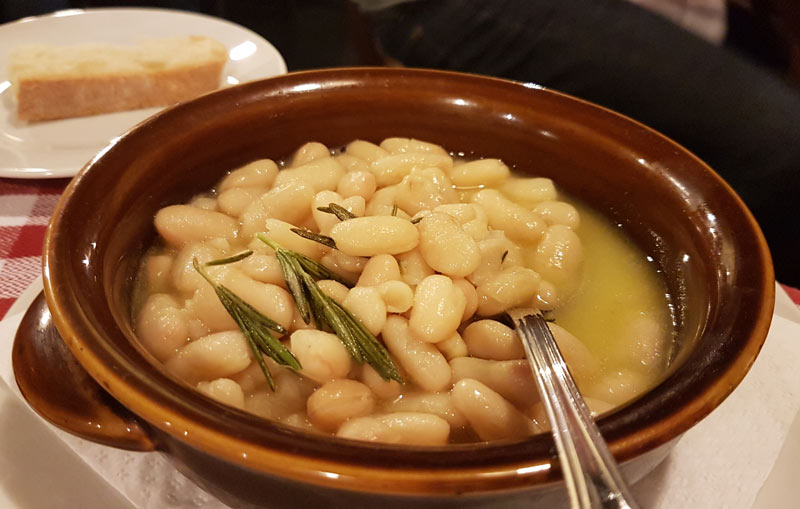
Food and wine are synonymous with Tuscany. You can’t have one with out the other. There are many fantastic dishes, both pasta and not, that you must try.
Many of these you’ll find on almost every traditional menu in Tuscany.
- Ribollita – a vegetable and bread soup
- Fagioli con salsiccia – Baked Cannallini beans with sausage
- Tagliatelle al tartufo – a wide pasta covered in a truffle sauce. Truffles are abundant in Tuscany!
- Tagliatelle al Ragu di Cinghale – Tagliatelle with wild boar ragu
- Pici – a pasta made from flour and water rather than flour and eggs
- Pecorino – Sheep’s milk cheese from Pienza
Where to Stay in Siena
You won’t find any of the top chain hotels in Siena. The accommodations here are rustic Italian charm. You can expect either a very ornate building, or very minimalist decor.
There are two options – stay inside Siena in a hotel or apartment, or stay just on the outskirts of Siena in a farmhouse stay. If you have a car, I encourage staying outside the city center.
Grand Hotel Continental Siena – a Sienese palace steeped in history. The Grand Hotel Continental is part of Starhotels Collezione, Starhotels exceptional luxury hotel group and is the old town’s only 5* hotel and has a privileged position near Siena’s most important attractions. | Trip Advisor reviews | Book here
Aia Mattonata Relais – Located in a restored, historic farmhouse outside Siena, overlooking the countryside and the city, and provided with a salted-water, panoramic swimming pool. | Trip Advisor reviews | Book here
Airbnb: Appartamento Palazzo Casini Piccolomini | Take a look
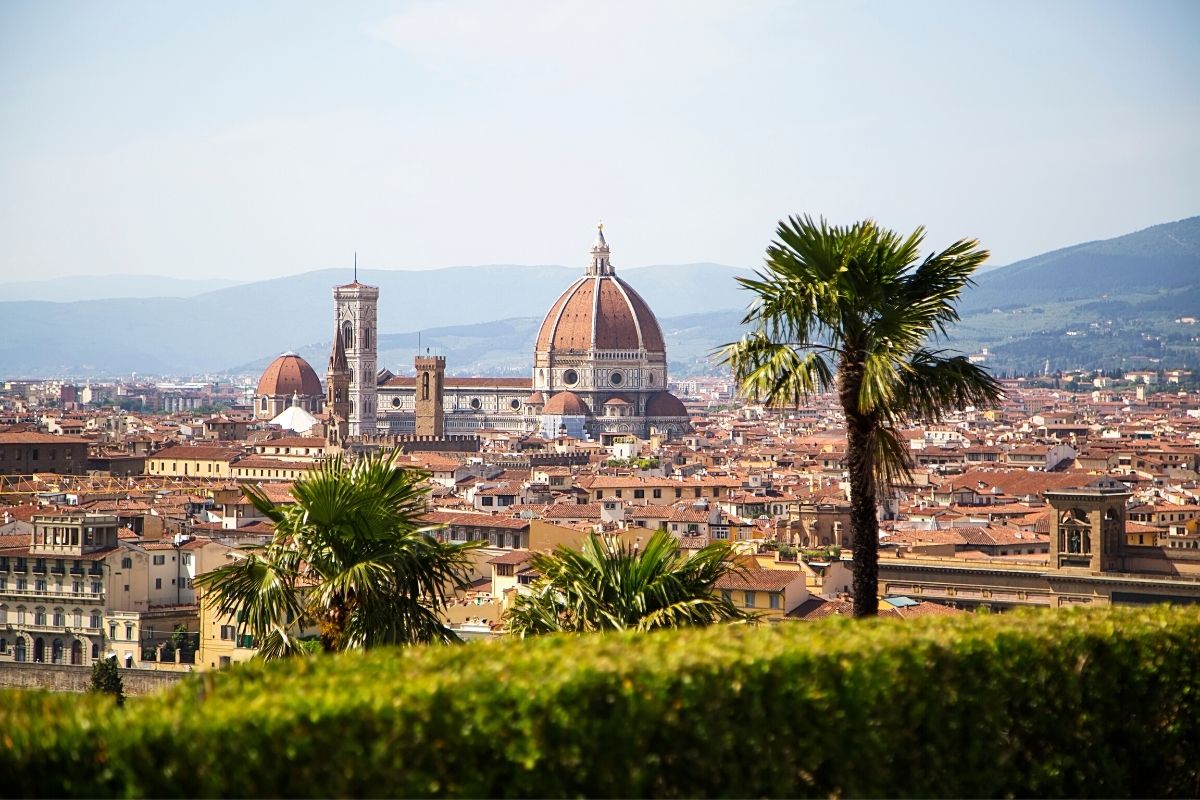
Transfer to Florence: If you have a car, the drive will be about 1 hour 15 minutes.
You can take the 131R train from Siena to Florence in the same amount of time. One of the most beautiful cities in Italy, Florence is known for its art.
The architecturally rich buildings of Florence house some of the world’s most treasured art. So if you’re a museum lover or art history buff, you’ll want to consider how many days to spend in Florence to cover all the top sights .
While 2-3 days is enough for most visitors, to get to all the museums and day trips, you’ll need 5-7.
Spend your time in Florence visiting the sights and museums below. They can be done in this order to make for the most efficient walking route.
- Duomo Santa Maria del Fiore – This vast cathedral towers over the city with its Renaissance dome and Gothic architecture. Entrance is free (tickets needed for the dome).
- Uffizi Gallery – This gallery contains some of the world’s best Renaissance paintings & masterpieces, by the likes of Michelangelo and Leonardo da Vinci.
- Accademia Gallery – This gallery houses some of the most important works of the Renaissance, including works by Leonardo da Vinci, Giotto, Botticelli and Michelangelo’s David statue. Make sure you secure tickets in advance as this is one of the most popular museums in the world.
- Mercato Centrale – This food market is packed with great eating and drinking options. You can peruse the fresh foods and vegetables on the lower floor, then head upstairs to the food court to pick what you want to eat. This is a great place to have lunch.
- Basilica of Santa Croce – A very pretty church, also the final resting place of Michelangelo and Galileo. The memorial to the 19 th century playwright Giovanni Battista Niccolini inside the church is rumored to be the inspiration for the Statue of Liberty. Tickets are 8 Euros and can be purchased here .
- Ponte Vecchio and Palazzo Vecchio – The first is a bridge, the second is the town hall, which is just around the corner from the bridge in Piazza della Signoria. The Piazza is a great place to hang out for a while, because there are sculpture and statues all around, like an open-air art gallery.
You only need to purchase tickets in advance for the Duomo, the Uffizi Gallery, and Accademia Gallery. These are where the long lines are in Florence.
You can book tickets directly through the attraction’s website, or you can use the links below to book our recommended tours through Viator , which are more expensive because they also include a guided tour:
- Best of Florence Walking Tour with Skip-the-Line at Michelangelo’s ‘David’
- Tickets for Uffizi Gallery: Guided Tour + Skip The Line
- The Duomo Complex and Its Hidden Terraces
What to Eat in Florence
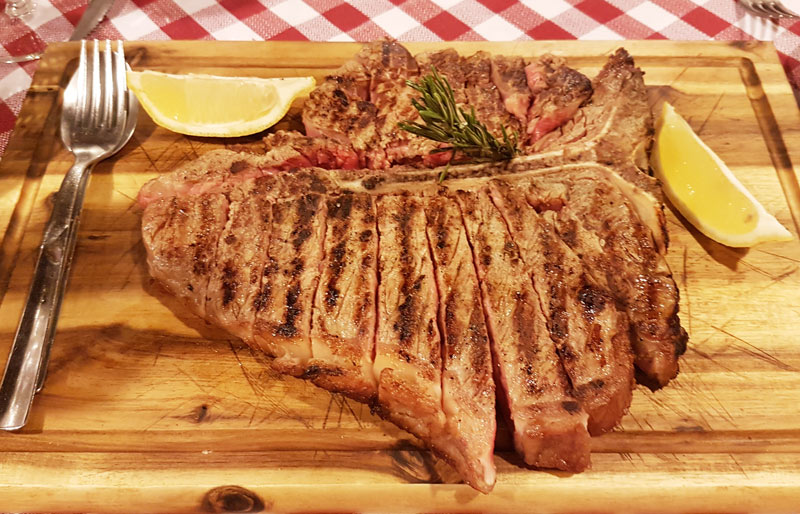
One of the most iconic meals you can have in Florence is a Florentine steak, but there are so many other specialties from this area that you should also be on the lookout for.
- Bistecca Fiorentina – a huge T-bone steak that comes from the local Chianina cattle
- Affettati Misti – A very traditional starter in Florence, this is a plate of cold cuts like lardo, finocchiona, sbriciolona, and prosciutto crudo.
- Appa al pomodoro – a tomato that is thickened with bread and made with tomatoes, olive oil, garlic, and basil.
- Penne strascicate – A Bolognese-type sauce made with vegetables, tomatoes, red wine, and olive oil.
- Ravioli gnudi – Gnocchi made with spinach, ricotta, eggs and parmesan.
Where to Stay in Florence
There is no shortage of amazing, luxury hotels in Florence. You could easily spend half your budget on a couple of nights here.
Firenze Number Nine Hotel and Spa is a smaller boutique hotel in a fantastic location, as is the modern and unique Hotel Garibaldi Blu (where we stayed last time we were there).
If you want to splurge, stay at the Grand Hotel Minerva – perfect location and it has a gorgeous rooftop pool.
- Firenze Number Nine ⇒ Read reviews on Trip Advisor | Book a stay
- Hotel Garibaldi Blu ⇒ Read reviews on Trip Advisor | Book a stay
- Grand Hotel Minerva ⇒ Read reviews on Trip Advisor | Book a stay
- Airbnb: Casina BP – historical centre | Take a look
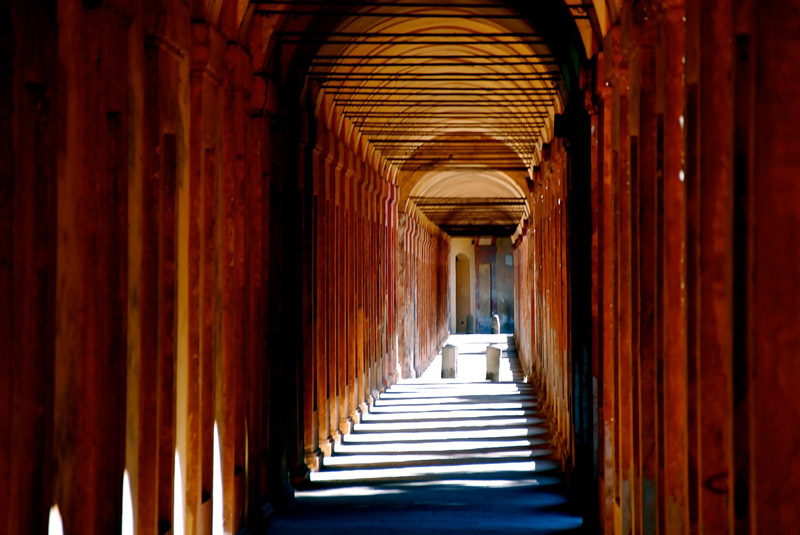
Transfer to Bologna. If you’re driving, it’s about an hour and a half drive to Bologna on the A1. The route has tolls. If you’re taking the train, it’s a quick 35-minute ride on the FR9520 to Bologna Central Station.
For me, Bologna is all about the food . If you love Italian food and want to spend a day learning more about the wonderful DOC products near Bologna, I highly recommend you spend your day in Bologna on this tour .
If you’re not into the food tour, spend your time in Bologna visiting the sights and museums below.
- Piazza Maggiore – this is the center of the action in Bologna and a good place to start exploring.
- Basilica di San Petronio – this gothic basilica is dedicated to the patron saint of the city Saint Petronius. It’s hard to miss, in the center of Piazza Maggiore.
- Fountain of Neptune, Bologna – Next to Piazza Maggiore is the Piazza Neptune, with the monumental fountain of Neptune in the middle.
- Two Towers – One is leaning – Asinelli – and Garisenda. These are great to use as a landmark in city to orient yourself. You can also climb to the top of them for great views.
- Bologna’s porticos – The porticoes, nominated as a UNESCO World Heritage Site, make the architecture of Bologna unique. You can find them all over the city, starting in Piazza Maggiore.
- FICO World Eataly – Just outside the city and easy to reach by train is the Eataly World – a whole warehouse dedicated to food in Italy, with demonstrations, food stalls, and cooking classes. 8-10€ entrance fee.
What to Eat in Bologna

Bologna is home to some really fantastic foods that you don’t typically find elsewhere in Italy – at least in the same form. Tortellino, for instance, is very much a Bologna dish, make with fresh egg pasta. There are also many DOP products made nearby.
- Tortellino – This dish is the star of the show in Bologna. It’s basically tortellini (both big and small), filled with meat and cheese, served in a light broth.
- Tagliatelle al Ragù – Another very popular dish in Bologna, this dish is made with wide egg noodles and slow-cooked meat with tomato, milk, butter, white wine, carrots, celery and onion.
- Parmigiano-Reggiano – This hard, aged cheese is a DOP product that can only be made in Parma, Reggio Emilia, Modena and parts of the provinces of Mantua and Bologna.
- Traditional Balsamic Vinegar of Modena – True DOP balsamic must be aged for a minimum of 12 years. Over that time, it ages in a series of five barrels called a battaria.
- DOP Prosciutto – Pancetta, pork cheek, and disossato are all DOP products made only in this region.
- Mortadella – the original sausage from Bologna .
Where to Stay in Bologna
It’s a good idea to stay in the center of the historic district in Bologna, so you’re walking distance to the main attractions.
- Hotel Al Cappello Rosso – One of Bologna’s oldest boutique hotels, yet with modern facilities and very unique design, next to Piazza Maggiore ⇒ Read reviews on Trip Advisor | Book a stay
- Grand Hotel Majestic – Bologna’s oldest hotel. Ornate only beings to describe this opulent hotel. Close walking distance to the main square and the Two Towers ⇒ Read reviews on Trip Advisor | Book a stay
- Airbnb: Bologna Altana Deluxe | Take a look
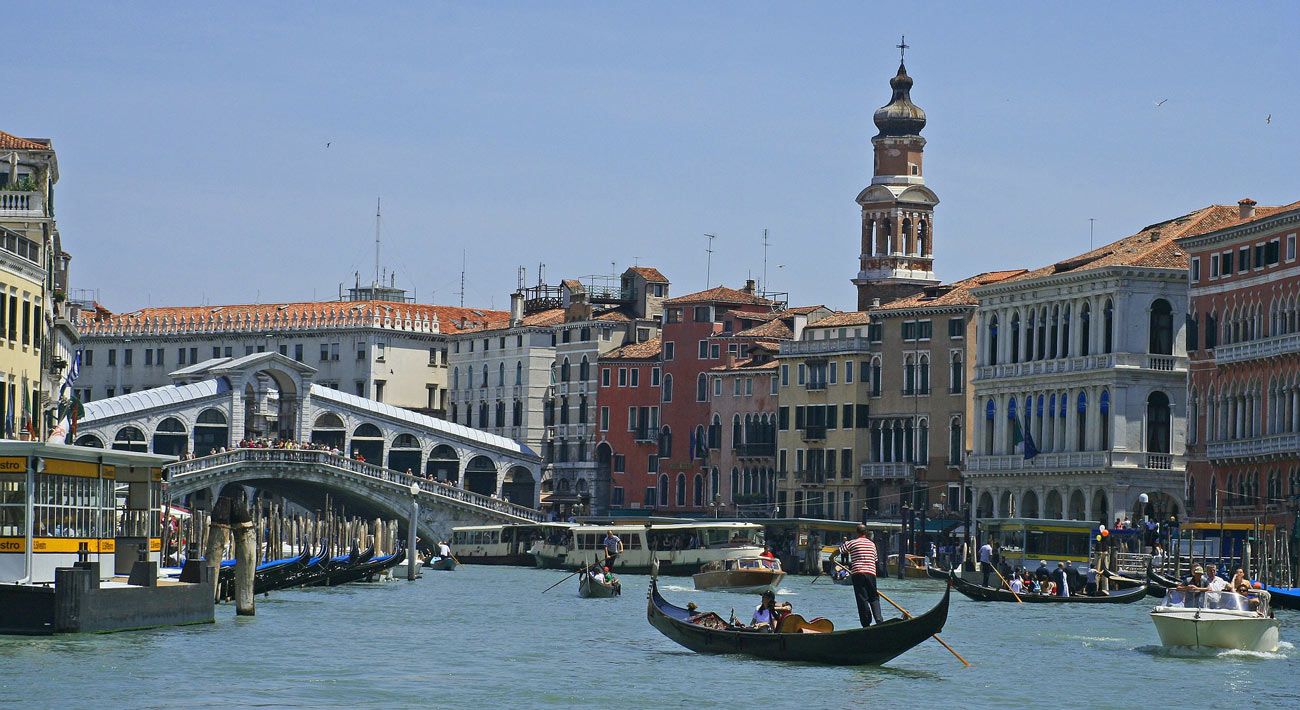
Transfer to Venice. If you’re driving, it’s a 2-hour drive on the A13 to Venice. The route has tolls. If you’re taking the train, it’s an hour and a half on the FR9414 to Santa Lucia train station in central Venice.
I often think Venice is singlehandedly responsible for Italy’s romantic allure, with its winding waterways and canals, arched bridges and amazing architecture.
Since no cars are allowed in the city, it’s an escape from the normal hustle and bustle of blaring horns and angry traffic snarls. Instead, you wander through the narrow cobblestone streets on foot or glide around the waterways on a gondola.
⇒ See our infographic guide to visiting Venice .
Here’s what to see in Venice.
- St. Mark’s Square – The most iconic square in Venice , it’s also home to St. Mark’s Basilica and it is a true sight to behold. It’s very touristy, so I wouldn’t recommend eating in the square, but you can always stop for an overpriced drink.
- Doge’s Palace – This Venetian Gothic style palace is now a huge museum with floors worth of incredible things to see.
- Bridge of Sighs – According to local lore, if you kiss beneath this bridge at sunset, you’ll enjoy eternal love.
- Peggy Guggenheim Collection features masterpieces by Picasso, Salvador Dalí, and Jackson Pollock.
- Murano and Burano – There’s an island in the Venetian Lagoon called Murano, where glass has been made for more than 700 years. Definitely worth a visit.
You will need tickets for a few of the things on the list. Venice is very crowded, almost year round, so it’s not recommended to arrive without tickets to the main attractions, because you could stand in line for hours. Plan ahead and purchase tickets before you go.
The most important ones to secure tickets for are St. Mark’s Basilica and Doge’s Palace, plus a trip out to islands, if you want to do that.
You can book tickets directly through the attraction’s website, or you can use the links below:
- Legendary Venice St. Mark’s Basilica and Doge’s Palace – This tour affords you skip-the-line tickets to both of these popular attractions.
- Murano & Burano Islands Half Day Guided Tour by Private Water Taxi – You can visit these islands by yourself taking the water taxi, but it can be very difficult to get on and off the taxi when there are a lot of people waiting. It’s much easier to do a private tour.
- The 10 Tastings of Venice With Locals: Private Food Tour – Explore food and wine along with facts about Venice.
- Venice Gondola Ride and Serenade – Book ahead to make sure you don’t have to wait in long lines to take the ride you’ve been wanting to take forever.
What to Eat in Venice
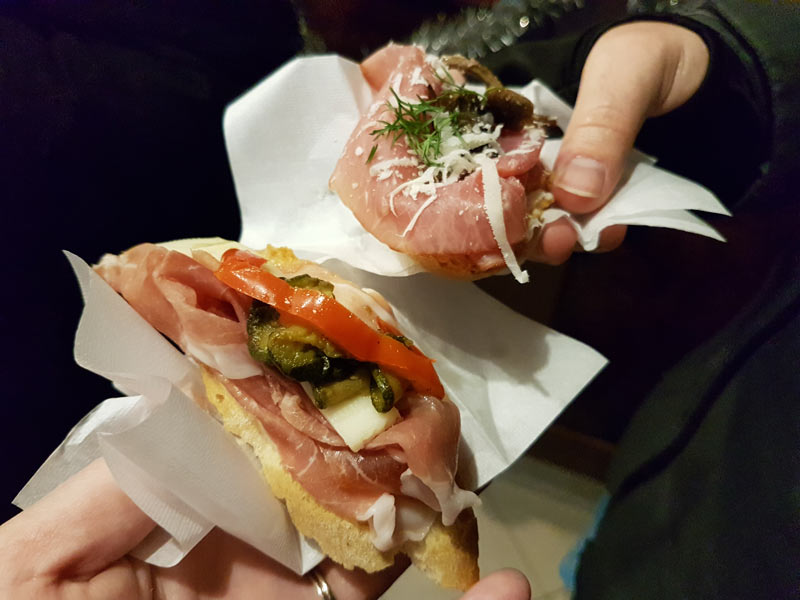
Venice is known for their cicchetti bars. Ciccetti are small snacks or side dishes that are served at the bar in between meals, or even replacing a meal when you’re out with friends. Be sure to grab some cicchetti and an Aperol spritz while visiting Venice.
- Aperol or Venetian Spritz – A spritz is made with 3 parts Prosecco, 2 parts Aperol or Select, 1 part soda, and an orange wedge for garnish.
- Cicchetti – small bites that are typically served in bars alongside a spritz or a small glass of wine.
- Baccala Mantecato – This spread is made from cod, which is soaked and whipped into an airy and light spread that is served on a slice of bread.
- Nero di Seppia – Squid ink pasta
- Sarde in Saor – Fresh sardine fillets marinated in vinegar and served with cooked white onions, and sometimes raisins and pine nuts.
Where to Stay in Venice
The choices of where to stay in Venice are vast, but we can narrow down where to stay in the city to two areas. When you look up hotels on Booking.com, you’re looking at Venice city center.
We narrow that down to the areas around Rialto Bridge and St. Mark’s Square. Below are the only two places you need to know. The first is an apartment-style rental and the 2nd is a hotel.
- Ai Patrizi di Venezia – If you’re staying for 3+ nights, I highly recommend this apartment. It’s in the perfect location, is incredibly comfortable and clean, and has a kitchenette. We sometimes prefer an apartment to a hotel so we’re not being bothered by housekeeping. This place is a gem. | Read Reviews or Book a Stay
- Hotel Londra Palace – If you’d rather stay in a hotel because you like the extra amenities, then Hotel Londra Palace is a great choice. It’s in a very good location, only 5 min walk from St. Mark’s Square, with free wifi and a restaurant. Some rooms have a balcony and an incredible view. | Read Reviews or Book a Stay
- Airbnb: Beautiful 2 bedroom very near Rialto Bridge | Take a look
Unfortunately, now it’s time to fly back home. If you booked a multi-city flight, you can return home from the Venice airport. If not, you will have to fly or take the train back to Rome in order to fly back home.
How to Get Around in Italy
The best way to travel around Italy is by train. You can save money on train travel in Italy with a Eurail pass specifically for Italy. The passes allow you to travel for a specific number of days within a month – from three to eight. See all Italy Eurail passes here .
These passes are meant for non-European passengers only. Order it in advance of your trip and it’s delivered right to your door, so you’re ready to travel when you get there.
Some trains require reservations (high-speed and overnight). So be sure to thoroughly check your preferred trains for rules. As long as there is a train linking each of your chosen cities, you’ll be able to easily travel around the country, and in all of the cities listed here the train drops you off right in the center of the city.
Driving in Italy
If you’re planning on renting a car in Italy, make sure you obtain an International Driving License before you go.
In the United States , you can get one of these at AAA offices as well as from the National Automobile Club, for a small fee. It’s good for 1 year. Italian law requires drivers that don’t have a European Union driving license to show their home country license as well as an International Driving Permit if (or when) they’re pulled over.
The rental car company may not require one to rent, but it’s up to you to have the correct paperwork.
Tipping in Italy
If you’re from the United States, Canada , or another country where tipping is customary, you should be aware that tipping in Italy is not compulsory.
A service charge is often added to the bill, which can be from 10-12%, and it will be noted as a service charge. There can also be fees added for various services, like sitting in on a dining terrace, or getting bread or water for the table.
Be Prepared For Travel Planning is the most important part of any successful trip. Do it the easy way:
🧳 Travel Packing List | ✔️ Why You Need Travel Insurance | ✈️ What to Do Before You Leave Home
- Find and book the best hotel (our favorite booking site is Expedia)
- Research flight options (our favorite tool is Skyscanner )
- Book a tour (we always use Viator to find the best tours)
- Rent a car through Discover Cars (they search the best deals for you!)
There are many ways to experience and enjoy your Italy vacation, now that you know how to plan a trip to Italy. But if the task overwhelms you, rest assured that this 10-day trip to Italy will take you to some of the top places to visit in Italy, and will prepare you for a second visit.
YOU MIGHT ALSO LIKE

8 Best Day Trips from Bologna Italy
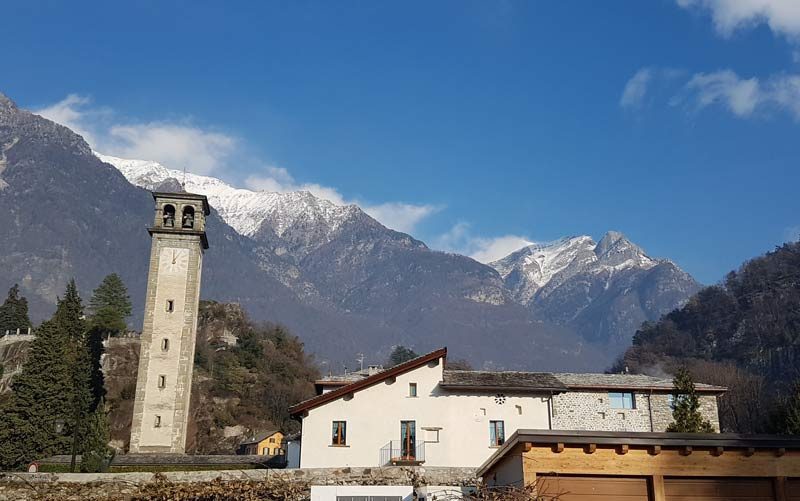
How to Spend A Long Weekend in Valtellina, Italy

Like this post? Why not save it to your Pinterest board for later!

Laura Lynch, creator and writer of Savored Journeys, is an avid world traveler, certified wine expert, and international food specialist. She has written about travel and food for over 20 years and has visited over 75 countries. Her work has been published in numerous guidebooks, websites, and magazines.
Leave a Reply Cancel reply
Your email address will not be published. Required fields are marked *
Save my name, email, and website in this browser for the next time I comment.
- Travel Resources

Navigate forward to interact with the calendar and select a date. Press the question mark key to get the keyboard shortcuts for changing dates.
Navigate backward to interact with the calendar and select a date. Press the question mark key to get the keyboard shortcuts for changing dates.
Italy Trip Planner
Top destinations in italy.

Top attractions in Italy

Other notable attractions

Explore nearby places
- La Massimina-Casal Lumbroso
- Rocca Santo Stefano
- Cerreto Laziale
- Isola Farnese
- Torrimpietra
- Casal Palocco
- Ostia Antica
- Tragliatella
- Castel Romano
- Fonte Nuova
- Lido di Ostia
- Anguillara Sabazia
All related maps of Italy
- Map of Italy
- Map of La Massimina-Casal Lumbroso
- Map of Rocca Santo Stefano
- Map of Ladispoli
- Map of Rome
- Map of Cerreto Laziale
- Map of Gorga
- Map of Isola Farnese
- Map of Acilia
- Map of Torrimpietra
- Map of Maccarese
- Map of Casal Palocco
- Map of Fregene
- Map of Ostia Antica
- Map of Roiate
- Map of Tragliatella
- Map of Palidoro
- Map of Focene
- Map of Infernetto
- Map of Aranova
- Map of Cesano
- Map of Ciampino
- Map of Formello
- Map of Torre Gaia
- Map of Castel Romano
- Map of Fiumicino
- Map of Fonte Nuova
- Map of Lido di Ostia
- Map of Sacrofano
- Map of Anguillara Sabazia
- Map of Riano
Italy throughout the year
- Italy in January
- Italy in February
- Italy in March
- Italy in April
- Italy in May
- Italy in June
- Italy in July
- Italy in August
- Italy in September
- Italy in October
- Italy in November
- Italy in December
Q&A about Italy
Add places from guides with 1 click, collaborate with friends in real time, import flight and hotel reservations, expense tracking and splitting, checklists for anything, get personalized suggestions.
4.9 on App Store, 4.7 on Google Play

Gov. Maura Healey, Mayor Michelle Wu plan to use public dollars to pay for Italy trip
G ov. Maura Healey and Mayor Michelle Wu plan to use public dollars to cover a trip to Italy next week that will include a private audience with Pope Francis, though the total cost of the trip will not be known until its conclusion, according to spokespeople for both officials.
Healey and Wu were invited by the pope to provide a keynote address at the opening session of a climate-focused conference hosted by the Vatican. The governor has pitched the trip as a way to strengthen the state’s economic and diplomatic ties to Italy, which is Massachusetts’ tenth largest trading partner, according to Healey’s office.
Healey spokesperson Karissa Hand said Healey plans to pay for the trip with money from the Massachusetts Tourism Trust Fund , a multi-million dollar account used to promote tourism in the state and help regional tourism councils. It is in-part funded by the tax on gross gaming revenues generated by local casinos, according to state law .
The fund is administered by the Massachusetts Marketing Partnership , which was created in 2010 to coordinate marketing efforts on behalf of the state. The partnership has 11 board members and includes the Office of Travel and Tourism and the Office of International Trade, according to the state.
“The (Massachusetts Marketing Partnership) is the central entity for marketing initiatives on behalf of the commonwealth, including efforts to advance travel and tourism, international trade and economic development. We will not have the cost until the conclusion of the trip,” Hand said in a statement to the Herald.
Healey is traveling to Rome, Italy with her climate chief, Melissa Hoffer, and three aides — a director of operations, the director of scheduling and senior executive assistant to the governor, and Hand, according to the statement from her office.
Healey’s trade trip to Ireland last year cost roughly $83,000 , which was largely covered by state funds and some private dollars.
A spokesperson for Wu, Ricardo Patrón, said the City of Boston plans to cover the mayor’s flights to and from Italy and her hotel stays.
“She’s going in her official capacity as mayor. It’s a work trip for her so we are using public dollars,” Patrón told the Herald Wednesday afternoon.
Wu plans to travel with Oliver Sellers-Garcia, the city’s Green New Deal director, and a communications staff member.
A detailed itinerary for Wu is expected to be released later this week, Patrón said.
Related Articles
- Politics | John Deaton, Warren’s Republican challenger, visits border to ‘truly understand’ immigration
- Politics | Mass. Senate’s $57.9B budget proposal does not cover MBTA operating budget gap
- Politics | Mass. Senate budget looks to invest $250M into transportation fund, source says
- Politics | Pols & Politics: Monica Tibbits-Nutt looks to ‘move forward’ after controversial remarks
- Politics | WRKO’s Kuhner blasts Democrats and migrant shelter policy at rally
A schedule sent out earlier this week by Healey showed the pair meeting with Pope Francis on Thursday at 10:40 a.m. Rome time, or about 4:40 a.m. in Boston.
Healey said she is “excited” to pitch Massachusetts’ climate and economic standing on the “global stage” and to make a case for businesses to grow in the Bay State.
“Massachusetts deeply values our close relationship with Italy and the Vatican City State, and we see this trip as an excellent opportunity to strengthen ties and strategize on future opportunities for collaboration,” Healey said in a statement earlier this week.
At the outset of the trip, Healey and Hoffer plan to attend a business roundtable followed by a meeting with Ambassador to the Holy See Joe Donnelly. Healey offers her keynote address Wednesday, when she will also participate in two panel discussions.
After meeting with Pope Francis Thursday, Healey, UMass Boston Chancellor Marcelo Suárez-Orozco, and researcher Ram Ramanathan will discuss “the sub-regional summits that took place during the course of the summit.”
“The session will end with proposals from all mayors and governors on next steps,” Healey’s schedule said.
©2024 MediaNews Group, Inc. Visit at bostonherald.com. Distributed by Tribune Content Agency, LLC.
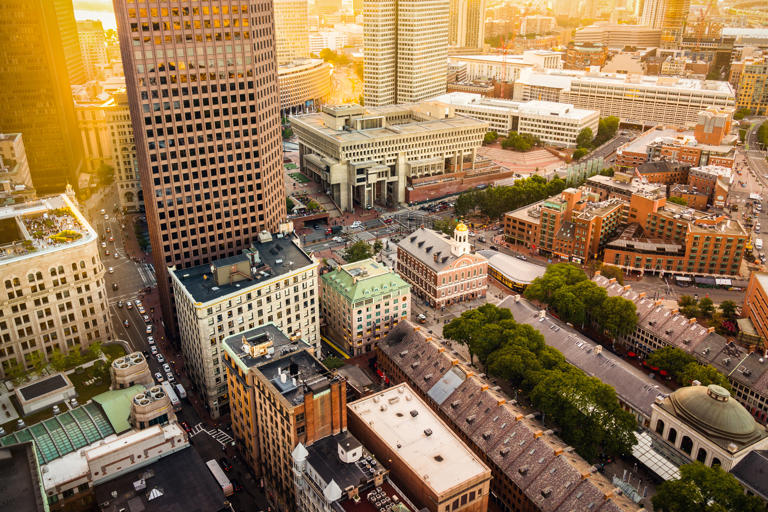
- Italy Tourism
- Italy Hotels
- Italy Bed and Breakfast
- Italy Vacation Rentals
- Flights to Italy
- Italy Restaurants
- Things to Do in Italy
- Italy Travel Forum
- Italy Photos
- All Italy Hotels
- Italy Hotel Deals
- Last Minute Hotels in Italy
- Things to Do
- Restaurants
- Vacation Rentals
- Travel Stories
- Rental Cars
- Add a Place
- Travel Forum
- Travelers' Choice
- Help Center
Where is easiest place to pick up rental car in Milan? - Italy Forum
- Europe
- Italy
Where is easiest place to pick up rental car in Milan?
- United States Forums
- Europe Forums
- Canada Forums
- Asia Forums
- Central America Forums
- Africa Forums
- Caribbean Forums
- Mexico Forums
- South Pacific Forums
- South America Forums
- Middle East Forums
- Honeymoons and Romance
- Business Travel
- Train Travel
- Traveling With Disabilities
- Tripadvisor Support
- Solo Travel
- Bargain Travel
- Timeshares / Vacation Rentals
- Europe forums
- Italy forum

I could re-arrange our itinerary so that we fly into Florence , spend 4 nights there, and then pick up our rental car either in Florence or Siena since we plan on spending 3 nights in Siena. Would this make more sense? If we did this, we would do open-jaw flights , into Florence and home from Milan.
2 replies to this topic

I imagine that when you say airport you are referring to Malpensa.
Also the main car rental companies are located at Centrale Station, which is outside Area C (paid access in the city centre)
Are there car rental companies at Linate? Which would be easier, picking up the rental car at Centrale Station or Linate?
- Navigating Trenitalia Strikes 12:35 am
- 4 night stay 12:33 am
- Rural area for 4 students with no car 12:11 am
- Parking in Rome 12:07 am
- Amalfi coast over-tourism 11:45 pm
- St. Mark’s & Doge’s After Hours Palace Tour 11:18 pm
- Bus services from Trapani / timetable 11:17 pm
- Help with museum tickets please! 11:02 pm
- Advanced reservation required / city pass 10:45 pm
- Group hiking tour to join 10:26 pm
- Last Supper Tickets vs. Guided Tours 10:14 pm
- Solo in Palermo accommodations 9:21 pm
- Identification for Vatican museums and colosseum 9:09 pm
- Your favorite restaurant in Rome? 8:43 pm
- Best time of year to visit Italy 3 replies
- What to Buy in Italy? 5 replies
- BNL D'Italia Bank locations 35 replies
- Train from Milan to Monaco 2 replies
- train from Milan to Cinque Terre 13 replies
- 5 Best Cities to Visit 48 replies
- Frecciarossa vs Frecciargento 13 replies
- simple explanation please for "allora....alora " 6 replies
- Milan to Lucca 9 replies
- Northern Italy - Lake Como & Switzerland 4 replies
Italy Hotels and Places to Stay
- TIPS FOR FIRST TIME TRAVELLERS
- How to use the trains in Italy
- Thinking of renting a car? Read this first
- Ultimate Guide to Driving in Italy
- Tips for travellers to Italy (based on our recent travels)


IMAGES
COMMENTS
As a general rule, for a 3-5 day trip we suggest choosing one destination - a city or region. If you have a week to 10 days then you can plan 1-3 places in either the north OR south of Italy. In a two week trip you could cover 3-4 places and see both north and south. Try not to squeeze too much in.
With its iconic monuments, timeless landscapes and irresistible food, Italy is one of Europe's most alluring destinations. Its historic cities promise thrilling art and architecture at every turn while its varied coastlines and Alpine heights provide a stunning outdoor playground. In fact, the country is so packed with possibilities that it ...
Remember, this plan for Italy travel planning offers a taste of Italy's rich culture and history within a short timeframe. Modify it as per your preferences. If you're more interested in slow-paced vacations, consider focusing just on Rome, exploring the city thoroughly, and embracing the local lifestyle.
The ideal amount of time to set when you planning a trip to Italy is 2 weeks. If you are visiting for the first time, two weeks is a perfect time to explore the most famous cities and also include some day trips. If you have already seen the biggest tourist draws and want to go offbeat, 2 weeks still is an ideal time to set for Italy.
Planning Your Trip. Best Time to Visit: The best months to visit Italy depend on your preferences as a traveler. Springtime and early summer—April, May, and June—sees gorgeous weather, mostly mild temperatures and crowds that range from moderate to dense.
3. Milan to Venice by Train Aerial sunset view of Verona. Although you can travel from Milan to Venice by train in two and a half hours, the same train route provides a made-to-order tour of some of northern Italy's most important art and historic attractions. The train line connects major Roman strongholds, centers of medieval and Renaissance culture, religious landmarks, and great centers of ...
The best time to go to Italy: plan your trip with our seasonal guide. Nov 20, 2023 • 7 min read. Tips & Advice. The 15 best places to visit in Italy, from Venice to the Cinque Terre. Nov 19, 2023 • 11 min read. Read more articles. in partnership with getyourguide. Book popular activities in Italy.
Step 1: Check visa requirements. Based on the geographic readership of this blog, odds are that the vast majority of you will not need a visa to visit Italy for up to 90 days for tourism purposes. This includes citizens of the USA, Canada, the UK, Australia, and of course, anyone from an EU member state. Italy is part of the Schengen Zone, and ...
Embark on a journey through Italy, a land rich with history and culture. Marvel at ancient Rome's iconic Colosseum and the Roman Forum, or navigate the romantic canals of Venice. Visit the Vatican City to witness Renaissance masterpieces, and explore Florence, where art permeates the air. From the bustling streets of Naples to the scenic Amalfi ...
To help you get started, I've listed my top picks for where to go in Italy, and my plan for your best three-week trip. (This list excludes Sicily; see my separate recommended Sicily itinerary.) Of course, not everyone has jobs or lifestyles that allow a three-week trip, so make a plan, prioritizing according to your interests and tastes.
Day 6: Cinque Terre - Vernazza & Monterosso al Mare. Day 7: Cinque Terre - High Trail to Manarola. 3 Days in Florence. Day 8: Florence - Settle in & Food Tour. Day 9: Florence - Explore the City. Day 10: Florence - Chianti Classico Day Trip. Fly Home: Head to FLR Airport. Best Time to Visit Italy.
Italy travel requirements. Before you get too excited about planning your Italy trip, make sure you have the right documentation.. To visit Italy, you need a passport with at least six months' validity from your arrival date. USA and Canadian passport holders can stay in the country for 90 glorious gelato-filled days without a visa.
2.Determine when you want to go. 3.Check the Visa requirements for Italy and obtain one if needed. 4.Ensure that your passport is valid and up to date. 5.Establish a budget for your trip, including accommodation, transportation, food, and activities. 6.Book your flight ticket to Italy. 7.Start planning your itinerary.
A girl admires the Sicilian landscape. (Photo by Giacomo Augugliaro/Getty) Consider your interests, as well as some of the things Italy is famous for, like gastronomy (you could build a trip around dining out or cooking classes), art (Italy has some of the top museums in the world) or exploring a wine region (drive through the hills of Prosecco or Tuscany's wine country).
Add something between $30 and $70 USD per day for food and other small expenses - things such as gelato, a museum ticket, a bus ticket etc. If you intend to buy small gifts and souvenirs in Italy the budget will definitely need to be a bit higher! Renting a car will add to the expenses too.
Now for your 10-day trip to Italy, which includes Rome, Tuscany, Florence, Bologna, and Venice. Note: Your tour starts on the day after you arrive, unless you fly in quite early, otherwise you won't have enough time to see everything in Rome. You need 2 full days to do it.
The travel guide for stress-free Italy travel planning that will help you make the most of your vacation in Italy. Updated December 2023 Planning a trip to Italy can be a daunting experience.
Plan on the go with our free travel app. With Wanderlog's mobile travel planner on Android and iOS, access and edit your trips wherever you go — even while offline. Keep your places to visit, flight/hotel reservations, and day-by-day itineraries for your trip to Italy in our web and mobile app vacation planner.
Plan your perfect day trip from Rome to Cinque Terre by train, effortlessly exploring Italy's stunning scenery. Find out about train ticket prices, travel distances, times, durations, high-speed train options, and schedules. Let us guide you through this green, sustainable, cost-effective scenic journey.
Gov. Maura Healey and Mayor Michelle Wu plan to use public dollars to cover a trip to Italy next week that will include a private audience with Pope Francis, though the total cost of the trip will ...
Hello, I am in the process of planning an itinerary for central/northern Italy for May 2025. This will be for me and my husband, who will be doing the driving. We will use a combination of trains and rental cars.Right now we are planning on flying into/out of Milan.We will spend 3 nights in Milan upon arrival.
Qualifying plan required. Speeds and coverage vary based on device and location. Check www.T‑Mobile.com for details. After allotment, data slows to plan speed (up to 128Kbps for plans without international data service). Activating a new pass ends remaining benefits of prior pass. Usage rounded up to the nearest MB each session.